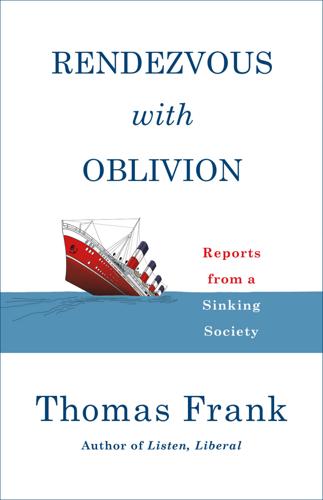
Rendezvous With Oblivion: Reports From a Sinking Society
by
Thomas Frank
Published 18 Jun 2018
Although we are accustomed to blaming it all on subprime loans, about half of the disaster was actually attributable to the less well-known fiasco in Alt-A instruments, which fed the McMansion market—the “liar’s loans” that were securitized and sold off stamped with a big triple-A. The worst recession of our lifetime, in other words, was in large part the result of our superiors’ longing to get themselves a piece of the grandiose. That astounding reversal of the usual chain of cause and effect changed the way I thought about the McMansion. I once thought of writing an essay tracking stylistic changes in the tract-mansion form—how, say, the fake French simplicity of Newt Gingrich’s 1987 McMansion gave way to the complex multigabled fakery of Michele Bachmann’s 2007 McMansion, with maybe a stop in between to contemplate Ricky Bobby’s McMansion in Talladega Nights.
…
I once thought of writing an essay tracking stylistic changes in the tract-mansion form—how, say, the fake French simplicity of Newt Gingrich’s 1987 McMansion gave way to the complex multigabled fakery of Michele Bachmann’s 2007 McMansion, with maybe a stop in between to contemplate Ricky Bobby’s McMansion in Talladega Nights. But what I discovered is that the form doesn’t really change. Yes, the houses get bigger every year, gables and gazebos come and go, but what is really striking about the McMansion is its vapid consistency as the decades pass. What stays the same, and what always gets me when I walk through one of these houses, are the vacuous spaces. The vast stretches of painted Sheetrock. The gaping rooms that are too tall to decorate. The billowing industrial roof. The windowless walls.
…
Hourly wages were dropping, the stock market was rising, taxes for the rich were falling, public housing was not a priority anymore, and in-your-face tract mansions were sprouting everywhere. Today we call those changes inequality, and inequality is, obviously, the point of the McMansion. The suburban ideal of the 1950s, according to The Organization Man, was supposed to be “classlessness,” but the opposite ideal is the brick-to-the-head message of the dominant suburban form of today. The McMansion exists to separate and then celebrate the people who are wealthier than everybody else; this is the transcendent theme on which its crazy, discordant architectural features come harmoniously together.
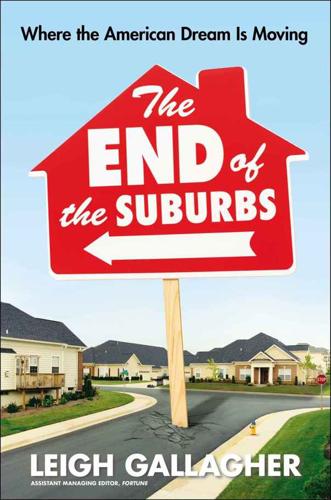
The End of the Suburbs: Where the American Dream Is Moving
by
Leigh Gallagher
Published 26 Jun 2013
Lang, Megapolitan America: A New Vision for Understanding America’s Metropolitan Geography (American Planning Association/Planners Press, 2011). America 2050, a think tank arm: See america2050.org under “Megaregions” (don’t skip the maps). Some foreclosed McMansions in exurbs are finding: Barbara Kiviat, “Reinventing the McMansion,” Time, September 28, 2009; Patricia Leigh Brown, “Animal McMansion: Students Trade Dorm for Suburban Luxury,” New York Times, November 12, 2011; Norimitu Onishi, “Foreclosed Houses Become Homes for Indoor Marijuana Farms,” New York Times, May 6, 2012. Some creative underwater owners: Alyssa Abkowitz, “Room for Rent—in a Mansion,” SmartMoney, February 14, 2011.
…
In addition to representing a place to live, the home had suddenly become a wealth creation machine. It was the American Dream, squared. The homes themselves grew bigger and more ornate—Arcadia Land’s Jason Duckworth refers to this as housing’s “baroque” period—and soon we were identifying them with a new label, the McMansion. Though almost every builder started making them during the housing boom, the invention of the modern-day McMansion dates decades earlier; the first use of the term dates to around 1990 and was soon thereafter defined by the Oxford English Dictionay as “a large modern house that is considered ostentatious and lacking in architectural integrity.” But identifying the demand for a new category of housing in between high-end custom-built homes and tract housing can be credited to Toll Brothers, which came to mass produce the most expensive homes of any builder in the country.
…
A 2011 survey of builders by the NAHB found they expected home size to drop to 2,150 by 2015. The median “ideal home size” for Americans, according to a survey by Trulia, was 2,100 square feet, right around what it was in the 1990s. Demand appears to be waning for McMansions. Only 9 percent of respondents in a separate Trulia-Harris interactive survey in 2010 said they wanted homes over 3,000 square feet—which by McMansion standards isn’t even that big. A majority of respondents, 64 percent, said they preferred homes ranging from 800 to 2,000 square feet. In a state-of-the-industry overview at the 2012 home builders’ show, Boyce Thompson, then the editorial director of the Builder group of magazines for publisher Hanley Wood, told the crowd that 56 percent of builders had changed their design strategy within the past two years to build smaller homes.
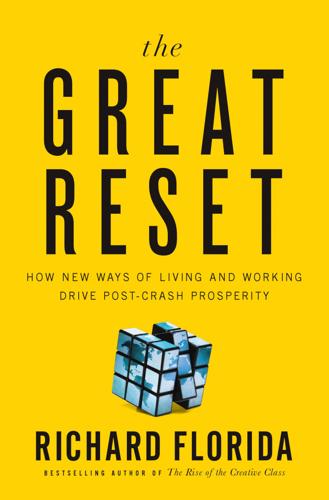
The Great Reset: How the Post-Crash Economy Will Change the Way We Live and Work
by
Richard Florida
Published 22 Apr 2010
Could the once-desirable suburban and exurban communities—with their endless cul-de-sacs and gated McMansions—be on their way to becoming the blighted and abandoned communities of tomorrow? “The future is not likely to wear well on suburban housing,” wrote the urban planning expert Christopher Leinberger in an attention-getting essay in the Atlantic, “The Next Slum?”16 Many of the inner-city neighborhoods that began their decline in the 1960s consisted of sturdily built, turn-of-the-century row houses, tough enough to withstand being broken up into apartments and requiring relatively little upkeep. “By comparison, modern suburban houses, even high-end McMansions, are cheaply built,” he writes.
…
The bank said it was tearing them down to create a “safe environment” for the neighbors. It’s interesting to pause there and note that brand-new homes, standing empty, could be seen as posing a danger to a neighborhood. In fact, just as youths squatted in abandoned tenements in the South Bronx and bohemians homesteaded the empty lofts and factories of Brooklyn, many of the empty McMansions of the Sunbelt are providing shelter to homeless and jobless young people. It’s entirely possible, of course, that the bank just decided it was cheaper to destroy those houses than to keep them up to building code. In some similarly affected parts of the country, the bulldozers may not even be necessary; the homes are collapsing on their own.
…
It’s not so much that regular middle-class people are wanton “overconsumers,” note Harvard professor Elizabeth Warren and her daughter Amelia Warren Tyagi, it’s that we’ve been trapped by the ever-increasing costs of these necessities.4 That’s not completely true, of course. Some people did go hog wild, shelling out more and more for pricier cars and houses. Whether they were bigger (McMansions or Hummers) or better (Lexus Hybrids or renovated brownstones) is beside the point; the fact is that they cost more. The concentration of economic activity and talent in certain cities—New York, Washington, San Francisco, and so on—drove up demand, especially in prime, close-in neighborhoods. It wasn’t enough to buy a nice house; we’d entered the shelter chic, HGTV era—one needed the full complement of a designer Sub-Zero/Wolf/wine refrigerator kitchen; the humongous master bath with heated floor, massive soaking tub, and overhead rainfall shower; the tricked-out walk-in closet with special shelves and compartments for everything from shoes to shirts and hats; the home entertainment theater with in-ceiling stereo and flat panel on the wall; never mind a wine cellar of your very own.

On Paradise Drive: How We Live Now (And Always Have) in the Future Tense
by
David Brooks
Published 2 Jun 2004
They finally bear right into their community—their street has been given the imperious but baffling name Trajan’s Column Terrace—and they pull into their double-wide driveway in front of the two-car garage and next to the adjustable-height Plexiglas backboard. Their home is a mini-McMansion gable-gable house. That is to say, it’s a 3,200-square-foot middle-class home built to look like a 7,000-square-foot starter palace for the nouveaux riche. On the front elevation is a big gable on top, and right in front of it, for visual relief, a little gable juts forward so it looks like a baby gable leaning against a mommy gable. These homes have all the same features of the authentic McMansions (as history flows on, McMansions have come to seem authentic), but everything is significantly smaller. There are the same vaulted atriums behind the front doors that never get used and the same open-kitchen/two-story great rooms with soaring Palladian windows.
…
Suburbs are either boring and artificial, or else they are superficially boring and artificial but secretly sick and psychotic. If you were to judge by the literature of the past century, nobody is happy in suburbia. But driving through the suburbs, one sees the most amazing things: lesbian dentists, Iranian McMansions, Korean megachurches, nuclear-free-zone subdevelopments, Orthodox shtetls with Hasidic families walking past strip malls on their way to Saturday-morning shul. At some point in the past decade, the suburbs went quietly berserk. As if under the influence of some bizarre form of radiation, everything got huge.
…
Most of the new arrivals are just scraping by, scrounging for day labor at the contractor pickup points, lacking health insurance, crammed into split levels four to a room. Others are doing well, running a barbershop with twenty Vietnamese and Filipino coworkers and then driving home each day in a Lexus SUV. If you tour the open houses in a McMansion neighborhood of, say, Great Falls, Virginia, or Orange County, California, you will be stunned by how many of the luxury homes belong to immigrants who own businesses in these light-industrial zones. They have faded pictures of Mom and Dad in China on the grand piano, and Islamic prayer rugs from Lebanon in the basement.
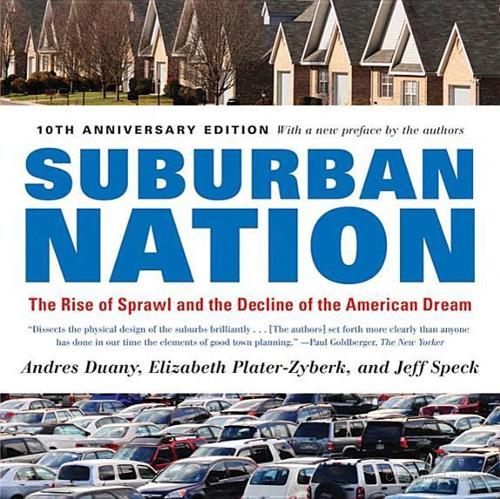
Suburban Nation
by
Andres Duany
,
Elizabeth Plater-Zyberk
and
Jeff Speck
Published 14 Sep 2010
The current model is the fast-food version of the American dream—some call it the McMansion. Its roots can be traced back to the manse on the agricultural estate, or the cabin in the woods. Unlike its predecessors, however, the McMansion is located in the center of a small plot of land, surrounded at close quarters by more of the same. The aesthetic deficiencies of this form of housing are so obvious that a number of well-known architects have made a name for themselves by seeking inspiration in its kitsch. But the real problems here are not aesthetic but practical. Like its culinary counterpart, the McMansion provides excellent value for its price.
…
Americans may have the finest private realm in the developed world, but our public realm is brutal. Confronted by repetitive subdivisions, treeless collector roads, and vast parking lots, the citizen finds few public spaces worth visiting. One’s role in this environment is primarily as a motorist competing for asphalt. The McMansion: independent of its aesthetic qualities, an excellent value Outside the McMansion: a depleted public realm This disjunction between the private and public realm has resulted in a uniquely American form of schizophrenia, suburban Nimbyism. The reason people say, “I like living here, but I don’t want any others like me living here,” is that new suburban development does not provide them with any more of the satisfying private realm that they love; it only gives them more of the degraded public realm toward which they feel indifferent at best.
…
It is the expectation, based upon decades of experience, that what will be built here you will detest. It will be sprawl: cookie-cutter houses, wide, treeless, sidewalk-free roadways, mindlessly curving cul-de-sacs, a streetscape of garage doors—a beige vinyl parody of Leave It to Beaver. Or, worse yet, a pretentious slew of McMansions, complete with the obligatory gatehouse. You will not be welcome there, not that you would ever have reason to visit its monotonous moonscape. Meanwhile, more cars will worsen your congested commute. The future residents will come in search of their American Dream, and in so doing will compromise yours.
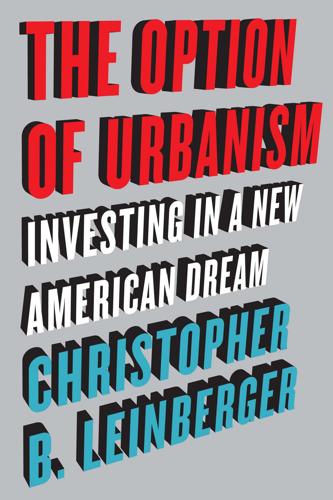
The Option of Urbanism: Investing in a New American Dream
by
Christopher B. Leinberger
Published 15 Nov 2008
And the new tenants will have to heat huge houses that are “outstanding in their fields”—exposed on all sides to the weather, unlike more efficient apartments and townhouses in more urban settings. Another problem is that today’s homes, even high-end McMansions, are cheaply built in comparison to those grand houses and townhouses that were broken up into apartments half a century ago. Hollow doors and wall board are less durable than solid oak doors and lath and plaster walls. Many McMansions have been built with artificial components that do not have a proven track record of long life, such as plywood 146 | THE OPTION OF URBANISM floors using glues that dry out over time and roofs that are built to last no more than ten years.
…
Housing aimed at “lower” income households, those making less than $200,000 per year, will definitely be avoided at all costs. Only those that are “just like us,” known as JLUs in the jargon, will be allowed. MOVE - U P FO R - SALE HOU S ING —This housing will also be in the fa- vored quarter, though is less likely to be in a gated community. This type includes so-called “McMansions” and other oversized homes that provide “value.” Although large, these houses are not especially well built (hollow doors, sheetrock walls, and midlevel appliances). Yet on a price-per-squarefoot basis, they are very reasonably priced. The “curb appeal” of these homes is extremely important; they must look as large and impressive from the street T H E S TA N DA R D R E A L E S TAT E P R O D U C T T Y P E S | 5 5 as possible.
…
Census, metropolitan land use in the latter half of the twentieth century outpaced by at least four times the rate of metropolitan population growth, as we relocated farther and farther from the center to an ever-expanding fringe.15 In all probability, the land consumption in the last two decades of the twentieth century was actually at least six to eight times faster than metropolitan population growth, because the USDA does not consider some of the lowest density development popular over the past generation, such as McMansions on two-acre lots,16 as urban land use. A 2006 Brookings Institution study focused on “exurbia,” the fringe of a metropolitan area that is also not considered urbanized by the USDA, found even more extreme land consumption.17 Completely car-dependent, exurbia has on average fourteen acres of land for every house (compared to 0.8 acres per house for the typical new suburb), meaning that if exurban land consumption is also considered, there has been a far more rapid geometric increase of ten to twenty times faster than population growth during the last two decades of the twentieth century.

The Human City: Urbanism for the Rest of Us
by
Joel Kotkin
Published 11 Apr 2016
. ——— “World Megacities: Growing & Becoming Less Dense,” New Geography, http://www.newgeography.com/content/004823-megacities-growing-and-getting-less-dense. COX, Wendell and PAVLETICH, Hugh. (2014). “11th Annual Demographia International Housing Affordability Survey: 2015,” Demographia, http://www.demographia.com/dhi.pdf. COY, Peter. (2012, November 16). “The Death of the McMansion Has Been Greatly Exaggerated,” Bloomberg Business, http://www.bloomberg.com/bw/articles/2012-11-16/death-of-the-mcmansion-has-been-greatly-exaggerated. CRITSER, Greg. (2010, September 2). “A Pill For Los Angeles? Medicating the Megacities,” Newgeography.com, http://www.newgeography.com/content/001742-a-pill-for-los-angeles-medicating-megacities. CROSSLEY, David. (2009, October 12).
…
“In Northern Italy, the Agony of Aging Not So Gracefully,” New York Times, http://www.nytimes.com/2006/09/22/world/europe/22genoa.html. ROSENTHAL, Jack. (1974). “The Outer City: An Overview Suburban Turmoil in the United States,” Suburbia in Transition, New York: New Viewpoints. ROSS, Benjamin. (2014, May 4). “Disaster in the age of McMansions: America’s dangerous addiction to suburban sprawl,” Salon, http://www.salon.com/2014/05/04/disaster_in_the_age_of_mcmansions_americas_dangerous_addiction_to_suburban_sprawl/. ROTHMAN, Hal. (2003). Neon Metropolis: How Las Vegas Started the 21st Century, New York: Routledge. ROXO, Sergio and HERDY, Thiago. (2013, June 13). “PM de SP usa tropa de choque para conter protestos em escalada de violencia,” Globo, http://oglobo.globo.com/brasil/pm-de-sp-usa-tropa-de-choque-para-conter-protestos-em-escalada-de-violencia-8680923.
…
But besides being environmentally imperative, the shift to denser development is also seen as somehow morally justified. Retro-urbanists—those who long for a return to the traditional pre-1950 city—represent a kind of moral imperative. Typically, this is cast as a choice between 4,000-square-foot McMansions and unbridled consumption on one side and more sustainable high-density urban living on the other. Columbia University’s Earth Institute executive director Steven Cohen speaks of a future “with smaller personal spaces, more frequent use of public spaces, bikes, parks, high-tech media, and constant attention to one’s environmental footprint.”26 Prince Charles’s vision of “eco-cities”—although more medieval than modern in its form—also embraces a similar viewpoint, urging British people to live in smaller spaces and grow their food in community gardens.
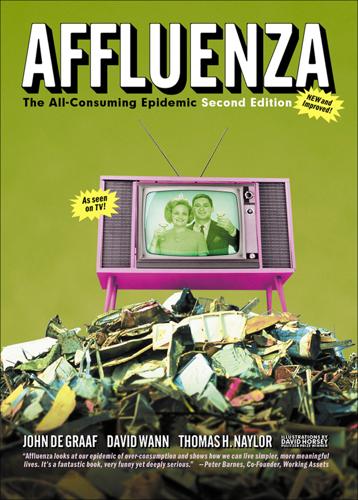
Affluenza: The All-Consuming Epidemic
by
John de Graaf
,
David Wann
,
Thomas H Naylor
and
David Horsey
Published 1 Jan 2001
More than ever, homes have become a symbol of conspicuous consumption, as beneficiaries of the ’90s stock market boom began in many communities to buy real estate, bulldoze existing (and perfectly functional) homes, and replace them with megahouses of 10,000 square feet and more. “Starter castles,” some have named them. Others call them monster homes. On America’s Streets of Dreams, the competition is fierce. McMansions. . . Double McMansions. . . Deluxe McMansions. . . Deluxe McMansions with Cheese. . . Full Garage Deals. . . each one a little bigger and glitzier, popping up like mushrooms in a frenzy of home wars. In places like the spectacular mountain towns of the West, many such megahomes are actually second homes, mere vacation destinations for the newly rich.
…
“In line with growing class polarization, the classic posture of submission is making a stealthy comeback,” charges Ehrenreich, who worked as a maid for $6.63 an hour to research the story. She points out that one franchise, Merry Maids, even advertises its maid services with a brochure boasting that “we scrub your floors the old-fashioned way—on our hands and knees.”14 Doing research for her best-seller Nickel and Dimed, Ehrenreich went a-scrub-bing from McMansion to McMansion in Portland, Maine, working under rules that prohibited her from even taking a drink of water while cleaning a house. She discovered that some homes had hidden video cameras to be sure she stayed on track. She was amazed at what messes people left for her. Especially the children, one of whom exclaimed “Look, Mommy, a white maid!”

City on the Verge
by
Mark Pendergrast
Published 5 May 2017
One mother in the Pittsburgh neighborhood said that her teenage daughter had been raped on the front porch of an abandoned home. It is little wonder that a contemporary article on the Next American City website called Atlanta “a portrait of dysfunction.” The vacant homes in the southern part of the city stood in stark contrast to the gigantic “McMansions” thrown up in wealthy northern Atlanta neighborhoods. These had become so numerous by 2006 that Shirley Franklin issued a temporary moratorium on such massive home building on lots where older, smaller homes once stood. Sometimes the good intentions of white liberals who supported the BeltLine failed to connect with black residents on the southern and western sides of town.
…
They envisioned theater, dance performances, studios, and cultural centers—all fine ideas, but with little connection to the immediate needs of devastated neighborhoods. Richard Bright, a West End minister and health educator, instead noted that the BeltLine “could be a marvelous opportunity to develop comprehensive planning” to address local concerns about housing, health, and jobs. By 2009, there was no need for a moratorium on building McMansions or anything else. Many ambitious projects faltered and failed because of the credit collapse, including several around the BeltLine. The Georgia office of the Trust for Public Land was stuck, to the tune of $25 million, with property not yet acquired by the city that Jim Langford had purchased near the top of the real estate market.
…
The same streets feature some familiar homes, set back behind sweeping lawns, though Latinos rather than African Americans mostly maintain the yards. As this book went to press, my elderly mother still lived in that big brick colonial on the hill, but its next-door twin, built by the same developer in the early 1950s, had been torn down a few years before to make way for a monstrous McMansion. Other gigantic homes have replaced various domiciles throughout Buckhead. In recent years when I accompanied my parents on their morning dog walk, we sometimes went to Garraux Road, an exclusive dead-end street off Ridgewood that is quiet and wooded, with only a rare vehicle. As we walked down the road, we could see a fortress-like home behind a wrought-iron fence with guard dogs.

The Barefoot Investor: The Only Money Guide You'll Ever Need
by
Scott Pape
Published 22 Nov 2016
You can't hide it. It's there on display for everybody to see and judge. But it's the opposite when it comes to money. It's easy to hide your financial flab from the world. I've found that it's often the most financially flabby people who appear to look the fittest. They can have a McMortgaged McMansion, a leased Lexus and a maxed-out platinum credit card, and you'd never know that behind closed doors they're the financial equivalent of pudgy North Korean dictator Kim Jong-un. No-one knows that they're walking around with the financial equivalent of cankles. At least if you've got a muffin top you've got the motivation to buy an Ab King Pro on a late-night infomercial, or sign up for Light n' Easy.
…
I learned a lot about life and money from my grandparents — they were part of the so-called Silent Generation who lived (and thrived) through the not-so-Great Depression. What did that mean in a practical sense? Well, they paid their bills on time … with cash. They saved their money … rather than relying on credit cards. They didn't expect handouts … being on the dole was something to be ashamed of. They lived in modest homes — not McMansions — and they celebrated when they paid them off. And they created a real legacy, which — ultimately — is what this book is all about. Introducing the Barefoot Steps Some finance books are wishy-washy on what you should do. They say things like, ‘Write down your dreams'. Others are written by weirdos who have colour-coded spreadsheets for their undies drawer and whose idea of a holiday is the Bendigo caravan park (communal toilet option).
…
Jerry Seinfeld talks garbage You may have read that Australia has the highest rate of household debt in the world. Yet our massive debts are just a symptom of the real problem: our out-of-control spending. Did you know that Australians on average live in the biggest homes in the world? Our supersized McMansions are 10 per cent bigger than the Yanks' (our nearest competitor in the battle of the housing bulge). Is it because we have bigger families? No. Is it because we have more room to build? No. (If you've ever been to a house-and-land package estate, you'll see that the houses are huge and they take up almost every inch of the block — and they're packed in like sardines.)
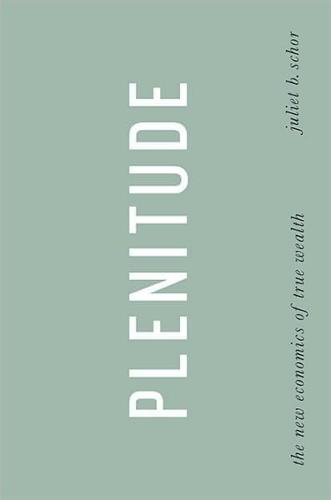
Plenitude: The New Economics of True Wealth
by
Juliet B. Schor
Published 12 May 2010
Just as the high gas prices of 2007 and 2008 spurred a flight into smaller cars and hybrids, the homes that will be built in coming years will not only be more energy efficient, but, on average, they will likely be smaller. Can Americans learn to love them as they have loved their McMansions? Affordability will drive the transition. People want to own homes, but they also want them to be smart investments. There are other potential benefits to downsizing. Some argue that McMansions are just too large for optimal social connection. One housing researcher opined that these oversize homes are “good for the dysfunctional family.” But a simple shrinking of homes isn’t the answer. Instead, we need a repurposing driven by smart design, another quantity-to-quality shift.
…
While the walking home is a curiosity, the beginnings of a trend toward ecovillages and cohousing solve the size dilemma particularly efficiently, by letting residents share spaces that are used only intermittently. Cohousing communities include guest rooms, larger spaces for entertaining, gyms, or even media rooms, pools, and other amenities that sit empty much of the time in McMansions. By combining resources, owners can obtain the benefits of large homes, but at a fraction of the cost. Recent press reports suggest the demand for small houses and living spaces is growing rapidly, given the obvious appeal of life without a mortgage, or a surfeit of stuff. The developer of one green project in Seattle that involves condos atop a Hyatt hotel is betting that the eight-hundred-square-foot size he’s offering will be a winner, as others in the field write the obituary of the “big house.”
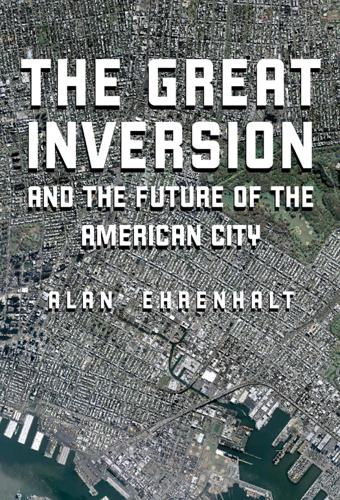
The Great Inversion and the Future of the American City
by
Alan Ehrenhalt
Published 23 Apr 2012
.… It’s just that they’re killing off the architectural style and urban substance that once made this area so attractive.” Sheffield combines “workmen’s cottages” from the nineteenth century and expensive new homes on narrow lots, built to replace older homes that have been torn down. (photo credit 2.2) To an outsider, it doesn’t look that way. The vertical McMansions built in the last few years stand mostly as conspicuous exceptions to the long rows of Victorian cottages. They are conspicuous mainly because there are still relatively few of them. But there is no denying that the biggest story in Sheffield, at least until the real estate bust of 2008, was the arrival of the superrich.
…
Kerry Wood, the onetime star pitcher for the Cubs, became a resident of the neighborhood. So did Penny Pritzker, the Hyatt heiress identified by Forbes magazine in 2009 as the 647th-richest person in America, who built a home of more than eight thousand square feet on Orchard Street, just south of Armitage, a street that some locals have taken to calling “Gazillionaire’s Row.” The McMansions in and around Sheffield don’t look anything like their suburban counterparts. The limits on height and lot size guarantee that. A majority of them are simply tall, narrow glass boxes. Some manage to blend in rather well with the surrounding buildings. But their extravagance is undeniable, even if not all of it is visible to the passerby.
…
The owners of the smaller houses that still dominate the neighborhood can’t really be said to have suffered economically. They bought for next to nothing, in many cases have paid off the mortgages, and could sell them for a fortune. The one depressing fact of life for the owner of a Sheffield cottage is taxes. Some home owners whose buildings fall far short of McMansion status find themselves looking at property tax bills that can run as high as $11,000 a year. The most common complaint that long-term Sheffield residents make about the newcomers, however, is that they don’t have much interest in broader community life. There’s been “a tremendous diminution in participation in civic affairs,” says Martin Oberman, who used to represent Sheffield on the Chicago City Council.

The New Class Conflict
by
Joel Kotkin
Published 31 Aug 2014
Richard Fry and Paul Taylor, “A Rise in Wealth for the Wealthy; Declines for the Lower 93%,” Pew Research Social & Demographic Trends, April 23, 2013, http://www.pewsocialtrends.org/2013/04/23/a-rise-in-wealth-for-the-wealthydeclines-for-the-lower-93; Benjamin Ross, “Disaster in the Age of McMansions: America’s Dangerous Addiction to Suburban Sprawl,” Salon, May 4, 2014, http://www.salon.com/2014/05/04/disaster_in_the_age_of_mcmansions_americas_dangerous_addiction_to_suburban_sprawl; Dan McLaughlin, “In Defense of Homeownership (or, Why Food and Housing Are Different),” Federalist, May 5, 2014, http://thefederalist.com/2014/05/05/in-defense-of-homeownership-or-why-food-and-housing-are-different; Josh Barro, “Everyone Wants to Be a Homeowner.
…
For example, Chris Leinberger at Brookings argues as follows: As people age, and as the percentage of traditional family households drop in the nation as a whole, demand for single-family houses—largely stimulated by young families with children—will also drop. The replacement generation, the millennials, won’t have much use for large-lot homes on the leafy cul-de-sacs that their parents once occupied. Exurbia, he predicts, will largely be populated by poor families crowding into dilapidated, bargain-priced former McMansions in the new “suburban wastelands” that demographic forces will create. Suburbs, not inner cities, will be the new epicenter of inequality, even though the percentage of poor people, as shown above, has remained far higher in the urban core.88 The Coming Conflict over Land Use Real-world behavior, however, is overwhelmingly inconsistent with such fervently held expectations of the coming wave of density.

Multicultural Cities: Toronto, New York, and Los Angeles
by
Mohammed Abdul Qadeer
Published 10 Mar 2016
Another common case of cultural clash is when mega-homes are built in established neighbourhoods of vintage houses and leafy lots. And if these mega-homes bring new ethnic groups, the design dispute can turns into a racial and ethnic confrontation. Variously called monster or mega-homes in Canada and McMansions in the United States, they often are permissible within the existing zoning envelope, except that the existing homes were not built to the maximum of the permissible volume. Hong Kong Chinese moving into the Kerrisdale and South Shaughnessy neighbourhoods of Vancouver ignited the resident English Canadians’ protests.
…
Hong Kong Chinese moving into the Kerrisdale and South Shaughnessy neighbourhoods of Vancouver ignited the resident English Canadians’ protests. The City of Vancouver’s planning department and the city council intervened and mediated between the two communities, coming up with new design guidelines (1993) requiring that new homes have regard for the streetscape and architectural compatibility.46 Los Angeles’s McMansions, often associated with rich Iranians, were regulated through special city ordinances in 2008 and 2010 requiring that they be consistent with the lot size, character of the neighbourhood, and steepness of slope.47 230 Multicultural Cities The neighbouring towns of Markham and Aurora in the Toronto area were petitioned by numerous Chinese homeowners for a change of their house numbers that had the digit four (4).
…
Ontario Municipal Board, Tilzen Holdings Ltd versus Town of Markham (1998), O.M.B.D. no. 319, File no. PL 956623.D950049, Z960134, M970061. Mohammad Qadeer, “Pluralistic Planning for Multicultural Cities: The Canadian Practice,” Journal of the American Planning Association 63, no. 4 (Autumn 1997), 487. “LA Mayor Signs Law to Limit McMansions in Hillsides,” www .catadjuster.org/Forums/tabid/60/aft/11759/Default.aspx. Author’s interview with town officials in October 2009. Qadeer, “Pluralistic Planning for Multicultural Cities,” 487. Shuguang Wang and Jason Zhong, Delineating Ethnoburbs in Metropolitan Toronto, CERIS Working paper no.100 (Toronto: CERIS – Ontario Metropolis Centre, 2013), 20.

Aerotropolis
by
John D. Kasarda
and
Greg Lindsay
Published 2 Jan 2009
China’s airports aren’t the source of its noxious air; its coal-burning power plants are. (China burns more coal than the United States, Europe, and Japan combined.) In the United States, as many as half of our own emissions emanate from “the built environment,” the energy consumed to build and service sprawl. We emit more carbon living in McMansions. For another, air travel’s actual share of our carbon footprints is currently 3 percent and falling (at least in the United States), thanks to a bounty of incremental and potentially revolutionary advances meant to slow and hopefully end its carbon contributions. The next generation of airliners, headlined by Boeing’s 787 Dreamliner, is lighter and more fuel efficient than last century’s models, complemented by new engines that burn quietly and clean.
…
And still no one had thought to make any provisions for what should and what shouldn’t be built beyond the perimeter, because even in the year following Sputnik, no one could foresee what would happen next: Ronald Reagan’s blank checks for Star Wars and the contractors who cashed them would conspire to plow under the hillsides and erect the prototypical edge cities that redefined our urban landscapes. Dulles would be the anchor. The airport’s saving grace was its size, nearly four times the landmass of LAX, and more than all of greater LA’s airports combined. No one could build horse farms or McMansions close enough to complain about the noise, leaving the airport to operate in peace and (relative) quiet. It wouldn’t emerge from its torpor until Reagan took office in 1981. His plan for winning the Cold War—to outspend the Soviets into oblivion—opened a gusher of defense contracts that poured out of the Pentagon and spilled across Virginia in the 1980s.
…
The mountain megas’ airports have added forty million passengers in just the last twenty years, which is why Denver was forced to build DIA and why Las Vegas and Phoenix are both planning second airports. While Lang worries about a lack of nonstop flights, the greater threat to Denver is the tide of migration. Even in the depths of the recession, the aerotropolis was filling faster than expected, was sparser than it should be, and was top-heavy with starter McMansions. Reunion and the surrounding boomburbs have been zoned for forty-four thousand homes and roughly 150,000 people. The nascent aerotropolis is making the same, albeit less fatal, mistakes of a Schaumburg or Fairfax at warp speed, spreading across so many cities, counties, and assorted municipal entities that no one is in a position to fill in everyone on the bigger picture, which is how Cal Fulenwider was able to sell his own in the first place.
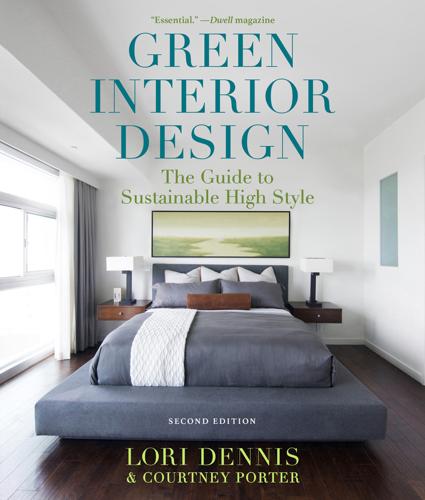
Green Interior Design
by
Lori Dennis
Published 14 Aug 2020
That’s why we look at economic downturns as an opportunity to revisit the lessons of conservation taught to us by our parents and grandparents. This responsible way of thinking has resulted in an interest in smaller, healthier, well-built, energy-efficient homes. In the past few years we’ve seen more than one headline discussing the death of the McMansion. Thankfully, we are now seeing the principles of sustainability becoming mainstream and an increase in behavior that values sensibility over excess. Showing off how much we have is simply out of style. The fact is that the average family size has been declining for thirty-five years. We just don’t need such big homes anymore.
…
Alberto, 82–83 libraries, 137 life cycle, 102, 127 lifestyle, indoor-outdoor, 9, 13, 62, 62, 77, 84 lighting, 1, 72–73, 75, 122, 132 accent lighting, 72 accessories and housewares, 72–73 ambient, 72 artificial, 184–185 automated systems, 74 bathroom, controllable, 73 bathroom, flush-mount chandeliers, 73 bathroom, framing the face, 72 bathroom, LED, 73 bathroom, statement, 73 bathroom, wet-rated, 72 bathroom, working with what you have, 73 bathroom lighting tips, 72–73 bathroom wattage, 73 candles, 74 chandelier, 180 closet, 41 compact fluorescent bulbs, 72 control, 95 cove, 139 dimmers, 13, 74, 180 energy-efficient, 153 floor lamps, 139 fluorescent, 72 home office, 184–185 indirect fluorescent lighting, 72, 184 lamps, 72 layers, 72 LED, 13, 72, 74, 184–185 LED bulbs, 72 LEED, 74 motion sensors, 153 multipurpose spaces, 138–139 natural, 6, 13, 72, 159, 180, 184–185 nighttime, 184 plan, 72 pollution, 153 recessed, 139 recycled, 74 sconces, 139 sensors, 74 small bathroom, 73 solar tubes, 184 sources, 74 sunlight, 159–160 table lamps, 139 task, 72, 180, 184 timers, 74, 139 under-counter lighting, 72 UV, 78 UV rays, 159 light-reducing electrical loads, 13 Ligne Roset, 28 line drying, 129 linens bedding, 162 bedroom, 157 towels, 162 living room, 51–54, 64–65, 71, 116, 133, 134, 135, 135, 137, 137, 138, 138, 139, 139–141, 142, 147–148, 171, 173, 175, 177, 186 formal, 137–138 reorganizing, 139 Livos, 113 location, 168, 173 lofts, 135 Loop, 64 Lori Dennis, Inc., 105, 108, 109, 109, 137 low-density polyethylene (LDPE), 193 Lutron Electronics, 74 M MALIN+GOETZ, 74 manufacturer-consumer relationship, 2 manufacturing environment, 28 marble, 32 materials, 6 mattress. See Bedroom McMansions, 133 media use, 132 melatonin, 156, 159, 164 memories, 65 mercury, 195 metal, mixed, 81 methane, 78 methyl bromide, 117 microwaves, 131 millennials, 2 minimalism, 2, 9 mirrors, 41, 72, 103, 122, 137, 181 Mitchell Gold, 162 Mitchell Gold + Bob Williams, 28 Modern Fan Co., 185 modern farmhouse look steps, 123, 126 attractive opposites, 123 clean lines and contemporary flair, 126 family-centric spaces, 126 neutral color palette, 126 personalizing, 126 modularArts, 109 mold or mildew, 6, 105, 114, 131 cleaning, 192 and dehumidifiers, 192 Molekule, 165 money, 4 monochromatic rooms, 80–81 Mrs.
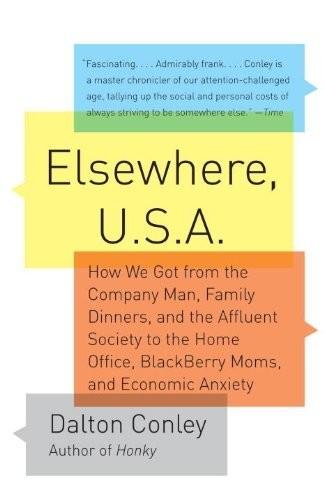
Elsewhere, U.S.A: How We Got From the Company Man, Family Dinners, and the Affluent Society to the Home Office, BlackBerry Moms,and Economic Anxiety
by
Dalton Conley
Published 27 Dec 2008
A tax-deductible home equity loan is savings. Though it costs 50 to 100 grand to redo a kitchen with Miele appliances and a Sub-Zero refrigerator, these are really investments since the data show that kitchen and bathroom remodeling typically retain 97 percent of their cost during resale. Ditto for the house—or McMansion—itself, which has more than doubled in size (and increased in price twenty-fold) since the 1950s. Likewise, the Hummer is tax-deductible (since it is classified not as a car but as a light truck). Not to mention the time-share in the private jet (ostensibly for business use—wink, wink). Even the bacchanal thrown by Wired magazine—replete with custom martinis and corporate goodie bags—is really an investment in customer relations.
…
So things—like meals—that once were produced and consumed in order to satisfy a basic individual human need can sometimes become positional goods, too. One consequence is the increasing role that material goods play as positional goods—something Hirsch didn’t consider. Mrs. and Mr. Elsewhere absolutely have to have the latest iPhone, McMansion, or SUV There’s nothing inherent about an iPhone that makes it a positional good. Some (but not all) of its features are material improvements on previous models. It may save us time and effort to have all of our music, phone numbers, and photos in one handy little gadget. Or it may not, as some users are finding.
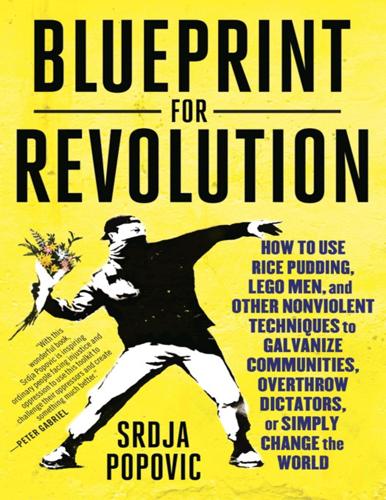
Blueprint for Revolution: How to Use Rice Pudding, Lego Men, and Other Nonviolent Techniques to Galvanize Communities, Overthrow Dictators, or Simply Change the World
by
Srdja Popovic
and
Matthew Miller
Published 3 Feb 2015
In Serbia, for example, everyone told me that it was impossible to stand up to Milošević because he had the army, the police, and the statecontrolled media. In Burma, they told me that their culture of obedience guaranteed that people would never challenge the junta. And when I visit the United States, people constantly complain that all that Americans care about is lling their Walmart shopping carts and mowing the lawn in front of their McMansions. But guess what? Martin Luther King Jr., was from America, monks are leading the demonstrations in the streets of Rangoon, and today Serbia is a democracy. The rst step to building a successful movement, I told the Egyptians, was to get rid of the idea that whatever had happened somewhere else could never be replicated at home.
…
leaders even caught himself cheering on the dictator, gushing (to his embarrassment only moments later), “Go get them, Slobo!” But it was a normal reaction, because when your cave is in danger, you root for the chief to succeed. Even if the guy is a jerk. This helps explain why all forms of violence—whether we are speaking about the killing- elds variety we see in Syria or the protest burning of McMansions by militant environmentalists in the United States—are so much less e ective in bringing about lasting social change than peaceful measures are. Violence scares people, and when people are scared, they look for a strong leader to protect them. And this relates, as does everything else in this book, to the pillars of power.
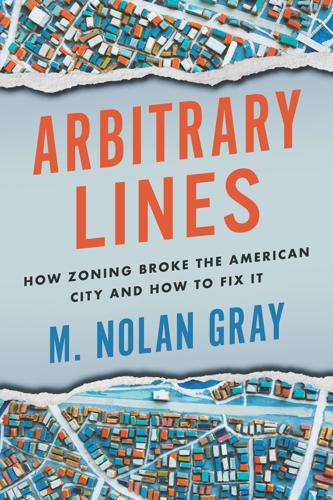
Arbitrary Lines: How Zoning Broke the American City and How to Fix It
by
M. Nolan Gray
Published 20 Jun 2022
As David Owen points out in Green Metropolis, New Yorkers consume far less energy, gasoline, and land per resident while producing less in the way of pollution, trash, and greenhouse gas emissions than their suburban peers.2 If everyone in the borough of Manhattan alone were forced to live at the density of Oklahoma City—one of America’s least dense major cities—it would take up roughly 1,600 square miles of land, an area approximately the size of Delaware. As all those apartment dwellers and transit riders bought McMansions and cars, gasoline and electricity consumption would nearly double, along with attendant increases in emissions and air pollution. If this hypothetical transformation of urban form happened in one instant, it would be appropriately recognized as one of the worst environmental catastrophes in US history.
…
The purpose of these zoning rules is merely to force houses and the lots they sit on to be bigger than they might otherwise have been. This, in turn, raises housing costs, providing local policymakers with a subtle way of excluding less affluent residents by way of setting high minimums. The development pattern that results from these policies—a landscape of McMansions on Potemkin estates—is also the groundwork for American sprawl. Unlike single-family zoning or minimum parking requirements, uptake on minimum floor area and lot size reform has been underwhelming. This is too bad, as reforming these two rules would likely have a profound impact on American development patterns: for cities and towns along the coasts, scrapping minimum floor area requirements would allow the market to meet the burgeoning demand for “microunits” and “tiny houses,” which can be as small as 280 square feet.
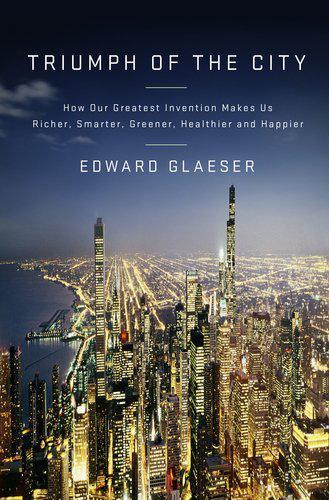
Triumph of the City: How Our Greatest Invention Makes Us Richer, Smarter, Greener, Healthier, and Happier
by
Edward L. Glaeser
Published 1 Jan 2011
This means that we must be more tolerant of tearing down the short buildings in cities in order to build tall ones, and more intolerant of the activists who oppose emissions-reducing urban growth. Governments should encourage people to live in modestly sized urban aeries instead of bribing home buyers into big suburban McMansions. If ideas are the currency of our age, then building the right homes for those ideas will determine our collective fate. The strength that comes from human collaboration is the central truth behind civilization’s success and the primary reason why cities exist. To understand our cities and what to do about them, we must hold on to those truths and dispatch harmful myths.
…
With a government-guaranteed loan, Levitt’s buyers only needed to come up with $400 to buy a home packed with modern appliances and surrounded by leafy space. Levitt’s eight-hundred-square-foot ranch houses now seem tiny and quaint, but to New Yorkers who had grown up in crowded tenements, they were the McMansions of their day. Neither federal housing policies nor interstate highway spending were designed to be antiurban, but they certainly hurt cities. The highway program was meant to connect the country, but subsidizing highways ended up encouraging people to commute by car. Encouraging home buying through the home mortgage interest deduction and government-guaranteed mortgages was meant to correct alleged imperfections in the mortgage market and create propertyowning citizens with a stake in their country.
…
174 William Levitt: Gans, Levittowners. 175 fits of literary condescension: Ibid., 8. 175 “first and foremost functional for his daily needs”: Ibid., 186. 175 possibly apocryphal story: Aaseng, Business Builders, 62. 175 twenty-six separate steps: Ibid. 175 thousands of homes quickly in one area: “Line Forms Early in Sale of Houses,” New York Times, Mar. 7, 1949, p. 21, repr. in Nicolaides and Wiese, eds., Suburb Reader. 176 splurging on housing subsidies: Gans, Levittowners, 13-14, 22. 176 GI Bill . . . for middle-income buyers: U.S. Government Printing Office, Congressional Research Service, A Chronology of Housing Legislation and Selected Executive Actions, 1892-2003, Mar. 2004, www.gpo.gov/fdsys/pkg/CPRT-108HPRT92629/html/CPRT-108HPRT92629.htm. 176 the McMansions of their day: Hayden, “Building the American Way,” 276. 176 disproportionately to middle-class enclaves: U.S. General Accounting Office, Resources, Community, and Economic Development Division, House of Representatives, Community Development: The Extent of Federal Influence on “Urban Sprawl” Is Unclear, Apr. 30, 1999, GAO/RCED-99-87 Research on “Urban Sprawl,” www.gao.gov/archive/1999/rc99087.pdf. 176 overwhelmingly single-family houses: U.S.
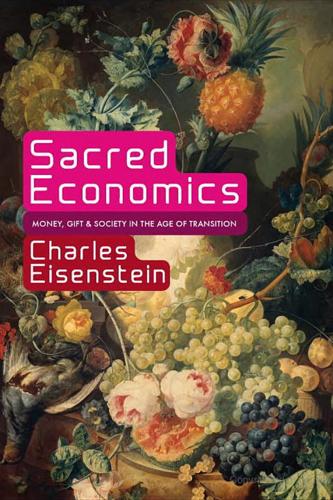
Sacred Economics: Money, Gift, and Society in the Age of Transition
by
Charles Eisenstein
Published 11 Jul 2011
Consider first the armaments industry and the resources consumed in war: some $2 trillion dollars a year, a vast scientific establishment, and the life energy of millions of young people, all to serve no need except one we create ourselves. Consider the housing industry here in the United States, with the enormous McMansions of the last two decades that again serve no real human need. In some countries a building that size would house fifty people. As it is, the cavernous living rooms go unused, for people feel uncomfortable in their inhuman scale and seek out the comfort of the small den and the breakfast nook. The materials, energy, and maintenance of such monstrosities are a waste of resources.
…
Of course, we would lose a vast number of “jobs” as well, but since these are not contributing much to human well-being anyway, we could employ those people digging holes in the ground and filling them up again with no loss. Or, better, we could devote them to labor-intensive roles like permaculture, care for the sick and elderly, restoration of ecosystems, and all the other needs of today that go tragically unmet for lack of money. A world without weapons, without McMansions in sprawling suburbs, without mountains of unnecessary packaging, without giant mechanized monofarms, without energy-hogging big-box stores, without electronic billboards, without endless piles of throwaway junk, without the overconsumption of consumer goods no one really needs is not an impoverished world.
…
I will offer one more piece of evidence for my view: if the growth of money really were driving the technological and cultural meeting of new needs, then wouldn’t we be more fulfilled than any humans before us? Are people happier now, more fulfilled, for having films rather than tribal storytellers, MP3 players rather than gatherings around the piano? Are we happier eating mass-produced food rather than that from a neighbor’s field or our own garden? Are people happier living in prefab units or McMansions than they were in old New England stone farmhouses or wigwams? Are we happier? Has any new need been met? Even if it has not, I won’t discard the entire corpus of technology, despite all the ruin it has wrought upon nature and humanity. In fact, the achievements of science and technology do meet important needs, needs that are key drivers of sacred economics.

The Peripheral
by
William Gibson
Published 23 Oct 2014
COMPLICATED 56. THE LIGHT IN HER VOICE MAIL 57. GOOD CHINA 58. WU 59. ADVENTURE CAPITALISTS 60. BROWNING IN 61. TIMESICK 62. NOT EXPECTED 63. THREW UP 64. STERILE 65. BACKDOOR TO NOW 66. DROP BEARS 67. BLACK BEAUTY 68. ANTIBODY 69. HOW IT SOUNDS 70. ASSET 71. McMANSION 72. HALFWAY POSH 73. RED GREEN BLUE 74. THAT FIRST GENTLE TOUCH 75. PRECURSORS 76. EMULATION APP 77. WHEELIE BOY 78. FRONTIERLAND 79. THE JACKPOT 80. THE CLOVIS LIMIT 81. ALAMO 82. THE NASTINESS 83. ALL THE KINGDOMS OF THE WORLD IN A MOMENT OF TIME 84. SOHO SQUARE 85.
…
“Who are they, these assets?” “She isn’t saying. Ash and Ossian don’t like that. It would be whoever has access to the Gonzales White House, I imagine, not that she’s ever suggested as much.” He picked up his fork. “Eat these while they’re still warm. Then we’ll go down and see Ash.” 71. MCMANSION Pickett’s place, as much as she’d ever see of it, wasn’t what she’d imagined at all. Reece had driven her past a white gatehouse with window slits, but hadn’t turned in. Further along, past a long stretch of white plastic fence, fabbed to look like somebody’s idea of Old Plantation, he’d turned in to a less-important-looking gate, already open, where two men in cammies and helmets were waiting, beside a golf cart.
…
The man who held the leash sat beside her, in the back, and the other man drove, and neither one of them said a word, as they drove her to Pickett’s house, some back way, on single-lane gravel that hadn’t been properly graded. The house had floodlights trained on it, bright as day and ugly as shit, though this was just the back of it. They’d painted everything white, she guessed to tie it together, but it didn’t. Looked like somebody had patched a factory, or maybe a car dealership, onto a McMansion, then stuck an Interstate chain restaurant and a couple of swimming pools on top of that. There were sheds scattered, beside the gravel and further back, and machinery too, under big tarps, and she wondered if he actually built drugs here. She’d figured he wouldn’t, but maybe he didn’t have to give a shit.

Straphanger
by
Taras Grescoe
Published 8 Sep 2011
The city of Gilbert, starved of property tax revenues, announced it was laying off sixty-seven police officers, even as empty ranch-style houses were being converted into methamphetamine labs. In Maricopa, yet another bank had been knocked over; Phoenix, long known as America’s kidnapping capital, was fast becoming the hot spot for such serial bank robbers as the “Raggedy Ann Robber” and the “Bad Hair Bandit.” As I drove through yet another zombie subdivision of deserted McMansions, where the only other vehicle on the road was a sheriff’s van full of convicts in black-and-white-stripe uniforms, a grim-sounding announcer implored listeners to stay out of abandoned houses, and to report any suspicious activity to the local sheriff. To me, it was the sound of the suburban dream turning into a nightmare.
…
The revival of New York, which many gave up for dead in the ‘70s, was the prototypical urban renaissance, and cities like San Francisco, Chicago, Boston, Minneapolis, and Portland never lost their center-city vitality. As the era of cheap fossil fuels that kicked the North American metropolis into a manic state of overdrive comes to an end, the ideology of growth for growth’s sake has also reached its limits. When it comes to houses and cities, bigger is not better. Bigger is more McMansions; bigger is subdivisions so sprawled people never get to know their neighbors; bigger is ever longer, ever more soul-sucking commutes. Bigger is stupider. When I started this journey, the future of smarter transportation in North America looked pretty bright. The way the Obama administration was talking, it sounded as if there was hope for, if not a high-speed rail equivalent of the interstate highway system, at least a transport network more equitably balanced between automobiles and trains.
…
“Frank Lloyd Wright & His Automobiles.” Frank Lloyd Wright Quarterly, 21/1 (Winter 2010). Howard, Ebenezer. Garden Cities of To-Morrow. Cambridge, Mass.: MIT Press, 1965. Jackson, Kenneth T. Crabgrass Frontier: The Suburbanization of the United States. New York: Oxford University Press, 1985. Kalita, S. Mitra. “No McMansions for Millennials.” The Wall Street Journal, January 13, 2011. Kotkin, Joel. The New Geography. New York: Random House, 2000. ——. The Next Hundred Million: America in 2050. New York: Penguin Books, 2010. Logan, Michael F. Desert Cities: The Environmental History of Phoenix and Tucson. Pittsburgh, Pa.: University of Pittsburgh Press, 2006.
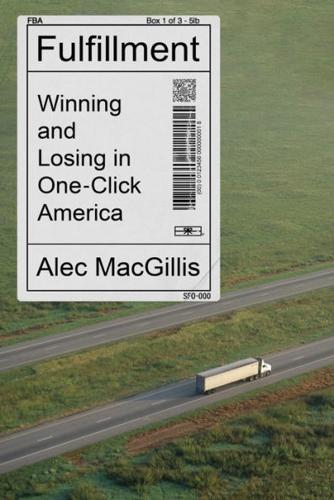
Fulfillment: Winning and Losing in One-Click America
by
Alec MacGillis
Published 16 Mar 2021
Where the produce is rotten but no one is forgotten On strawberry Philadelphia Drive Children in the sprinkler, junkies on the corner The smell of fried foods and pure hot tar Man, you needn’t travel far to feel completely alive On strawberry Philadelphia Drive On a hazy day in 19 something and 5 In that 19 something and 5, Todd Swallows was five, and his family was living at Lake Lakengren, thirty miles west of Dayton, near the Indiana border. As an adult, Todd would marvel that he had grown up in a “gated community,” even if it didn’t conform to the usual connotation. Lakengren, a planned development around a two-mile-long man-made lake, did in fact have a couple entry gates, but the Swallows’ home was no McMansion. It was a simple 1977 yellow-brick rambler bought for less than $90,000. Still, a gated community was a gated community, and it was hard to begrudge Todd the claim: he was staking it not for bragging rights but to underscore the extent of his fall. Life at Lakengren was far from perfect. Todd’s mother had a temper and was not reluctant to resort to corporal punishment when it came to a son who was precociously bright, doing puzzles meant for much older kids, but also hyperactive.
…
The shrunken city was dominated by Black people and white urban professionals who, removed as they were from each other, could find common cause in the liberalism ascendant in the national Democratic Party: pro–civil rights, pro-refugee, pro–safety net. In between, in the declining working-class inner suburbs and declining nearby towns like Eaton and Middletown, were those left homeless by this sorting out, former Democrats and descendants of Democrats who felt as alienated from the liberal coalition in Dayton as from the McMansion conservatives on the periphery. Now these voters had found their home. On March 15, Trump lost the Ohio primary to the state’s governor, John Kasich. But he did better in Dayton’s Montgomery County than in any of the state’s other nine largest counties, racking up big numbers in the most depressed precincts and winning more votes in the county than Hillary Clinton had received in winning her own primary—remarkable given that the county had not gone Republican since 1988
…
Providing additional gravitational pull were the tax breaks bestowed on the data centers by the state of Virginia and local governments, especially Loudoun and Prince William Counties. For these Washington exurbs, the data centers were ideal neighbors: they spun off tax revenue to pay for the deluxe schools demanded by residents moving into new McMansions, but they added few cars to the clogged roads. In that sense, the paltry number of jobs that came with them was, to use tech lingo, a feature and not a bug. They cost between $50 million and $70 million apiece. They went up without identifying details—anyone passing by had no idea for whom, or for what, they were being run.
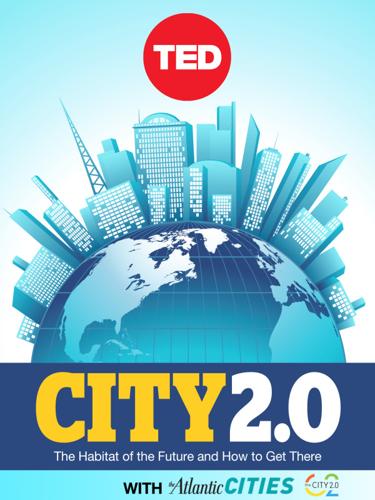
City 2.0: The Habitat of the Future and How to Get There
by
Ted Books
Published 20 Feb 2013
“What will change everything is simply getting your community together,” Roberts says in a video on the You + Dallas website. “Have some friends over at your house and talk about the problems in your community, walk out the door, and start creating solutions.” It really is that simple. * * * Notes 1. S.M. Kalita and R. Whelan, “No McMansions for Millennials,” Wall Street Journal, Jan. 13, 2011, accessed 19 Jan 2013. 2. A. Loukaitou-Sideris et al., Reclaiming the Right of Way: A Toolkit for Creating and Implementing Parklets, (Los Angeles: UCLA Luskin School of Public Affairs, 2012). 3. J. King, “SF Parklets a Homegrown Effort,” SFGate, July 9, 2012, accessed Dec. 29, 2012. 4.
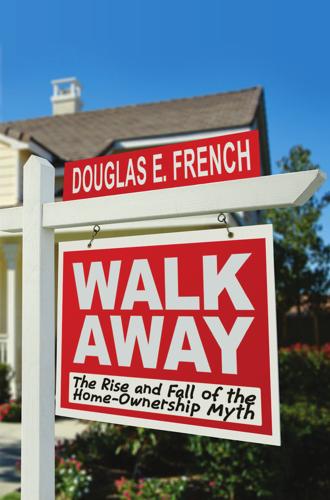
Walk Away
by
Douglas E. French
Published 1 Mar 2011
A point that Murray Rothbard made frequently and that investor Doug Casey often makes today is that one of the benefits to American society if the U.S. government repudiated or defaulted on its debt would be that people would think twice about lending it more money. Politicians will waste money with impunity if the government can continually borrow. The same can be said for individuals. Taking on too much debt to live in more house than a person needs (McMansions as they were called in the boom) is a waste of capital. Mortgage debt is unproductive debt. Robert Prechter, owner of the Elliott Wave International writes in his book Conquer the Crash that the lending process for businesses “adds value to the economy,” while consumer loans are counterproductive, adding costs but no value.
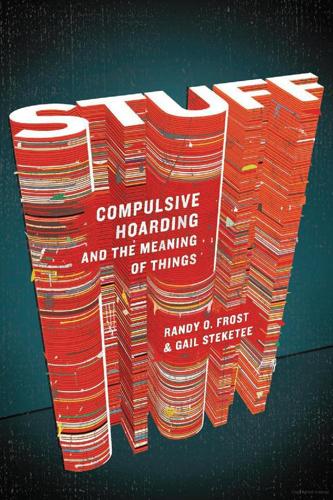
Stuff: Compulsive Hoarding and the Meaning of Things
by
Gail Steketee
and
Randy Frost
Published 19 Apr 2010
They were people who were simply unwilling to part with the beloved treasures that they "might use one day" and that their own homes could no longer accommodate. Alongside this growing appetite for rented storage space, the average house size had increased by 60 percent since 1970—although this trend may be changing since the real estate crash of 2008. Many of these oversize homes, often referred to as "McMansions," also come with their own storage sheds. Perhaps we are becoming a nation of hoarders. A generation earlier, in 1947, the psychoanalyst and humanistic philosopher Erich Fromm forecast a society obsessed with possessions. He argued that humans can be characterized by one of two basic orientations toward the world, "having" or "being."
…
Apartment floor collapses from weight of old magazines. (February 8, 2005). Mainichi Shimbun (Japan). Arndt, J., Solomon, S., Kasser, T., & Sheldon, K. M. (2004). The urge to splurge: A Terror Management account of materialism and consumer behavior. Journal of Consumer Psychology, 14, 198–212. Associated Press. (May 24, 2007). The rise of the "McMansions." Daily Hampshire Gazette. Beaglehole, E. (1932). Property: A study in social psychology. New York: Academic Press. Belk, R. W. (1988). Possessions and the extended self. Journal of Consumer Research, 15, 139–168. ———. (1991). The ineluctable mysteries of possessions. Journal of Social Behavior and Personality, 6, 17–55. ———. (1995).
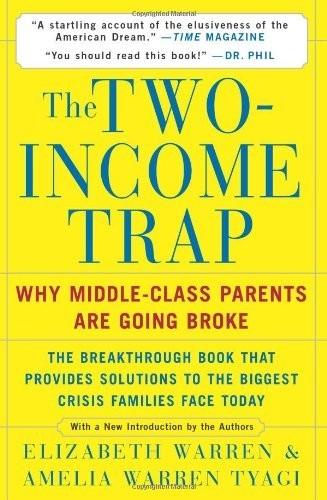
The Two-Income Trap: Why Middle-Class Parents Are Going Broke
by
Elizabeth Warren
and
Amelia Warren Tyagi
Published 17 Aug 2004
According to these experts, housing prices would reverse their forty-year upward trend and drop during the 1990s and 2000s—anywhere from 10 to 47 percent.24 Of course, the over-consumption critics have a ready explanation for why housing prices shot up despite expert predictions: Americans are bankrupting themselves to buy over-gadgeted, oversized “McMansions.”. Money magazine captures this view: “A generation or so ago . . . a basic, 800-square-foot, $8,000 Levittown box with a carport was heaven. . . . By the 1980s, the dream had gone yupscale. Home had become a 6,000-square-foot contemporary on three acres or a gutted and rehabbed townhouse in a gentrified ghetto.”25 Where did so many people get this impression?
…
Was it an “exercise room,” a “media room,” or any of the other exotic uses of space that critics have so widely mocked? No. The data show that most often that extra room was a second bathroom or a third bedroom.29 These are meaningful improvements, to be sure, but the average middle-class family in a six-room house has hardly rocketed to McMansion status. For the Children The finger-waggers missed another vital fact: The rise in housing costs has become a family problem. Home prices have grown across the board (particularly in larger urban areas), but the brunt of the price increases has fallen on families with children. Our analysis shows that the median home value for the average childless couple increased by 26 percent between 1984 and 2001—an impressive rise in less than twenty years.30 (Again, these and all other figures are adjusted for inflation.)

The Glass Hotel
by
Emily St. John Mandel
Published 14 Jun 2020
Say it’s the other hotel, not the one on the mainland with the view of the horizon but the one on that island, that man-made island whose name he can’t remember that’s shaped like a palm tree. In that case, the view is of the stagnant trapped water between the palm fronds, as it were, a gaudy row of McMansions shimmering in the heat on the opposite shore. He liked that suite. It was enormous. Vincent spent a lot of time in the hot tub. But no, that’s memory, not the counterlife. Vincent isn’t in the counterlife. He feels it’s important to keep the two separate, memory vs. counterlife, but he’s been finding the separation increasingly difficult.
…
He feels it’s important to keep the two separate, memory vs. counterlife, but he’s been finding the separation increasingly difficult. It’s a permeable border. In memory, the air-conditioning was so aggressive that she had trouble keeping warm, which was why she was always in the hot tub, whereas in the counterlife she’s not there at all. In the counterlife he turns away from the view of McMansions and leaves the room, walks out into the wide corridor with its elaborately patterned strip of carpeting, into the elevator made of dark mirrored surfaces, which opens unexpectedly into the lobby of the Hotel Caiette, where Vincent sits with Walter, the night manager, on leather armchairs. This is a memory: they came back here a year before he was arrested.

Underwater: How Our American Dream of Homeownership Became a Nightmare
by
Ryan Dezember
Published 13 Jul 2020
Out-of-towners had shown up to build a faux French Quarter in the woods along the barge channel and were asking big-city prices for tiny lots within walking distances of huge swaths of vacant land. It didn’t make any sense. An old man from Mobile paid nearly a million dollars for a shape-shifting, twelve-and-a-half-acre splotch of sand at the mouth of Perdido Pass and wanted to build thirty or so tiled roofed McMansions on it with docks instead of driveways. Even the public beach in Gulf Shores, the center of gravity along Alabama’s coast, was poised for a dramatic makeover. Bob Shallow’s investor group from south Florida had bought out, to the tune of $20 million, a cluster of small businesses at the public beach in Gulf Shores.
…
Over that same period, the inflation-adjusted price of homes rose by more than a third, according to the Bank for International Settlements. Millions of millennials buried in student debt and priced out of ownership spell big trouble for the baby boomers who staked their late-in-life financial health on someone coming along to pay a big price for their McMansions. It’s possible that the big rental investors underestimate how deeply ingrained homeownership is among American aspiration. Plenty of people probably feel like Walt Whitman when he wrote a few years before the Civil War that “a man is not a whole and complete man unless he owns a house and the ground it stands on.”
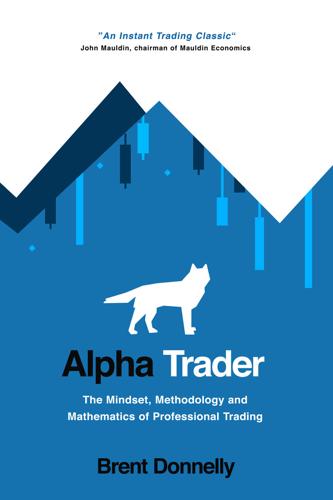
Alpha Trader
by
Brent Donnelly
Published 11 May 2021
I think that Alpha Trader can help anyone – trader or not – become a more effective player of games. It sure did for me. Dr. Ben Hunt Co-founder and CIO Epsilon Theory A QUICK STORY BEFORE WE START FAIRFIELD COUNTY, CONNECTICUT MAY 6, 2010 | 4:55AM The Connecticut air is cold and damp. The trader moves in silence. He steps quietly through the pitch-black darkness of his Colonial McMansion and toward the door. As he disarms the home security system, the BEEP BEEP BEEP of the keypad code he enters is impossibly loud in the quiet of the predawn morning. He steps out of the house, closes and locks the door, and hops into his car. As he rolls down the driveway and into the foggy morning, he inserts a Deadmau5 CD and blasts it at high volume in an effort to wake up and get pumped for another day of trading.
…
Thing is, you don’t like Italian bonds. You think they are priced for perfection. Then again, you know if Italian bonds rip and all your peers deliver returns of 10%+ while you drop 3%, it’s going to look bad. Your wife just delivered your second child and you just upsized to a 5,700 square foot McMansion in Westchester. Maybe it would be better to just plug your nose and buy the stinking Italian bonds. If the bonds crash… You and all your peers end the year down and investors be like: “What are you gonna do! Bad year for macro!” Quite often, herding is caused by career risk. It often feels riskier for a trader to go against the herd than it is for him to just follow along.
…
I hope this demonstrates the way good and bad decisions, great calls, dumb mistakes, and heaps of trader bias can all influence a single trading day. FAIRFIELD COUNTY, CONNECTICUT MAY 6, 2010 | 4:55AM The Connecticut air is cold and damp. The trader moves in silence. He steps quietly through the pitch-black darkness of his Colonial McMansion and toward the door. As he disarms the home security system, the BEEP BEEP BEEP of the keypad code he enters is impossibly loud in the quiet of the predawn morning. He steps out of the house, closes and locks the door, and hops into his car. As he rolls down the driveway and into the foggy morning, he inserts a Deadmau5 CD and blasts it at high volume in an effort to wake up and get pumped for another day of trading.
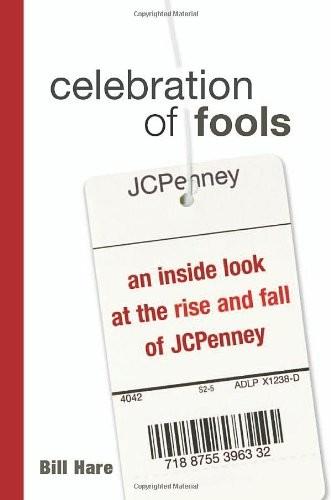
Celebration of Fools: An Inside Look at the Rise and Fall of JCPenney
by
Bill Hare
Published 30 May 2004
To the south were upscale merchants and restaurateurs whose establishments buffered Plano's core of expensive residential subdivisions—some of which were simply separated from shopping strips by tall, thick brick walls and elaborate landscaping. The houses, on surprisingly small lots, were mainly variations on the Texas Gothic McMansion theme, largely distinct from one another only in scale. These choice properties were filling up all of the remaining suitable land and were mostly celebrated by their new owners—"choice," of course, being a relative term. Compared to Connecticut or the Coast, the new Plano palaces could be had for a song.
…
From then on, those in the executive suite increasingly postured as Penney people, paying lip service to HCSC and The Penney Idea while other things dominated their agendas. This culminated in the move to Texas. Running a company built upon the concept of thrift and hard work first, rewards second, the Howell administration tore JCPenney from its roots because they wanted to live in affordable McMansions on golf courses in gated communities. They wanted easy commutes and commodious office suites with custom-made views. They wanted geographic centrality with a good, accessible airport. While the old generations ate, slept, and drank merchandise and stores and put up with any abuse and inconvenience in communion, the Howell crew was dedicated to getting the numbers and driving the stock.

The Trouble With Brunch: Work, Class and the Pursuit of Leisure
by
Shawn Micallef
Published 10 Jun 2014
Recounting their own stories of moving into older historic neighbourhoods not unlike Kensington Market, they write, ‘There was an aesthetic pull of “sentiment and space” to at least some of our neighborhoods: we have no desire to live in the aesthetic landscape of uniform subdivisions of postwar aluminum-sided ranches or post-Reagan McMansions nor the class homogeneity that often accompanies them.’ Throughout their article, Schlichtman and Patch aren’t arguing that the displacement caused by gentrification isn’t a serious urban problem, nor are they condemning the forces that compel middle-class people with what might as well be called a brunching sensibility.
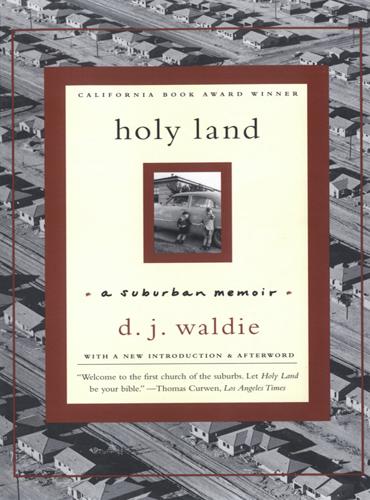
Weimar Culture: The Outsider as Insider
by
Weimar Gay
Published 31 Dec 2001
Mostly, they found enough space to reinvent themselves, although some men finally knew that their work of reinvention had gone badly. Urban planners tell me that my neighborhood was supposed have been bulldozed away years ago. Yet these small houses on small lots resist, loyal to an idea of how a neighborhood could be made. There are plenty of toxic places in the gated enclaves and McMansion wastelands of America. They don’t have enough of the play between life in public and life in private that I see choreographed by design in my suburb. With neighbors just fifteen feet apart, we’re easily in each other’s lives, across fences, in front yards, and even through the thin stucco walls.

Uneasy Street: The Anxieties of Affluence
by
Rachel Sherman
Published 21 Aug 2017
Penny told me, “One of the reasons we’re not in the suburbs, I feel like there’s a lot of show of wealth. … I just, kind of, reject a lot of that.” One of the wealthiest women I talked with lived in a house in the suburbs worth over $12 million. She was appalled by the excesses of her neighbors, who lived in what she called a “McMansion.” She told me of her first visit there, lowering her voice, “The gates opened up to this huuuge house. And the play set—like, we don’t have a play set. But, like, a play set in the backyard was, I’m not going to kid you, bigger than this whole room. It was something you would see out of—I don’t know.
…
She said, “I mean, obviously I think we have a large apartment by a lot of New York standards, but, you know, it’s not got pillars and a curved driveway.” “Pillars and a curved driveway” are rarely seen in New York City; they are an iconic image of wealth in the social imaginary, just as the trailer park described in chapter 1 is an iconic image of poverty. Invoking these comparisons, whether to imaginary rich people or to their actual McMansion-dwelling neighbors, my respondents situated themselves in the symbolically-middle, legitimate space of reasonableness. In making these comparisons, my interviewees subordinated having to showing. That is, having is acceptable as long as it is not shown (or shown off) in particular ways. Yet they faced the possibility of seeming to “show off” in relation to people with less, including coworkers, family, friends, other parents, and household workers.

The Wake-Up Call: Why the Pandemic Has Exposed the Weakness of the West, and How to Fix It
by
John Micklethwait
and
Adrian Wooldridge
Published 1 Sep 2020
MAKE GOVERNMENT DOWDY Prime Minister Gladstone was so bent on saving money that he told his government to use cheaper writing paper. In Abraham Lincoln’s time, Washington was a small southern town that was regarded as a hardship posting for diplomats (you got paid more to serve in the swampy summer). Now it has become one of the richest zip codes in the country, with Ritz Carltons, Tiffanys, McMansions, and Morton’s steak houses spilling into the Virginia and Maryland suburbs. Politicians who used to rush back to their hometowns when they finished their political careers now routinely stay on in the capital as lobbyists and “advisers.” The presidency has become ever more imperial. Presidents sweep through Washington, DC, in giant motorcades.
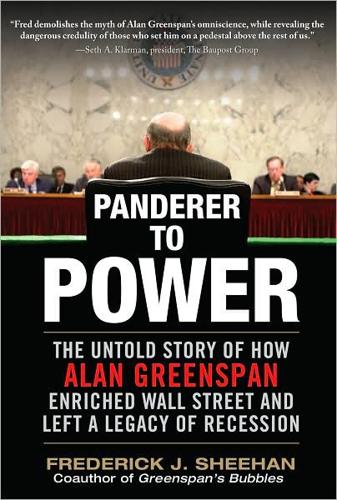
Panderer to Power
by
Frederick Sheehan
Published 21 Oct 2009
Shapiro, “The Boontown Mirage,” New York Times, April 6, 2008. 45 At least, according to foreclosures.roost.com. on June 23, 2009: “There are 1042 homes that are up for auction at an average auction price of $172.” David Rosenberg, then Merrill Lynch’s chief North American economist, observed, “[T]he bottom line is that all those McMansions [the 4,000 or 5,000-square-foot houses] that were bought during this housing boom are going to go the way of the 1973 Lincoln Continental.” Rosenberg went on to say the “housing bubble was the most overowned, overleveraged and oversupplied real-estate market ever and its unwinding will take years.”48 The McMansions are and will continue to draw energy like a 1973 Lincoln Continental. The average new house had grown from 1,500 square feet in 1970 to nearly 2,400 square feet in 2004; 90 percent of new houses in 2004 were equipped with central air conditioning.49 The houses were getting bigger, but they were not big enough.

Giving the Devil His Due: Reflections of a Scientific Humanist
by
Michael Shermer
Published 8 Apr 2020
In like manner, Frank continues by example, the Brobdingnagian rack of antlers on the North American bull elk may intimidate other males competing for status and mates, but it endangers the species by decreasing efficiency of escape from wolves and other predators through thickly branched forests in which said rack would become entangled. This principle of individual success versus collective failure is so important to Frank that he goes so far as to predict that his fellow economists will, in time, come to see Charles Darwin as the most important economist in history. The human analogue of tails and antlers for Frank are McMansion homes, expensive business suits, high-heel shoes, and extravagant coming-of-age parties. Much of his thinking here is derived from research conducted by behavioral economists, who report that relative position on the economic ladder – “positional rank” – matters more than absolute value to most people.
…
The University of New Mexico evolutionary psychologist Geoffrey Miller makes a strong case for just such selective effects in his book The Mating Mind.20 Sexual selection, he argues, has driven organisms from bowerbirds to brainy bohemians to engage in the creative production of magnificent works in order to attract mates – from big blue bowerbird nests to big-brained orchestral music, epic poems, stirring literature, and even scientific discoveries. Those organisms that do so most effectively leave behind more offspring and thus pass on their creative genes into future generations. Thus, contrary to what Frank argues, a viable case can be made that the evolutionary arms races he so detests – men’s suits, women’s high heels, McMansion homes, and elaborate coming-of-age parties – are products of a larger system that drives our species to be so successful. By carrying out the biological analogy into political policy, if anything we should be rewarding the most ostentatious displays of power, prestige, wealth, creativity, health, vigor, and intelligence with tax breaks and even subsidies!

The Rise and Fall of American Growth: The U.S. Standard of Living Since the Civil War (The Princeton Economic History of the Western World)
by
Robert J. Gordon
Published 12 Jan 2016
The differences of wages, and the lack of difference of productivity, made the shift to Asian imports inevitable: When everybody went offshore to the Orient, we opened Pandora’s box. After that, you couldn’t manufacture clothing without being in Asia. You can never shut that box and say we can go back to where we were. It’s open. It’s done. It’s finished.32 FROM LEVITTOWN TO MCMANSIONS: THE POSTWAR EVOLUTION OF HOUSING By 1940, the American housing stock had advanced a long way from the simple, isolated dwellings of 1870. Urban housing units by 1940 were networked with the five basics of electricity, gas, telephone, running water, and sewers. None of this existed in 1870, except for gas and water in a few upscale urban neighborhoods.
…
The increase in the real value compared to median sales price mainly seemed to happen in the 1980s. In the twenty-five years after 1990, the size of the median single-family house continued to creep higher, reaching 1,900 square feet in 1990 and 2,364 square feet in 2013. Half the houses by definition were larger than the median, and the largest became known as “McMansions”—both those in older suburban neighborhoods, where they replaced smaller “teardowns,” and those in remote, often gated, communities on the fringes of metropolitan areas. Between 1992 and 2013, the fraction of newly constructed homes with four bedrooms or more increased from 29 percent to 44 percent, of those with three bathrooms or more from 14 percent to 33 percent, and of those with a garage holding three or more cars from 11 percent to 21 percent.36 The trajectory of house prices up for most of the postwar period and down after the 2006 peak of the 2001–6 housing price bubble has split the generations in their amount of wealth.
…
Most residential structures last almost forever, and the topography of urban and suburban America allows the tracing of the transition from the Georgian townhouses of the early nineteenth century to the Queen Anne Victorians of 1880–1900 to tiny and forbidding Levittown structures of the early postwar years to the McMansions of today. Most residential construction has been on new sites, and relatively little has been torn down.6 Structures last for a long time, but the life of equipment is shorter—and the implication of this leads inexorably to the conclusion that the “user cost” of equipment capital is much higher than for structures simply because equipment does not last as long and thus has a higher depreciation rate.

So Sad Today: Personal Essays
by
Melissa Broder
Published 15 Mar 2016
While I’ve never gotten paid for having sex with any gross people, I have been a sex worker of sorts. My first office job was as the administrative assistant of a Tantric sex nonprofit, which we’ll call “Electric Yoni.” Such places exist, and they exist just north of the Golden Gate Bridge, through the rainbow tunnel, where McMansions meet divination on Highway 1, Marin County, California. I arrived at the job fresh off four years of psychedelics, deep in woo-woo, talking about energy, the Tao, and telekinesis—believing that an outside fix, an amethyst crystal, the proper measurement of snake oil could save me from myself. Every day I commuted back and forth from my apartment overlooking a crack dealer who swung a golf club in the lower Tenderloin, San Francisco, over that bridge, feeling sort of blessed and sort of miserable.
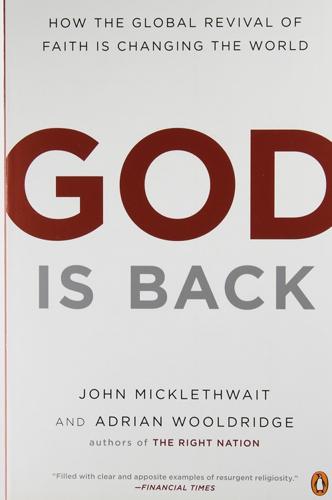
God Is Back: How the Global Revival of Faith Is Changing the World
by
John Micklethwait
and
Adrian Wooldridge
Published 31 Mar 2009
And while Continental Europe celebrates social solidarity and Asia values extended family ties, Americans fall back on themselves: they spend some $700 million on self-help books every year.16 The United States is the first country in history to classify more than half its population as suburban. That brings every material convenience from two-car garages to spacious rec rooms. But suburbs can also display a soul-destroying homogeneity—from the cookie-cutter McMansions to the anonymous big-box discount stores. Three decades ago Jane Jacobs, an admirer of traditional cities, observed that “every place becomes more like every other place, all adding up to Noplace.”17 Tom Wolfe remarked in A Man in Full (1998) that “the only way you could tell you were leaving one community and entering another was when the franchises started repeating and you spotted another 7-Eleven, another Wendy’s, another Costco, another Home Depot.”
…
“Evangelical” is no longer a code word for an uneducated hick. The more that business tycoons and national celebrities are willing to identify themselves as Evangelical, the more rank-and-file workers are happy to attend Bible groups and talk openly about their faith. THE PHILADELPHIA STORΥ If religion seems to work in the McMansions and office suites, it also addresses very different issues at the other end of American society. Philadelphia is about as different as you can get from Houston or Colorado Springs—a proud Northeastern city that is steeped in American history and divided into long-established neighborhoods. If Houston’s problem is unrestrained growth, Philadelphia’s is relentless decline.
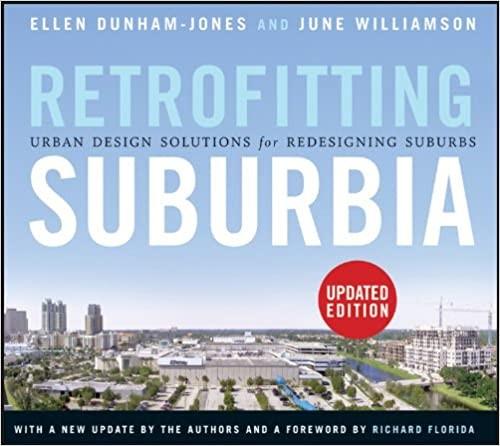
Retrofitting Suburbia, Updated Edition: Urban Design Solutions for Redesigning Suburbs
by
Ellen Dunham-Jones
and
June Williamson
Published 23 Mar 2011
In November 2009, the city of Seattle expanded its existing backyard cottage ordinance beyond the pilot program (Chapter 2) to all single-family zoned lots that are at least 4,000 square feet. More than two dozen other municipalities in Washington state have passed similar ADU ordinances, as have many in Oregon. And, unlike the recent trend of Mc-Mansioning in older subdivisions, permitting ADUs is undeniably more suited to the times; environmental awareness and economic and demographic trends alike support downsized dwellings. The incremental nature of change through re-inhabitation may lead to seemingly more authentic places in the long run, but they are less likely to catalyze larger redevelopment plans.
…
She suggested that these would inspire the new Cottonwood’s declension of urban, outdoor spaces at the center of the site toward its less dense, open spaces and greens at the edges and distinguished between how the city’s historic places were enlivened by people rather than by a dozen paving materials and McMansion gables—common contemporary means of evoking tradition. Longson reiterated how this particular site’s history as a place of gathering and dining would be amplified by the new plan to better serve today’s community. Landscape architect Alan Ward of Sasaki Associates described the visual and ecological qualities of the open spaces.
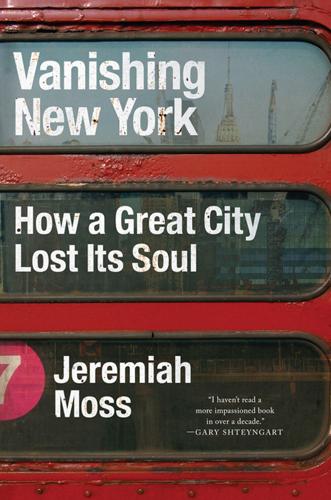
Vanishing New York
by
Jeremiah Moss
Published 19 May 2017
We lost the gorgeous little Variety Photoplays, a theater that opened as a nickelodeon in 1914, went XXX in the 1960s, starred in Taxi Driver, became a jack-off house for gay men seeking liberation, went off-Broadway legit, got bought by NYU, lost the fight for landmarking, and was demolished in 2005 for a heartless glass tower by the Toll Brothers, infamous pioneers of mass-produced McMansions, the worst of suburban luxury schlock. I can’t list them all. But if you ask me to name the most painful loss, at the moment of this writing, I would say it is De Robertis Pasticceria & Caffe. A perfectly preserved Italian-American pastry shop, unchanged on First Avenue since 1904. One day in 2007, I sat down to chat with Annie De Robertis, who first went to work for her grandfather at eleven years old, folding cake boxes and filling cannoli.
…
Around 2005, the billionaire “King of Diamonds” Lev Leviev and real estate magnate Shaya Boymelgreen bought the Batcave with plans to turn it into “Gowanus Village,” a complex of luxury apartments and townhouses. The NYPD raided the place and tossed out the squatters. It will now become Powerhouse Workshop, a gritty-glitzy center for the arts. In 2009, the Bloomberg administration gave a sweetheart deal to the Toll Brothers, creators of the suburban McMansion. Toll asked the city for a “spot rezoning” to turn a three-acre chunk of Gowanus into a tract for a large luxury residential building. The city obliged. When the U.S. Environmental Protection Agency designated the area as a Superfund hazardous waste cleanup site and Toll backed out, the Lightstone Group took over and built a residential mega-complex with amenities like yoga and wine tasting, plus a waterfront “esplanade park” complete with boat launch and “water access point.”
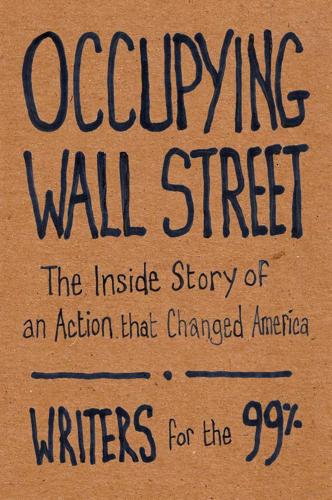
Occupying Wall Street: The Inside Story of an Action That Changed America
by
Writers For The 99%
Published 17 Dec 2011
Though many in their Westchester town had lowered their flags to half-mast when Barack Obama was elected president, Ivanya Alpert and her husband, Dmitri Laddis, see Occupy as a sign that a more promising politics is emerging. They are tired of their kids’ class sizes growing, due to budget cuts, as rapidly as their neighbors expand their McMansions. Their local public pool was sold off to a private bidder because the town couldn’t afford to keep it open every summer. Alpert and Laddis spent their one date night of the year in Zuccotti Park. A group called Parents for Occupy Wall Street, which began with a Family Sleep-Over in Zuccotti Park in October, quickly became a national phenomenon, reaching as far as Honolulu.
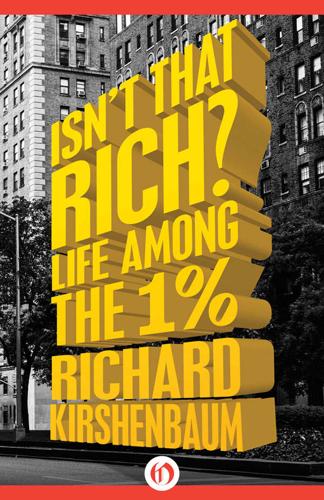
Isn't That Rich?: Life Among the 1 Percent
by
Richard Kirshenbaum
and
Michael Gross
Published 9 Jun 2015
While some friends remain passionate about the surfing lessons, the $100-a-pound lobster salad (from you know where), and the purple-streaked Sagaponack sunsets, there is a distinct group of people using their Hamptons estates less and less, with no plans either to sell or rent. “Whole neighborhoods are on timers,” said a busy housesitter I ran into in the local hardware store. “At nine fifteen, it lights up like the Christmas tree at Rockefeller Center.” As Dana and I were driving home from the party, we passed by a neighbor’s house, a recently assembled McMansion with turreted peaks and outsize turn-of-the-century demilune windows. “Have you ever met them?” Dana asked me. I recalled popping by with a bottle of French rosé when the couple first moved in. “Yeah,” I said, “when I took over the housewarming gift.” “I’ve never met them.” She shrugged, turning onto our property.
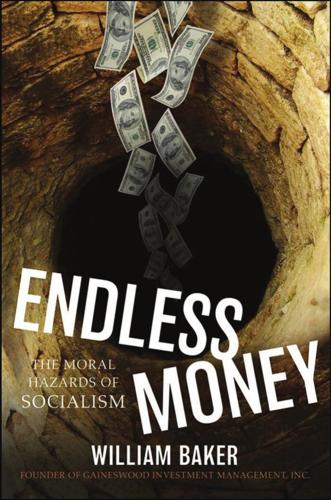
Endless Money: The Moral Hazards of Socialism
by
William Baker
and
Addison Wiggin
Published 2 Nov 2009
Although the clock could never be turned back, the societal impact that modern birth control (and abortion) had upon family formation and savings has been subversive. Affluent baby boomers uniquely would worship at the alter of consumption early in life, deferring marriage. Then, thanks to government policies that subsidized housing in multiple ways, they would stretch already thin balance sheets to invest in McMansions and second homes that carried mortgages payable well into old age. The more plebeian of that generation would not miss out either, leasing cars, maxing out credit cards, and eventually grabbing for the brass ring through variable rate interestonly primary mortgages augmented with home equity loans that could extract any accumulation of net worth to be devoted to more pleasurable ends.
…
We are now feeling the reverberations in Social Security, the demographic implosion of Europe, Russia, and even China (with its one child limitation). It may even partly explain why the mortgage crisis occurred in the present time, for late family formation of the baby boomers along with the worship of material gain led to the McMansion craze as this generation hit its peak income level of 50-something. How many 30-year mortgages were purveyed to 45-year-olds who have inadequately saved (consuming through their extended youth) but plan to retire at age 65, much less fund college tuitions in their golden years? Like the wonderful mental elevation experienced from the first hit off a sensimellia-filled bong or the snort of a line of cocaine, the “me” generation hopes for immediate gratification.

Affluenza: When Too Much Is Never Enough
by
Clive Hamilton
and
Richard Denniss
Published 31 May 2005
Today, though, newspapers, commentators and political leaders speak as though the 135 AFFLUENZA imagined financial difficulties of the wealthy are the result of hard times rather than inflated expectations. The problem then becomes a matter of public concern. The real concerns of yesterday’s poor have become the imagined concerns of today’s rich. Struggle Street, it seems, has become crowded; the trouble is the new residents want to build McMansions there. One effect of this conflation of the poorest citizens’ circumstances with those of the wealthy majority is to reinforce a widespread belief that times are difficult—despite the fact that we are richer than we have ever been and much richer than the vast majority of people in the world. Deprivation syndrome persuades politicians to distort policy to ‘reduce the burden of taxation’ and to increase welfare payments to middle-class households that are living lives that would, in other places and at other times, be regarded as luxurious.
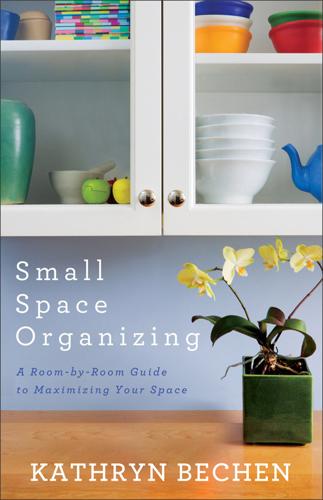
Small Space Organizing: A Room by Room Guide to Maximizing Your Space
by
Kathryn Bechen
Published 1 Jan 2012
And according to the Wall Street Journal in 2009, for the first time in twenty-seven years, home buyers opted for smaller homes. CNN Money reports 7 percent smaller—or one average-sized room. We’re rethinking whether or not we really want a huge home, a big yard, and all the “stuff” that goes with that lifestyle. Do you? I can comfortably say, I don’t. You see, I can admire beautifully designed and decorated “McMansions” with the best of them. I have toured and written about them, organized them for clients, and had close friends and colleagues who live in them. But I also know, from hearing the comments of homeowners who dwell in large houses, that the cost—economically, personally, and professionally—of paying for, cleaning, and maintaining a big home can be phenomenally restrictive rather than life-enhancing, at least for some people.
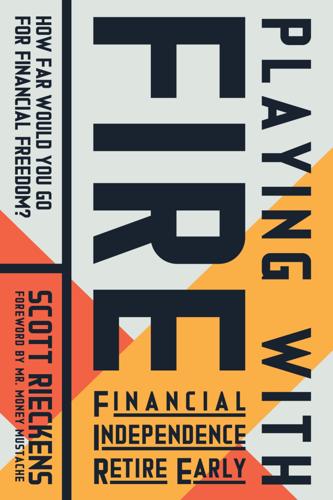
Playing With FIRE (Financial Independence Retire Early): How Far Would You Go for Financial Freedom?
by
Scott Rieckens
and
Mr. Money Mustache
Published 1 Jan 2019
It’s about finding meaning outside of work and using money as a tool — I like to picture it as a lasso — to harness that meaning in daily life. This is the beauty of FIRE: Once you see how “stuck” that luxurious, consumeristic life is, you can’t unsee it. In fact, you notice it everywhere you look: the obligatory holiday parties, the roadside billboards for car financing, bumper-to-bumper commuter traffic, the new McMansion development down the road, the melancholy that sets in every Sunday evening. Likewise, once you taste a truly free life, untethered to a schedule or a paycheck or a career ladder, you can’t untaste it. Once you ask yourself the most important questions — What do I want to do with my time, and what makes me happiest?

Meet the Frugalwoods: Achieving Financial Independence Through Simple Living
by
Elizabeth Willard Thames
Published 6 Mar 2018
Based on the facts that, at the time, over 65 percent of units in Cambridge were rented and rental prices in the area were high and climbing higher, we’d hatched a plan to someday flip whatever we bought into a rental property. And this house, located in the rapidly gentrifying neighborhood of Inman Square, was ideal because it was a rare exception: a single-family home with two stories and a basement, four bedrooms, two baths, and over 1,600 square feet. It was, by Cambridge standards, a McMansion. It was also ugly, had negative curb appeal, was located behind what had formerly been a crack den (not in a hyperbolic sense), and it showed like something out of a ’70s sitcom that never made it past the pilot episode. I’m talking lace doilies on every surface, enough bleeding crucifixes to scare the former Catholic in me, and family photos covering so much wall space I could barely tell what the living room paint color was (probably for the best, as it turned out).

Numbers Don't Lie: 71 Stories to Help Us Understand the Modern World
by
Vaclav Smil
Published 4 May 2021
Will the long-term need to limit global warming eventually lead to something unthinkable? I am referring to the most economically sensible choice, and the one that would make the greatest, longest-lasting contribution to reducing the carbon burden of heating: limiting the size of houses. We could do away with McMansions—mass-built houses with masses of floor space—in North America. Doing away with similar houses in the tropics would save on the opposite expense—on energy currently wasted on air conditioning. Who’s up for that? Running into carbon In 1896, Svante Arrhenius, of Sweden, became the first scientist to quantify the effects of man-made carbon dioxide on global temperatures.

The Butcher's Guide to Well-Raised Meat: How to Buy, Cut, and Cook Great Beef, Lamb, Pork, Poultry, and More
by
Joshua Applestone
,
Jessica Applestone
and
Alexandra Zissu
Published 6 Jun 2011
Livestock aren’t the same 24 thing as wild animals. If we didn’t want them for dinner, they wouldn’t be here. And if we released them all into the wild in a mass vegan fantasy, they wouldn’t survive. This is an important thing to understand. Also important: no matter how you raise them, livestock, like McMansions, aren’t the most environmentally friendly things going. They require a lot of water, food, and land. They create greenhouse gases and contribute to global warming. But most Americans aren’t going to stop eating meat entirely. And the argument can be made that tofu from pesticide-intensive, genetically modified soy crops isn’t hugely eco, either.
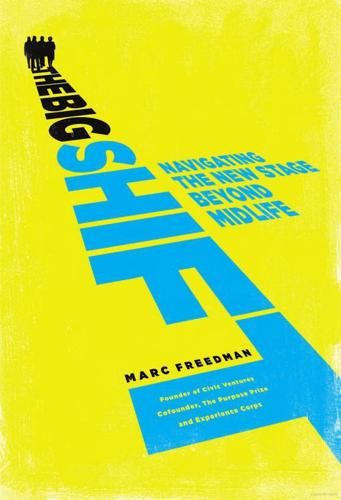
The Big Shift: Navigating the New Stage Beyond Midlife
by
Marc Freedman
Published 15 Dec 2011
Andersen suggests that we are in the aftermath of what might be characterized as the bloating of America, a mass overextension that occurred between 1980 and the late 2000s. Mortgages mushroomed, debt ballooned, and our houses expanded, along with our waistlines. We could easily add the golden years to the package, as they went from an assumedly brief proposition at the end of life, a well-earned respite, to a thirty-year McMansion of a stage, inflated until it literally constituted the second half of adulthood. But it became both unattainable, for most individuals, and unsustainable, for a society soon to have more people over sixty than under fifteen. (And we’re relatively young in the community of nations—Japan, South Korea, Germany, Italy, and Spain will see over-sixty populations approaching or exceeding 40 percent by the middle of the twenty-first century.)
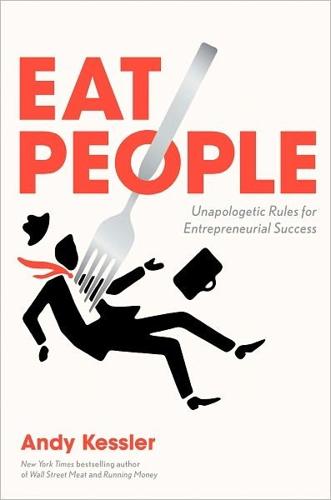
Eat People: And Other Unapologetic Rules for Game-Changing Entrepreneurs
by
Andy Kessler
Published 1 Feb 2011
But slowing progress in the name of jealousy is almost criminal; even jealous tendencies are a lame excuse. Self-loathing and an “I’m not worthy” attitude is probably more like it—other adolescent emotions. But then I see another, more adult, emotion—nostalgia. Ah, remember how simple life used to be. We don’t need progress and financial derivatives and horizontal drilling and McMansions and fully loaded Hummers (though we’ll keep the Apple iPad). Let’s go back to the old days, and simpler times. Or maybe it’s a Homo erectus tribal instinct. Maybe we have collectivism, a “we’re all in this together”/ fraternité/égalité, in our DNA. I had the privilege of visiting Israel with my grandfather in the 1970s as a twelve-year-old.

I See You Made an Effort: Compliments, Indignities, and Survival Stories From the Edge of 50
by
Annabelle Gurwitch
Published 6 Mar 2014
In the same way that high levels of lead in pottery have been linked to the decline of the Roman Empire, I would venture to say that our exhaustive fascination with celebrilites heralds the decline of Western civilization more than even the popularity of Funyuns.* A small accomplishment I celebrate is that in my forty-nine years I have yet to invite cameras to document me splashing white wine on the masklike face of a celebrilite in a cookie-cutter McMansion. Two days later I hear I have gotten a callback for the DirecTV spot. This one is mine, I’m confident. All I have to do is stand in a kitchen and rub my nose. I’ve stood in kitchens. I’ve rubbed my nose. Many times. I expect to rub it again in the future, so why not with a camera rolling? At the callback, a group of thirty actresses in my category are corralled into a holding area.

Once the American Dream: Inner-Ring Suburbs of the Metropolitan United States
by
Bernadette Hanlon
Published 18 Dec 2009
Suburbia, at one time built solely for the elite of society and later the middle class, now includes a mix of people from the very rich to the very poor. Over two centuries of development, suburbia has evolved into a new reality that includes continued growth and prosperity and decline and poverty. Gated communities, McMansions, and the supersize subdivision exist alongside much poorer suburbs struggling with issues of blight, fiscal stress, income decline, increasing poverty, and Decline Is a New Suburban Reality / 13 housing deterioration. In this chapter, I examine the evolution of this suburban dichotomy. The problem of suburban decline, particularly as it relates to inner-ring suburbs, is one side of this dichotomy and the primary focus of this chapter.

The Creative Curve: How to Develop the Right Idea, at the Right Time
by
Allen Gannett
Published 11 Jun 2018
Office space in the formerly rundown SoMa neighborhood now rents for an average of $72.50 per square foot (matching pricey Manhattan), and studio apartments sell for an average of over $1,200 per square foot, which means that a small 450-square-foot studio costs more than $540,000, which is enough to buy a McMansion in many suburbs. As for the Park Hotel, it has turned into a techie commune where aspiring entrepreneurs and software engineers can rent minuscule rooms for $1,000 per month. So why are people moving there in droves? Somewhere along the way, SoMa turned into one of the epicenters of the start-up industry.

Happy-Go-Lucky
by
David Sedaris
Published 30 May 2022
Had ours been the only place affected, it might have been easy to have the repairs done, but between the hurricane and the flooding, thousands of homes had been either destroyed or severely damaged—and that was just in North Carolina. Our other house, luckily, was relatively unscathed. It’s next door to the Sea Section, and when it came up for sale in 2016, Hugh disregarded my objections and bought it. His argument was that if he didn’t get it, someone would most likely tear it down and construct the sort of McMansion that has become the rule on Emerald Isle rather than the exception. The size of these new houses was one thing—eight bedrooms was common, spread over three or four stories—but what came with them, and what you really didn’t want next door to you, was a swimming pool. “It happened to us ten years ago,” moaned my friend Lynette, who owns an older, traditionally sized cottage up the street from us.

The Numerati
by
Stephen Baker
Published 11 Aug 2008
Naturally, the key is to find more people in the U.S. population who could conceivably vote for a Democratic candidate and to come up with just the right pitch for each voter. The trouble, he believes, is that millions of potential Democrats are camouflaged. For one reason or another, they pass for Republican voters. Some live in McMansions with fairway views and drive Hummers. Some no doubt carry weapons, revere the military, or spend much of their free time praying. Others are staying hidden because they haven't been much impressed to date by Democratic candidates. To turn these people into Democratic voters, Gotbaum says, his party needs to surpass the Republicans in pinpointing potential supporters from within massive databases.
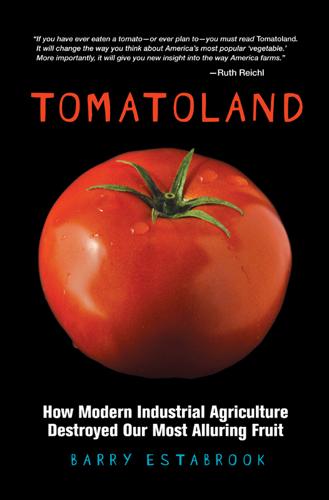
Tomatoland: How Modern Industrial Agriculture Destroyed Our Most Alluring Fruit
by
Barry Estabrook
Published 6 Jun 2011
A spry, avuncular octogenarian with an acute mind and an almost extrasensory ability to read people, Procacci divides his time between the Philadelphia area, where the company is headquartered, and Naples, Florida, where he lives in The Vineyards, a self-contained minicity complete with golf courses, schools, and a hospital. The Vineyards was one of his tomato fields until the mid-1980s, when he and his brother decided that the ground would be more profitable if they put in a crop of McMansions and swimming pools. Procacci, the son of Italian immigrants, has been in the produce business since 1935. Then eight years old, he came home from school in Camden, New Jersey, to see a loaded vegetable push cart in front of the family house. “Don’t come home until you’ve sold everything,” his father ordered.
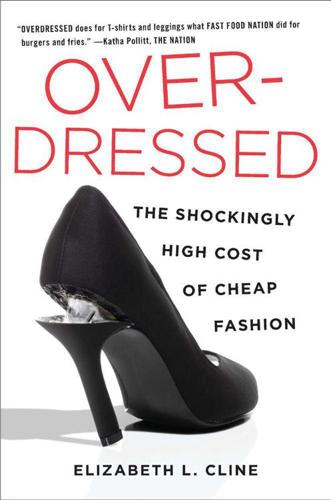
Overdressed: The Shockingly High Cost of Cheap Fashion
by
Elizabeth L. Cline
Published 13 Jun 2012
The First Thanksgiving, “Daily Life: Clothes,” Scholastic.com, www.scholastic.com/scholastic_thanksgiving/daily_life/clothes.htm. 7. Jan Whitaker, Service and Style: How the American Department Store Fashioned the Middle Class (New York: St. Martin’s Press, 2006), 55, 66. 8. Neil Reynolds, “Goodwill May be Stunting African Growth,” Globe and Mail, December 24, 2008. 9. Christopher Solomon, “The Swelling McMansion Backlash,” MSN.com, http://realestate.msn.com/article.aspx?cp-documentid=13107733. 10. Bureau of Labor Statistics, Consumer Expenditures 2010, www.bls.gov/news.release/cesan.nr0.htm. 11. Eben Shapiro, “Few Riches in Rags These Days,” New York Times, January 5, 1991. 12. “Corporations: Jumpers at Jonathan Logan,” Time, August 31, 1962. 13.

Nickel and Dimed: On (Not) Getting by in America
by
Barbara Ehrenreich
Published 2 Jan 2003
The problem of rents is easy for a noneconomist, even a sparsely educated low-wage worker, to grasp: it's the market, stupid. When the rich and the poor compete for housing on the open market, the poor don't stand a chance. The rich can always outbid them, buy up their tenements or trailer parks, and replace them with condos, McMansions, golf courses, or whatever they like. Since the rich have become more numerous, thanks largely to rising stock prices and executive salaries, the poor have necessarily been forced into housing that is more expensive, more dilapidated, or more distant from their places of work. Recall that in Key West, the trailer park convenient to hotel jobs was charging $625 a month for a half-size trailer, forcing low-wage workers to search for housing farther and farther away in less fashionable keys.

Discardia: More Life, Less Stuff
by
Dinah Sanders
Published 7 Oct 2011
When we’re thinking about relying less on cars, we are reminded that it’s time to start an even bigger “letting go” in much of the western world. We rich nations have got to say farewell to the strange notion that has gripped us for the last half century: our suburban life style—with its two-car garage, McMansions, lawns in the desert, strip malls, and daily auto errands—is unsustainable. There's never going to be more oil or natural gas readily available than there is now. Suburbia relies on these energy sources for its residents to be able to get to shops or work and to heat or cool their very large homes as well as to build the homes and the accoutrements associated with this lifestyle.
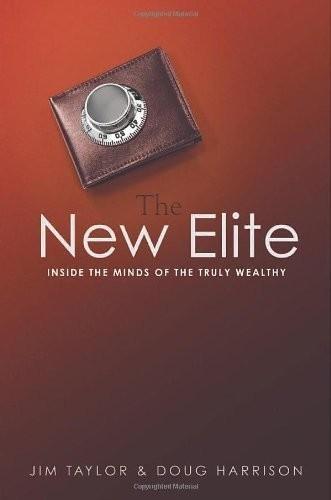
The New Elite: Inside the Minds of the Truly Wealthy
by
Dr. Jim Taylor
Published 9 Sep 2008
They tend to prefer basic colors and classically tasteful styles, but being too fashion-forward draws unnecessary attention to themselves; moreover, it is largely inconsistent with their middle-class comfort zone and the principle of stealth wealth. Myth: The wealthy live in mansions, or at least McMansions. Reality: A small minority live in palatial estates, but most live in houses that are better described as spacious but modest. The average value of their main residences is about $2 million, with the median being closer to $1.2 million. Depending on your background and where you live, that may sound like a lot.
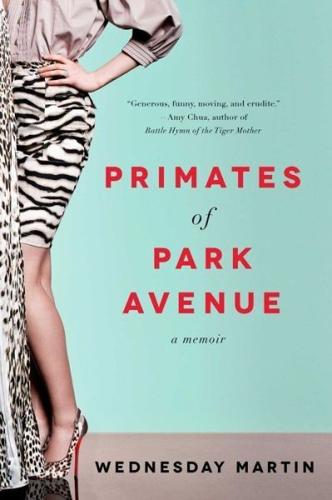
Primates of Park Avenue: A Memoir
by
Wednesday Martin Ph.d.
Published 1 Jun 2015
But put women on farms, a drastically more sedentary state of affairs than gathering, and make calories more plentiful, and you quickly ratchet up body fat levels—and fertility. This lifestyle, with its hallmark monthly menses, stuck with us when we moved out of the fields and farmhouses and into the malls and McMansions and apartment buildings, of course. And so babies spaced a couple of years apart became the norm. This is why, in every town in America, you see mom pushing her tiny baby in a stroller while the two-year-old rides on the stroller board. Over time, the original, pre-agricultural state of affairs has come to seem strange to us.
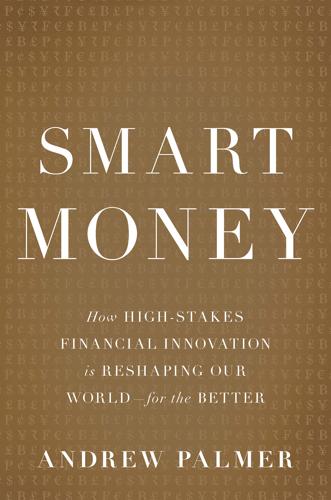
Smart Money: How High-Stakes Financial Innovation Is Reshaping Our WorldÑFor the Better
by
Andrew Palmer
Published 13 Apr 2015
Asset classes have to get very big before they can have an impact on the financial system as a whole, let alone potentially require the taxpayer to step in when things go wrong. And even if you do fret about speculative excess, he says, better that investors’ animal spirits are directed toward solving the biggest social issues than to funding the purchase of McMansions. But he is alive to the potential dangers of securitization. For example, the benefits of diversification come about only if assets in the fund genuinely do not all rise and fall together—in the jargon, if they are “noncorrelated.” Putting your money into a basket of equities spreads your risk across a lot of different companies, but that isn’t much help if the whole stock market tanks; investing in mortgages across the United States is all very well unless there is a national downturn.
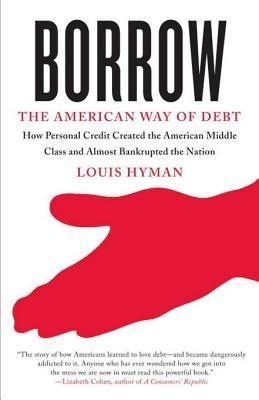
Borrow: The American Way of Debt
by
Louis Hyman
Published 24 Jan 2012
With a diversified portfolio of business investments, risks for investors would go down. Business investment wouldn’t be the province of a few millionaires and their private equity; it could be done by average Joes with their pension funds. How much better would the world be if workers’ pension funds were invested in activities that produced jobs instead of McMansions? Regulation doesn’t need to tell firms what to do, but it does need to provide the transparency for investors to act wisely and to help markets make technological transitions when there is a great deal of change. U.S. housing markets continue to require Fannie and Freddie and Ginnie to clear their secondary markets.
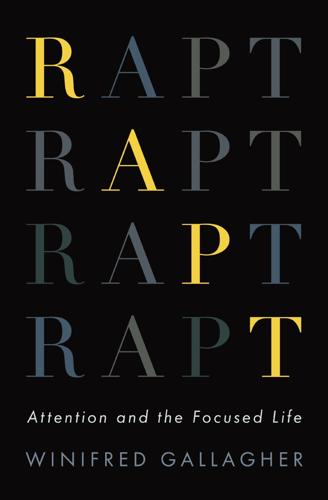
Rapt: Attention and the Focused Life
by
Winifred Gallagher
Published 9 Mar 2009
Yet some sobering research shows that, pulled into their own little worlds by an individualistic me-first culture and accelerating demands on their attention, American couples and families often fall short in this regard. Particularly in times of social and economic turmoil, we’re reminded that not only as individuals but also as members of a society we choose to focus on certain targets and suppress others: risky profits or steady savings; McMansions or “green” homes; multilateralism or unilateralism; SUVs or mass transit; celebrity or character. As the nation faces crises in the economy, the environment, international affairs, and other vital areas, we can no longer afford to indulge in the kind of collective ADHD that’s symbolized by President Ronald Reagan’s removal of the solar panels that President Jimmy Carter had installed in the White House during an energy crisis thirty years ago.

Give People Money
by
Annie Lowrey
Published 10 Jul 2018
This change is unheralded but dramatic: the United States’ female labor participation rate has fallen from sixth among twenty-two OECD countries to seventeenth between 1990 and 2010. * * * After dropping Karla off at her special-education school, Giron went to go see the three clients she had that day. Her first stop was at a tidy McMansion near the Hoover Dam, nestled in a desert neighborhood with startling jewel-green lawns. Her elderly client had had two strokes and uses a walker. “He has a lot of trouble balancing and walking,” Giron said. “If I don’t go and give him a bath, he doesn’t get a bath.” On this now-bright morning, she bathed him and changed his sheets, popping her third load of laundry of the day into a washing machine.
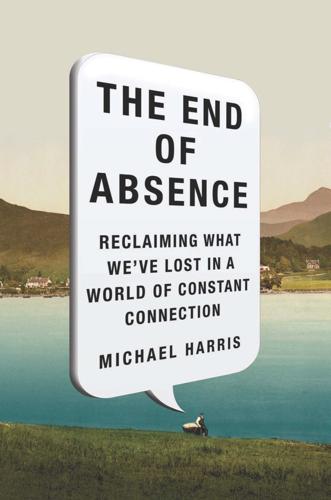
The End of Absence: Reclaiming What We've Lost in a World of Constant Connection
by
Michael Harris
Published 6 Aug 2014
I now read newspapers. August 22 We just can’t handle solitude without a rich interior life. At first there was this bewildering, wind-swept void where my online world had been. Now, haltingly, I place other things in that void. A book. A walk through Shaughnessy to monitor the construction of various McMansions I have my eye on. But, of course, nothing—nothing—is as enthralling as the lovely, comforting, absence-destroying Internet. You can’t really revert to a prior state of mind because (as Nicholas Carr points out) our brains may be changeable and plastic, but they aren’t necessarily elastic. My online mind waits angrily for its food.
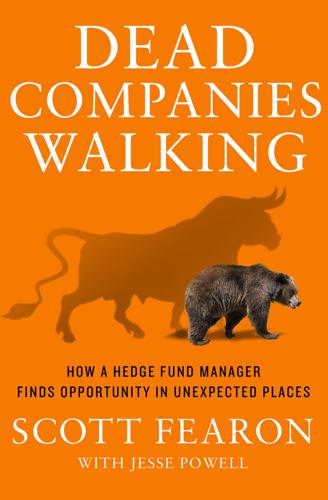
Dead Companies Walking
by
Scott Fearon
Published 10 Nov 2014
There’s a famous, perhaps apocryphal, story from the late 1920s, of Joseph Kennedy listening in horror as the guy shining his shoes offered him stock picks. According to the story, Kennedy knew right then and there that the market was about to tank. I had a similar moment of clarity looking out at the denuded hills and half-finished homes of the Brightwater development. The place was an unmitigated disaster. The company was slapping up chintzy McMansions cheek-by-jowl and charging $800,000 for the smallest, cheapest units. I went into one of the few completed model homes and sat down at the mock kitchen table. Through a nearby window, I could see the house next door a few yards away. I imagined some poor homeowner trying to relax in her kitchen while the drone of her neighbor’s dishwasher came drifting through the window.

So Close to Being the Sh*t, Y'all Don't Even Know
by
Retta
Published 28 May 2018
I’m in a place now where I make enough money that I can get what I want when I want it, not miss my mortgage payment, help my parents, pay my reps their 10 percent, and still have money in the bank. I don’t want a Rolls-Royce. I don’t need a jet. I don’t need a place in the Alps. Those aren’t the things I want. I want to go out for dinner and I want to go on vacation. I don’t need a giant mansion. I’d be cool with a McMansion. It’d have to be a manageable enough size that I could afford to pay someone to keep it clean. I do, however, want a claw-foot tub. Scratch that. I like the look of a clawfoot tub but I don’t want to fuck around with getting in and out of one. No sense in bustin’ my ass when all I want is a good soak.
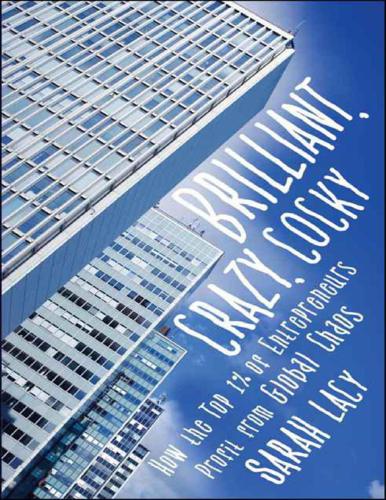
Brilliant, Crazy, Cocky: How the Top 1% of Entrepreneurs Profit From Global Chaos
by
Sarah Lacy
Published 6 Jan 2011
We’re talking about toilet paper. Having spent the previous decade of my career parsing business pitches on medical devices, new drug compounds, chipsets, rational databases, super routers, and Web sites, I can’t remember the last time I had this un-techy of a conversation. But here’s the remarkable part: Just as those McMansions on the hil s could be under construction anywhere in the world, as I sit and talk business with Kagabo, I can’t stop thinking about how much he reminds me of an entrepreneur I’d recently interviewed in the United States: Tony Hsieh, CEO of the ecommerce shoe company, Zappos.com. Part of this resemblance is physical: Both men have thin, slight builds, close-cropped hair, and boyish faces.

Happy Inside: How to Harness the Power of Home for Health and Happiness
by
Michelle Ogundehin
Published 29 Apr 2020
Buffett famously lives in the same modestly sized, 6,570 square-foot (610 square-metre), five-bedroom house that he bought in Omaha, Nebraska, for $31,500 in 1958 (worth about $650,000 today; less than 0.001 per cent of his net worth), and has been known to take his own lunch of a McDonald’s quarter-pounder and fries to his annual general meetings. Arguably he could afford any McMansion he likes within immense private grounds, and he could dine at his pick of restaurants, or at the very least get his burger delivered. But he does not, and his choices speak not of miserliness but of immense confidence and strength of character. They say that he has nothing to prove to anyone but himself.
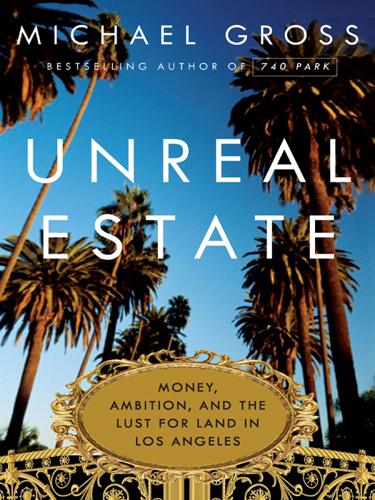
Unreal Estate: Money, Ambition, and the Lust for Land in Los Angeles
by
Michael Gross
Published 1 Nov 2011
There would be one long staircase just going up, And one even longer coming down, And one more leading nowhere, just for show. —SHELDON HARNICK, “If I Were a Rich Man,” Fiddler on the Roof Tip the world over on its side and everything loose will land in Los Angeles. —FRANK LLOYD WRIGHT (1867–1959) CONTENTS COVER TITLE PAGE COPYRIGHT DEDICATION EPIGRAPH CAST OF CHARACTERS INTRODUCTION PART ONE: McMansions, 1911–2011 Chapter 1 Chapter 2 Chapter 3 PART TWO: Ranchos, 1539–1906 Chapter 4 Chapter 5 PART THREE: Lots for Sale, 1906–1932 Chapter 6 Chapter 7 Chapter 8 Chapter 9 Chapter 10 Chapter 11 Chapter 12 PART FOUR: Great Estates, 1932–1959 Chapter 13 Chapter 14 Chapter 15 Chapter 16 Chapter 17 Chapter 18 Chapter 19 Chapter 20 Chapter 21 Chapter 22 Chapter 23 Chapter 24 Chapter 25 PART FIVE: White Elephants, 1958–1979 Chapter 26 Chapter 27 Chapter 28 Chapter 29 Chapter 30 Chapter 31 Chapter 32 Chapter 33 Chapter 34 Chapter 35 Chapter 36 Chapter 37 Chapter 38 Chapter 39 Chapter 40 Chapter 41 PART SIX: Trophy Houses, 1980–2011 Chapter 42 Chapter 43 Chapter 44 Chapter 45 Chapter 46 Chapter 47 Chapter 48 Chapter 49 Chapter 50 Chapter 51 Chapter 52 Chapter 53 ACKNOWLEDGMENTS NOTES SELECTED BIBLIOGRAPHY PHOTO CREDITS ABOUT THE AUTHOR Burton Green (photo credit fm1.1) Max Whittier (photo credit fm1.2) Edwin and Harold Janss (photo credit fm1.3) Minnewa and Alphonzo Bell (photo credit fm1.4) Charles Canfield and Jake Danziger (photo credit fm1.5) Harold Lloyd, Charles Chaplin, and Douglas Fairbanks at the Beverly Hills Hotel (photo credit fm1.6) Neil Steere McCarthy (photo credit fm1.7) Diane Stockmar, Dolly Green, and Burtie Green at Stockmar’s wedding (photo credit fm1.8) Harold Greenlin (left) with Habib Carouba and their lawyer George Choppelas (photo credit fm1.9) Steven Macallum Powers (left), Bernie Cornfeld and friend (photo credit fm1.10) Stewart and Lynda Resnick with Barbara Davis (right) (photo credit fm1.11) CAST OF CHARACTERS This book is about sixteen great estates in the best neighborhoods of Los Angeles—the contiguous communities of Beverly Hills, Bel Air, Holmby Hills, and Beverly Park.
…
Nothing is indigenous in Los Angeles, a quality perfectly captured in the faux-historical pastiche that has come to be seen as the architectural style of the Triangle. Everything and everyone here comes from somewhere else. Impermanence defines the place. The book you are reading is an attempt to give back to this magical kingdom some of the history it has, perhaps willfully, forgotten. PART ONE McMansions 1911–2011 { OVERLOOKING BEVERLY PARK } (photo credit 1.1) Beverly Park I met Roger, an athletic-looking guy in a college T-shirt and jeans, standing on that ridge where I was looking down on Beverly Park. He was leaning on a Cadillac beside a buxom blonde. They were practicing real estate voyeurism, too.
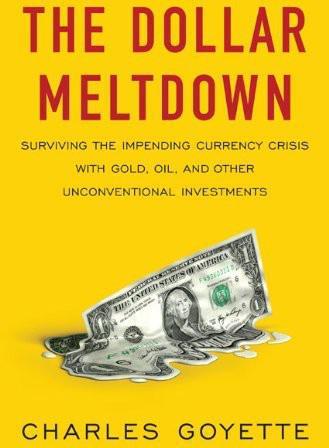
The Dollar Meltdown: Surviving the Coming Currency Crisis With Gold, Oil, and Other Unconventional Investments
by
Charles Goyette
Published 29 Oct 2009
—Buckminster Fuller Agriculture When investment legend and commodities bull Jim Rogers says that ten years from now instead of twenty-nine-year-old stockbrokers driving Maseratis, it will be twenty-nine-year-old farmers, he’s making an important point about the shifting economy. People’s spending hierarchies experience dynamic changes in lean economic times. People can live without the excesses of Wall Street. They can live without Hum mers, McMansions, and flat-screen TVs in every room. But they can’t live without food. The world can get along just fine with less so-called investment banking. It can’t get along with less farming. This goes for the rest of the world: a growing population needs additional food. Since 2000 Asia’s growth has been equal to almost one and a half times the total population of the United States.

Kingpin: How One Hacker Took Over the Billion-Dollar Cybercrime Underground
by
Kevin Poulsen
Published 22 Feb 2011
Chris could handle everything online, and his people wouldn’t have to put in an appearance until move-in day, when they’d stop by the rental office to flash their fake ID and pick up the door key. He moved two of his cashers, and Marcos, his pot connection, into the Archstone Mission Viejo, a labyrinth of McMansion-style apartments painted the colors of a sunset and clinging to a hill dotted with palm trees and high-tension lines alongside Interstate 5, ten minutes from his house. He was also looking to expand his crew. One girl had dropped out and moved to Toledo after her second in-store bust, and two others had quit in disgust when Chris impregnated his teenage girlfriend—he was now paying for an apartment for the young woman and their son, whose existence he kept secret even from his mother.
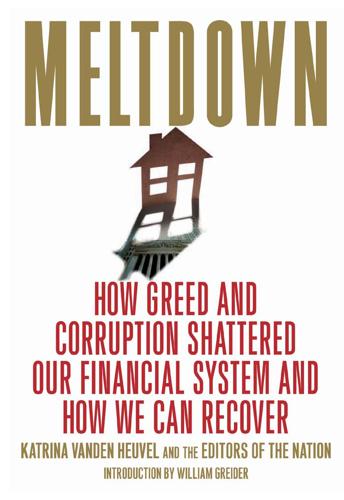
Meltdown: How Greed and Corruption Shattered Our Financial System and How We Can Recover
by
Katrina Vanden Heuvel
and
William Greider
Published 9 Jan 2009
The housing boom also spawned the now infamous subprime mortgage—a scheme devised by Main Street realtors and Wall Street bankers to finance home buying with loans that let the borrower buy in with little money down but carried high interest rates. The expensive payments would be made later by refinancing the mortgage as prices continued to rise. These subprimes were sold to middle-class strivers upgrading to McMansions as well as to the working poor. The increased demand pushed housing prices further into the stratosphere—until, inevitably, they fell back to earth. When the subprime borrowers could no longer make their payments, foreclosure signs went up, lowering the value of other houses in the neighborhood.
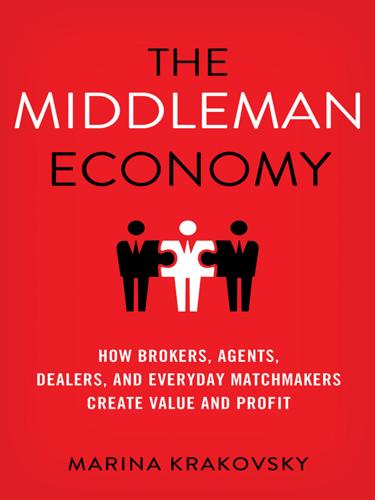
The Middleman Economy: How Brokers, Agents, Dealers, and Everyday Matchmakers Create Value and Profit
by
Marina Krakovsky
Published 14 Sep 2015
As if still pitching the show to TV executives, Wolfe often describes his vocation as “Indiana Jones meets Sanford & Son”—a cross between treasure hunter and junk dealer. In looking for properties to pick, Wolfe completely reverses our notions of good and bad. Staying away from freshly painted McMansions with satellite dishes and manicured yards, he gravitates toward houses with tall weeds out front, buildings and cars painted in dated colors like avocado and harvest gold, and rust on just about anything. The more signs of age and disrepair, the better. “Our secret to making a profit is that we skip the middleman, meaning we don’t buy from thrift stores, antique malls, or flea markets,” Wolfe and Fritz write in their book, American Pickers Guide to Picking.2 “Instead, we go straight to the source.”
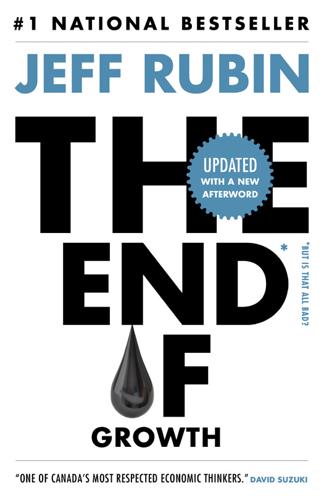
The End of Growth
by
Jeff Rubin
Published 2 Sep 2013
Sometimes small begets small in an effortless way. I grew up in a modest postwar suburban bungalow that was bulldozed after my parents sold it to make room for a house twice the size. In a smaller world, these giant suburban homes will become as obsolete as the SUVs parked in their driveways. The suburban landscape is defined by energy-sucking McMansions. Before long, these storehouses of consumer goods will be demolished to clear the way for smaller homes better suited to the finite dimensions of tomorrow’s economy. A smaller home will be a blessing when income growth starts to slow. The need to buy less stuff will free up much-needed cash to pay for energy and food.
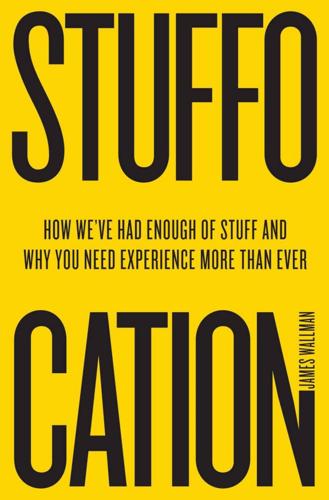
Stuffocation
by
James Wallman
Published 6 Dec 2013
That was odd, because she should have been, at the very least, content. She was doing well at work. Her firm had picked her for its management-training programme. She was with a great guy, and they lived in a pretty town near Sacramento called Davis, in a luxury apartment surrounded by manicured lawns and McMansions. “I felt like I had it made,” Strobel recalls. “Like I had everything I could possibly want.” From the outside looking in, to anyone who caught sight of her new three-diamond ring, or saw her and Smith out partying in town, or came over to their fancy home and saw the rooms full of stuff and closets full of clothes, she did.

Listen, Liberal: Or, What Ever Happened to the Party of the People?
by
Thomas Frank
Published 15 Mar 2016
It took a global financial catastrophe to make them reverse themselves in this way—a recurrence of the Great Depression complete with Wall Street swindles, a burst financial bubble, and weeks of panic as unemployment spiked, assets tumbled, and the economy’s foundations quivered. The confident days of the free-market consensus seemed to be shuddering to a close. The promise of a universally affluent postindustrial era now looked as empty and forlorn as a row of abandoned McMansions on some lonely cul-de-sac in the Nevada desert. It wasn’t merely Barack Obama’s singular identification with “Hope” and “Change” that made him seem like the reincarnation of Franklin Roosevelt; in contrast to every other candidate, he recognized how political convention had given us economic disaster.
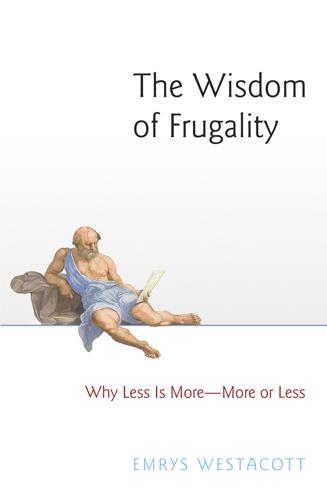
The Wisdom of Frugality: Why Less Is More - More or Less
by
Emrys Westacott
Published 14 Apr 2016
There has been a growing awareness that behind all the goods and services we consume is a vast amount of industrial activity much of which depletes resources, pollutes soil, water, and air, destroys habitats, and contributes to global warming. Most of the food we eat is produced by industrial-scale agriculture that uses huge quantities of chemical fertilizers and pesticides, as well as water and energy. Acres of woodland and farmland are destroyed each day to make land available for more McMansions. Technology in many areas may have become cleaner, but this in itself cannot fix the problem. We think of the digital revolution as environmentally friendly, yet by the end of the twentieth century the manufacturing of each computer was generating 140 pounds of solid waste a year, some of it hazardous, and 12 million computers (300,000 tons) were being junked each year, mainly into landfills.5 Motor vehicles are undoubtedly becoming cleaner with respect to the amount of energy they consume and in the sort of exhaust they put out; but these improvements are more than offset by the rapid increase in the number of cars on the road in places like China and India.

Lab Rats: How Silicon Valley Made Work Miserable for the Rest of Us
by
Dan Lyons
Published 22 Oct 2018
The place took nine years to build, reportedly at a cost of $200 million. Its highlight is Katsura House, a replica of a teahouse from a sixteenth-century royal compound in Kyoto. The replica, which was built in Japan, then disassembled and shipped to California, is 10 percent bigger than the original. Non-billionaires settle for McMansions priced in single-digit millions, like a “secluded Tuscan estate” that the nouveau riche Chandler Guo, the self-proclaimed “Bitcoin King,” snapped up for $5 million in 2018. As for “regular” houses, those no longer exist. In March 2018, a drab, tiny, 848-square-foot house in Sunnyvale sold for $2 million, more than $2,300 per square foot, the highest square-foot price ever recorded on the Multiple Listing Service.
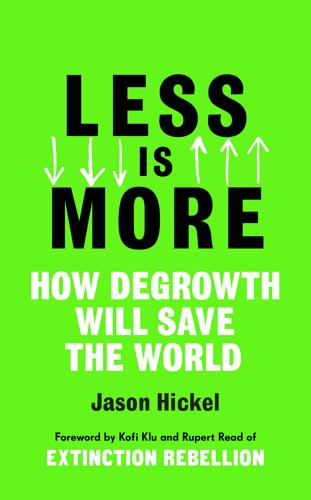
Less Is More: How Degrowth Will Save the World
by
Jason Hickel
Published 12 Aug 2020
Researchers are also testing proposals for a tax on red meat, which they find would not only curtail emissions but deliver a wide range of public health benefits, while driving medical costs down.19 The beef industry is just one example. There are many others we could consider. We could scale down the arms industry and the private jet industry. We could scale down the production of single-use plastics, disposable coffee cups, SUVs and McMansions (in the United States, house sizes have doubled since the 1970s20). Instead of building new stadiums for the Olympics and the World Cup every few years we could reuse existing infrastructure. We know that to reach our climate goals we will need to scale down the commercial airline industry, starting with policies like a frequent flyer levy, ending routes that can be served by train, and getting rid of first-class and business-class cabins, which have the highest CO2 per passenger mile.
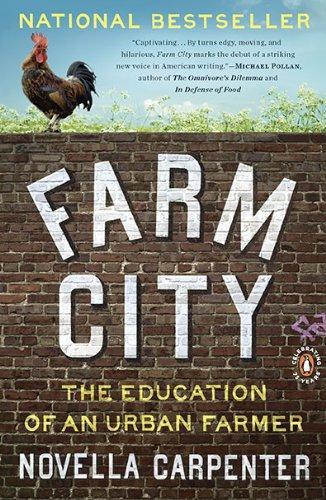
Farm City: The Education of an Urban Farmer
by
Novella Carpenter
Published 25 May 2010
Bobby nodded and went to get a shopping cart to block the parking spot. He waved at our truck as we drove away, back to the hills, back to the stables. We had to cross the county line to get our horse poo. Oakland’s county, Alameda, gave way to Contra Costa County, land of rolling hills, working cattle ranches, and more recently rich folks with McMansions. Lucky for us, rich people like horses. And horses make a lot of manure. Which piles up and composts away until an enterprising gardener arrives and offers to take away this jackpot of tilth and nutrients. The horses whinnied when they heard us drive up. I backed the truck as close as possible to the mother lode: a massive mound of composting manure the size of a small barn.
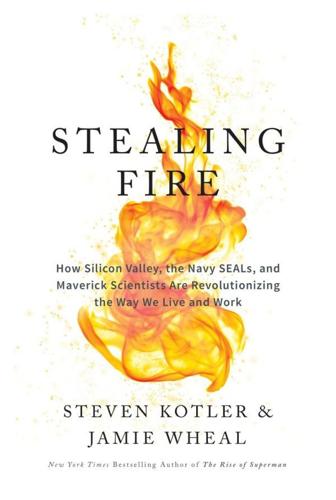
Stealing Fire: How Silicon Valley, the Navy SEALs, and Maverick Scientists Are Revolutionizing the Way We Live and Work
by
Steven Kotler
and
Jamie Wheal
Published 21 Feb 2017
So while folks at Burning Man are just starting to build themselves a homeland, Summit has already taken that step. Already, there are more than five hundred home sites on the land, with people like Richard Branson, Kobe Bryant, GE’s CMO Beth Comstock, and Nike president Trevor Edwards already committed to the project. And instead of the typical McMansion resort plan, they are actively fostering community by prohibiting oversize statement homes and concentrating development into tightly clustered neighborhoods. Everything is being built to platinum-level LEED environmental standards. It’s the world’s first ecstatically inspired eco-town, though it didn’t start out that way.
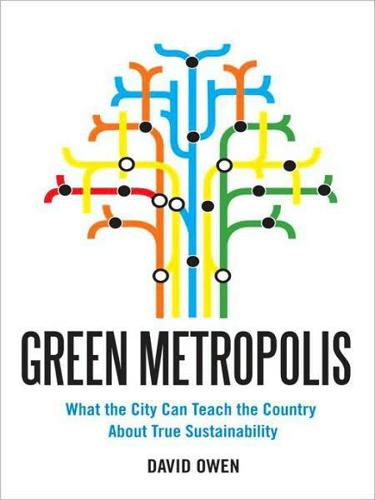
Green Metropolis: Why Living Smaller, Living Closer, and Driving Less Are Thekeys to Sustainability
by
David Owen
Published 16 Sep 2009
Unfortunately, many critical structural incentives in the United States actually:• guarantee harmful outcomes (as was also the case in the buildup to the present credit crisis, in which lenders and borrowers were extravagantly rewarded for taking the steps that led to their self-destruction); or • cater primarily to political and commercial self-interest (as in the promotion of ethanol, which has made politicians look busy on the energy issue and has enriched the producers of ethanol but has harmed just about everyone else); or • make people feel better without accomplishing anything substantive (as in the economic abracadabra that makes homeowners feel they’re saving the world by installing heavily subsidized solar panels on the roofs of suburban McMansions). We have encouraged sprawl, automobile dependence, and energy gluttony from the beginning, in part by concealing from ourselves the true long-term and short-term costs—and when potentially useful disincentives have arisen spontaneously we have generally rushed to neutralize them, as in the demands, in late 2008, that fuel taxes be reduced to bring down the price of gasoline, or in work-relief proposals to help revive the economy by building new roads or making it easier for people to buy new cars and build new houses.
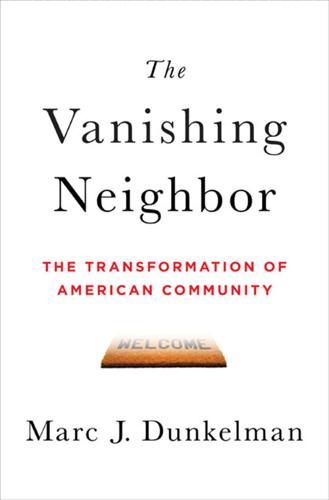
The Vanishing Neighbor: The Transformation of American Community
by
Marc J. Dunkelman
Published 3 Aug 2014
By 1970, that was down to five and twelve minutes respectively.7 And because our dollar goes so much further, we’ve developed a taste for new products and services. You no longer get a plain cup of coffee from a pushcart—you get a Starbucks latte with a shot of vanilla. You’re no longer satisfied with a cape-style bungalow—you want a McMansion. Over the years middle-class life has gotten better and better: products that seemed like luxuries during the early postwar years have become standard fare. And as a result, accoutrements once reserved for the rich and famous have become increasingly pedestrian. Even better, the blessings of American prosperity haven’t been limited to the upper crust and those aspiring to get there.

The Ecotechnic Future: Envisioning a Post-Peak World
by
John Michael Greer
Published 30 Sep 2009
The traditional homes of many nonindustrial cultures embody millennia of evolution and provide excellent human habitat, while leaving the wider environmental systems around them relatively 119 120 T he E cotechnic F u t u re unharmed. Most homes in the modern industrial world, from the sprawling McMansions of the well-to-do down to the apartments that house the poor, provide relatively poor habitat for human beings; unlike more traditional housing, which is designed to foster many of the activities of human life, many modern residences make room for sleeping, consuming manufactured products and very little else.

JPod
by
Douglas Coupland
Published 30 Apr 2007
They spent eight days lolling about the Pacific with almost no food, water, light or sanitation. Kam had to hide out at my place for a few weeks until things calmed down. He was philosophical about the mistake: "I had to give the bastard a freebie on that particular shipment, and I also had to buy a McMansion for his mother in West Van, one bordering the golf course. Of course, the mother's gaga and could live in a Maytag box for all she cares." In any event, Kam ended up staying with us in Chinatown—the poverty nostalgia factor—and Kaitlin and I couldn't be happier. He makes no noise at all when he's home, and the fridge is bursting with tons of free food, renewed daily.
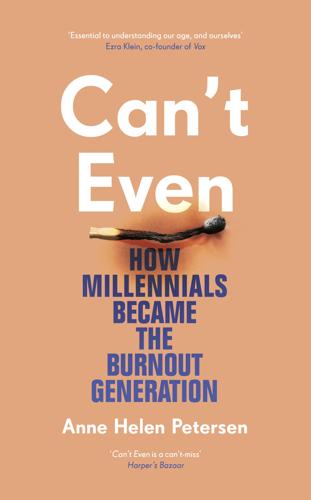
Can't Even: How Millennials Became the Burnout Generation
by
Anne Helen Petersen
Published 14 Jan 2021
The heads of public corporations, desperate for increased stock valuations in an increasingly volatile market (and beholden to investors who could potentially oust them at any point) began sloughing off any non-essential components of their business, from janitors to entire arms of a company, in order to make it as lean and “agile” as possible. You might know this strategy by the more common but vague name of downsizing. The rhetoric of downsizing suggests that whatever is being cut was never really necessary: You downsize from a sprawling McMansion to a home that fits you just fine; you reduce greed and redundancy and extravagance. That understanding followed it into the workplace, too. Sure, more Americans had enjoyed economic prosperity and stability during the Great Compression. But the companies had become, at least from the profit-margin-obsessed perspective of Wall Street, bloated.

Netflixed: The Epic Battle for America's Eyeballs
by
Gina Keating
Published 10 Oct 2012
Santa Cruz, especially the section populated by well-to-do residents on the west side of the San Lorenzo River, is vehemently antigrowth and antimansion, and even fought a widening of Highway 17 that would have shortened the hour-long commute to Silicon Valley. The town’s east siders share their wealthy neighbors’ isolationism—not so much to keep out vulgarian McMansion builders as to preserve a surf-shack culture reminiscent of a 1960s beach party movie. We turned north toward the center of town, near where the Pacific Coast Highway runs inland for a few blocks through a tony little business district, before it heads back toward the California coastline. Randolph parked the Volvo at a meter on Pacific Avenue, and we began to walk—past a vintage movie theater, a few upscale chain stores, and local boutiques.

Starbucked: A Double Tall Tale of Caffeine, Commerce, and Culture
by
Taylor Clark
Published 5 Nov 2007
To the extent that Ashland is known at all outside Oregon, it is as a summer destination for theater-loving tourists; the town is home to the popular Oregon Shakespeare Festival, which puts on about a dozen different plays a year. Recently, Ashland has become a trendy locale for wealthy Californians, who have built scores of McMansions out in the foothills. Still, it’s a nice place. For years, the local government protected Ashland’s appeal by keeping chain stores out of the town’s core, forcing them to open on the outskirts. This nonconformist ethic was part of the city’s collective identity. When the McDonald’s outlet down by the highway on-ramp went out of business, the entire town seemed to rejoice, as though this was proof of the community’s inherent goodness.
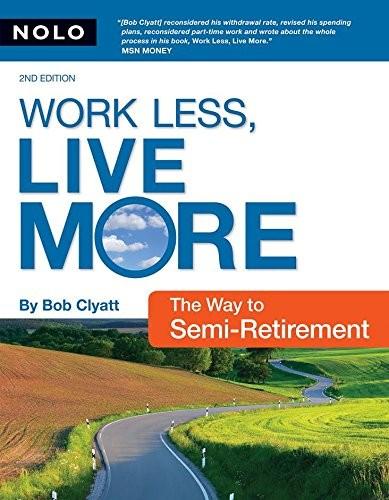
Work Less, Live More: The Way to Semi-Retirement
by
Robert Clyatt
Published 28 Sep 2007
Use your local knowledge to snatch a prize smaller property at a good price, perhaps even before it gets to market, giving you the chance to share the seller’s savings from not paying a realtor. (See “Retiring Outside the U.S.” and “Deciding Whether It’s Possible to Semi-Retire,” below, for information on moving to another state or country, which can also help beat high home costs.) Resource A growing trend toward high-quality but not-so-big homes suggests that the McMansion ideal may be fading—and there are resources aimed at the new cottage dwellers. 138 | Work Less, Live More Susan Susanka has a number of books and resources under the theme of The Not So Big House online at www.notsobighouse.com. These homes are intimate, beautiful, and functional without being big.

You Are Here: Why We Can Find Our Way to the Moon, but Get Lost in the Mall
by
Colin Ellard
Published 6 Jul 2009
Enclosing walls, and the refuge they offer, are avoided by arranging wide aisles around the outside of the seating area that are designed to draw people to the service counters. Food courts are brightly lit, often with skylights and high ceilings. Tables are arranged in such a way as to discourage groups of diners any larger than two. The effect, very much like trying to have lunch in the middle of an overdone foyer in a suburban McMansion, is artfully contrived to encourage people to slap down their money, wolf down their food, and plunge themselves back into the shopping fray.6 Perhaps a more apt metaphor would be to imagine primitive Homo sapiens sitting down for a nice lunch in the middle of a wide open stretch of savannah. He would undoubtedly run a great risk of becoming lunch, rather than consuming it, so would be unlikely to linger for dessert.
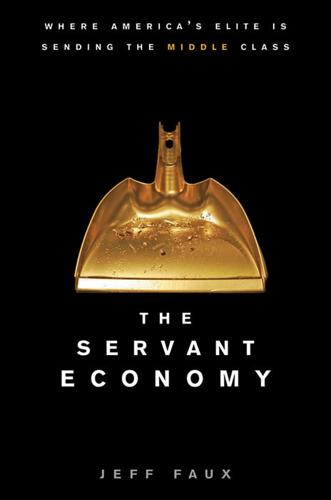
Servant Economy: Where America's Elite Is Sending the Middle Class
by
Jeff Faux
Published 16 May 2012
Each refinancing of these subprime mortgages, as they were called, came loaded with fees and balloon payments that made them more profitable for the brokers and investors. Subprime mortgages were not limited to low-income families. They were also available to middle-class professionals upgrading into McMansions. This new flow of money pushed housing prices up almost everywhere and, in the faster-growing parts of the country, into the stratosphere. In real terms, average home prices in the United States almost doubled in a decade.10 Third, pressured by Wall Street and real estate lobbyists to continue the housing boom, the Clinton and George W.

Early Retirement Extreme
by
Jacob Lund Fisker
Published 30 Sep 2010
Rather, it's shelter in Finland or Alaska that is an absolute need--insofar that staying alive is a need, but nobody needs to live in Finland or Alaska, even though I'm sure those are nice places.45 Even though the rankings on this list probably match the rankings of most people, it's by no means universal. Having experienced the freedom of living in an RV or a boat for a while, some people would never dream of substituting this for a 4,000square-foot McMansion with its endless cleaning and maintenance issues, and the need for walkie-talkies to find lost family members. The list is individual, because any choice has consequences in other domains (see Contingency goal-setting). For each individual, there are similar lists for eating, clothing, transportation, health, time, tools, toys, activities, status, etc., each ranging from essentially zero cost to more than one can imagine.

Instant City: Life and Death in Karachi
by
Steve Inskeep
Published 12 Oct 2011
The value of the house could help to lift a family out of poverty. One day Adnan took me to see the property where he expected to begin. His driver, who went by the name James, steered us past the funhouse-mirror world that was the outer reaches of Karachi. We passed enormous but shabbily built houses, the local equivalent of McMansions. We passed apartment buildings and sandy lots. Adnan called a halt at a bazaar built on a street median. “You have to see this,” he said. Mats on bamboo poles kept sunlight out of the improvised shops. We ducked under a mat into a pool hall, with a magnificent table of carved wood and green velvet sitting on the earthen median.
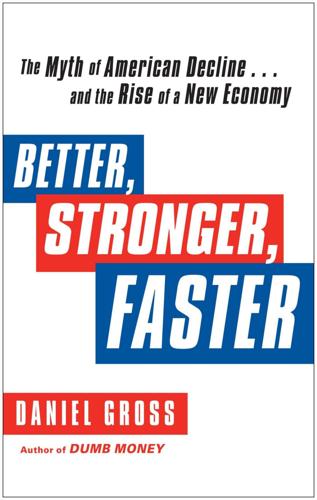
Better, Stronger, Faster: The Myth of American Decline . . . And the Rise of a New Economy
by
Daniel Gross
Published 7 May 2012
Energy consumption is about 8 percent of gross domestic product, but it has outsize implications for foreign policy, national security, and the environment. In the twentieth century the United States constructed a society geared around low-cost and plentiful energy that doesn’t work as well in an era of high-cost energy. Driving a Hummer fifty miles to Walmart from an exurban 4,200-square-foot McMansion, which costs a ton to heat, didn’t make much sense in the first place; it made even less sense in 2009 and 2010, with unemployment high and gas and heating oil at $4 per gallon. The addiction to foreign oil, and our inability to quickly remake the systems that rely on it, contribute to the sense of helplessness in the face of decline.
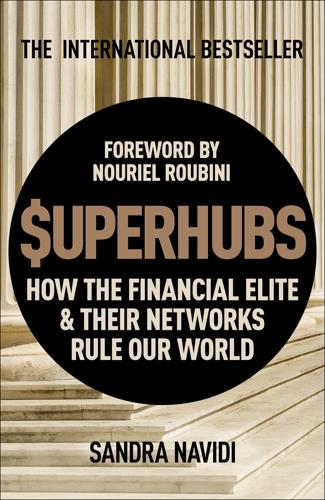
SUPERHUBS: How the Financial Elite and Their Networks Rule Our World
by
Sandra Navidi
Published 24 Jan 2017
It will serve as the perfect backdrop to Black’s spectacular art collection, which comprises many masterpieces worth hundreds of millions of dollars. On summer weekends, the power scene moves either to the Hamptons on Long Island or “to the country,” lingo for north of the city. Virtually all financiers own McMansions, equipped with pools, tennis courts, and guesthouses, surrounded by lush formal gardens, tall privet hedges, and security features. The upkeep costs hundreds of thousands of dollars a year and often requires the employ of an estate manager. Even within clusters, supernuclei form. In the Hamptons, superhubs congregate around Meadow Lane, Gin Lane, and Dune Road.

Fool's Gold: How the Bold Dream of a Small Tribe at J.P. Morgan Was Corrupted by Wall Street Greed and Unleashed a Catastrophe
by
Gillian Tett
Published 11 May 2009
“Builders that built speculative homes are trying to move them by offering large incentives and discounts, and some anxious buyers are canceling contracts for homes already being built,” observed Robert Toll, CEO of luxury home builder Toll Brothers, after its stock crashed 50 percent for the year by August. Forbes magazine tartly observed: “When even Toll Brothers, the high-end builder, suffers cancelations, you know the real estate boom is over.” On October 6, home builder Kara Homes, known for their construction of “McMansions,” filed for bankruptcy protection, less than a month after reporting that the company had enjoyed the “two most profitable quarters in the history of our company.” The delinquency rate on subprime mortgages rose from 12 percent to 14 percent. Troublesome as they were, these signs of housing strain did nothing to stop the mortgage-based CDO machine.

American Pain: How a Young Felon and His Ring of Doctors Unleashed America’s Deadliest Drug Epidemic
by
John Temple
Published 28 Sep 2015
They’d put in half a day, then take a long lunch, and work maybe a couple more hours in the afternoon. Then Chris wanted to go out to eat every night, hit the gym, then head to a strip club, find some girls. Night after night. It was an exciting life, where you might spend the morning installing windows on a mid-level McMansion in Port Charlotte, then drop everything and charter a cruiser to the Keys. Derik could keep up with Chris’s pace, and they had the same stupid sense of humor. Chris was obsessed with this girl who danced at a place called Emerald City Gentleman’s Club in Port Charlotte. Her stage name was Katie, kind of a plain name for a stripper, surrounded by Jades and Fantasias and Candis.

Home Sweet Anywhere: How We Sold Our House, Created a New Life, and Saw the World
by
Lynne Martin
Published 14 Apr 2014
People think of the Napa area of Northern California as the wine-growing capital of the state, but the Central Coast is catching up fast. More than 140 wineries snuggle among them as they step back from the ocean, with new wine tasting rooms sprouting up almost daily. The restaurant and bar scene has become sophisticated, and McMansions dot the countryside. Cattle and vineyards vie for space in the landscape. We had dreamed of some downtime and many relaxed evenings with my daughters and their families. But while we certainly enjoyed lots of family fun during the holidays, in California, time seemed to speed up. We found ourselves far busier than we ever were on the road, and the days evaporated with social events and chores.
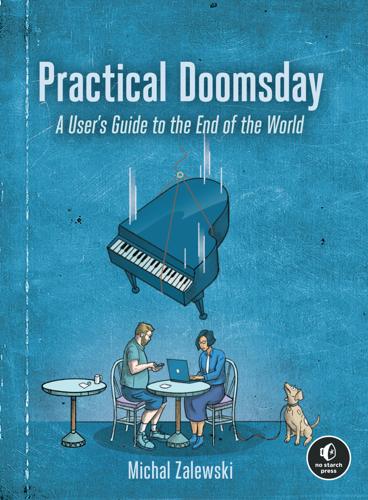
Practical Doomsday: A User's Guide to the End of the World
by
Michal Zalewski
Published 11 Jan 2022
When the job market dried up overnight in 2007, the number of evictions and foreclosures looked pretty gloomy down here too. Higher cost of living played a role, but so did the phenomenon of lifestyle creep: the tendency to scale up small, everyday purchasing decisions in proportion to one’s income. For Silicon Valley techies, it usually wasn’t the Lamborghini or the McMansion that did them in. It was the hundreds of small purchases where they reached for the upper shelf in the grocery store, indulged in geeky hobbies, and upgraded their phones and laptops every year. The fall from grace proved to be very sudden too. The unemployment benefits might’ve been just enough to pay the bills of a frugal low-income family, but fell well short of the mortgage payments on a mid-range San Francisco Bay Area home.

Decoding the World: A Roadmap for the Questioner
by
Po Bronson
Published 14 Jul 2020
Most of the world didn’t have much money. They loved cheap. “Shanzhai” was their word for it. To copy. Counterfeit, without shame. It was not just to replicate products. It was to replicate a notion of living, influenced heavily by the West. I saw entire suburban tract mansion suburbs pop up in months. McMansions. Children on bicycles. Everything but the milkman and Girl Scouts at the corner selling lemonade. I remember coming back from Ningbo, across Jiaozhou Bay. Halfway across the world’s longest bridge, out of the fog rose a tower known as Haitian Yizhou, “the land between the sea and the sky.” The tower was shaped like an eagle.

The Quiet Damage: QAnon and the Destruction of the American Family
by
Jesselyn Cook
Published 22 Jul 2024
It was rich listening to him—Tucker Swanson McNear Carlson, a multimillionaire, prep school–educated, carefully coiffed trust fund baby who summered in Maine—position himself squarely among the downtrodden, shoulder to shoulder with his viewers, decrying plots by “the elites” against “the rest of us plebes.” Fox’s overwhelmingly white audience was hardly the oppressed underclass Carlson made them out to be. Especially Emily, an epitome of privilege: She was a wealthy, successful lawyer residing in a McMansion. Some of her farm equipment cost tens of thousands of dollars. And somehow, Carlson appeared to have convinced her that “the powers that be” were conspiring to take it all away from her, along with everything else she valued in life. Adam was right to worry that a sustained and strictly partisan media diet could have an effect similar to brainwashing, or could radically alter the way that people like his mom thought.
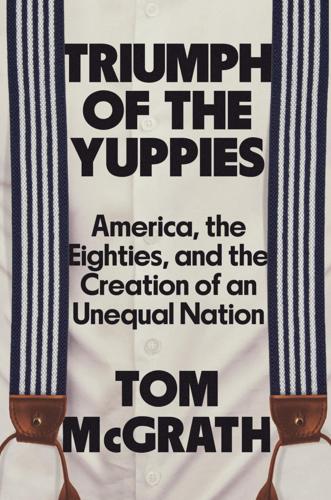
Triumph of the Yuppies: America, the Eighties, and the Creation of an Unequal Nation
by
Tom McGrath
Published 3 Jun 2024
And so they’d come up with a solution, creating a menu of expensive amenities—upscale windows, molding, stoves, cabinets—from which customers could choose, then having those products mass-produced at a lower cost. One result of this “semi-custom” approach was that the homes began to have a cookie-cutter look—McMansions, some wag would dub them—but the company’s bottom line kept improving. The other revelation the Toll Brothers had: If they had more capital, they could buy even more property on which to build even more houses. They got connected to Michael Milken and his colleagues at Drexel, who arranged millions of dollars of financing for them, in order to expand.
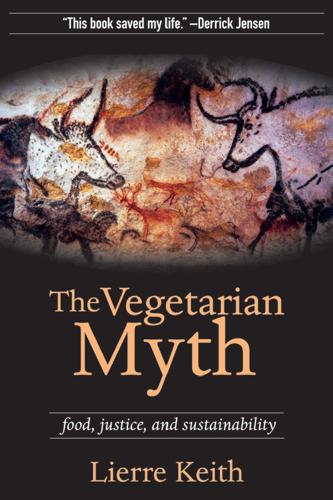
The Vegetarian Myth: Food, Justice, and Sustainability
by
Lierre Keith
Published 30 Apr 2009
There needs to be fewer of us. Dramatically fewer of us. And in wealthy countries, we need to consume dramatically less. A truly local economy could make that necessity both plain and possible: not only would it be obvious that logging, mining, agriculture, and other extractive activities were necessary for our McMansions and our computer chips, but when those “resources” ran out, so would the life that is built upon them. But money buys us distance, buffering us from the murder of the world in a sweet dream of abundance. Brian Donahue explores this in his book Reclaiming the Commons: Community Farms and Forests in a New England Town.

The new village green: living light, living local, living large
by
Stephen Morris
Published 1 Sep 2007
You can see a close-up of some of that futility in the new book Design Like You Give a Damn from the nonprofit Architecture for Humanity,3 a book that is lovely in every sense of the word. The group started by sponsoring a competition for new shelters for refugees, and the range of replacements that people thought up for canvas tents makes clear just how much talent is currently going to waste designing McMansions. There are inflatable hemp bubbles and cardboard outhouses and dozens of other designs and prototypes for the world’s poorest people and biggest disasters. As time went on, the group also collected photos and plans for attractive buildings around the world: health clinics that generate their own power, schools cheap enough for communities to construct.
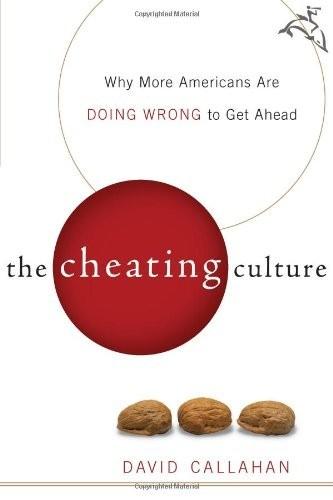
The Cheating Culture: Why More Americans Are Doing Wrong to Get Ahead
by
David Callahan
Published 1 Jan 2004
As Juliet Schor has documented in The Overspent American, nobody actually compares themselves anymore to the Joneses of yesteryear—that is, the next-door neighbor in a similar income group. We are now likely to compare ourselves with "reference groups" who make much more money than we do. If you're rich, you compare yourself to the superrich. You don't want a "McMansion," you want a real mansion—like the one you saw lovingly described in a rerun of Lifestyles of the Rich and Famous. If you're upper middle class, you compare yourself to the rich. If you're middle class or lower class, you might compare yourself to both the upper middle class and the rich.22 Stroll again into that Banana Republic and look around.

The Sense of Style: The Thinking Person's Guide to Writing in the 21st Century
by
Steven Pinker
Published 1 Jan 2014
The new entries in AHD 5 are a showcase for the linguistic exuberance and recent cultural history of the Anglosphere: Abrahamic, air rage, amuse-bouche, backward-compatible, brain freeze, butterfly effect, carbon footprint, camel toe, community policing, crowdsourcing, Disneyfication, dispensationalism, dream catcher, earbud, emo, encephalization, farklempt, fashionista, fast-twitch, Goldilocks zone, grayscale, Grinch, hall of mirrors, hat hair, heterochrony, infographics, interoperable, Islamofascism, jelly sandal, jiggy, judicial activism, ka-ching, kegger, kerfuffle, leet, liminal, lipstick lesbian, manboob, McMansion, metabolic syndrome, nanobot, neuroethics, nonperforming, off the grid, Onesie, overdiagnosis, parkour, patriline, phish, quantum entanglement, queer theory, quilling, race-bait, recursive, rope-a-dope, scattergram, semifreddo, sexting, tag-team, time-suck, tranche, ubuntu, unfunny, universal Turing machine, vacuum energy, velociraptor, vocal percussion, waterboard, webmistress, wetware, Xanax, xenoestrogen, x-ray fish, yadda yadda yadda, yellow dog, yutz, Zelig, zettabyte, zipline If I were allowed to take just one book to the proverbial desert island, it might be a dictionary.

Permanent Record
by
Edward Snowden
Published 16 Sep 2019
The 22100s are some of the most expensive zip codes in America. Eventually, browsing on Craigslist, I found a room that was surprisingly within my budget, in a house surprisingly near—less than fifteen minutes from—CIA headquarters. I went to check it out, expecting a cruddy bachelor pad pigsty. Instead, I pulled up in front of a large glass-fronted McMansion, immaculately maintained with a topiary lawn that was seasonally decorated. I’m being completely serious when I say that as I approached the place, the smell of pumpkin spice got stronger. A guy named Gary answered the door. He was older, which I expected from the “Dear Edward” tone of his email, but I hadn’t expected him to be so well dressed.

The Heat Will Kill You First: Life and Death on a Scorched Planet
by
Jeff Goodell
Published 10 Jul 2023
Melbourne has magnificent elms and gums in the city parks downtown, but if you take the tram out to the western edge of the metropolitan area, it’s hard to find a green leaf anywhere. According to a study by American Forests, a nonprofit that advocates for healthy forests and ecosystems, the city of Austin has the most unequal tree cover of any urban area in the US. Our neighborhood, where humble 1940s homes are being torn down and replaced one by one by glassy McMansions with fourteen-foot ceilings and black roofs, is shaded with great oak and pecan trees. But if I ride my bike out to the east side neighborhoods, where many Black residents were pushed by racial zoning laws (aka redlining) in the early twentieth century, the trees are smaller, the sun is hotter, the temperatures higher.

Moon Coastal Oregon
by
Judy Jewell
and
W. C. McRae
Published 13 Jul 2020
The south end of the drive runs through the northern portion of Bandon State Natural Area, providing parking, beach access, and picnic tables. The once-bucolic drive along the Beach Loop has changed a bit—trophy homes form pretty much the only view you have for the first mile or two. Still, there are state park parking areas that let you put the McMansions to your back and allow a look at the dramatic ocean views or a trek down the bluff to a gorgeous beach. Along this fine stretch of beach are rock formations with such evocative names as Table Rock, Elephant Rock, Garden of the Gods, and Cat and Kittens Rocks. The whole grouping of sea stacks (rocks eroded away from their original cliffs by the sea), included within the Oregon Islands National Wildlife Refuge, looks like a surrealist chess set cast upon the waters.
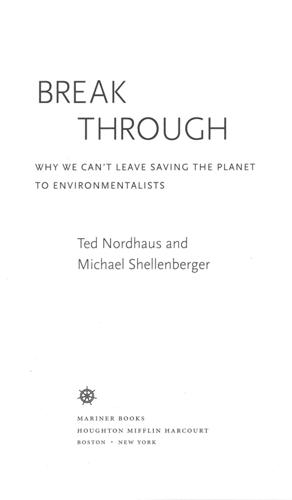
Break Through: Why We Can't Leave Saving the Planet to Environmentalists
by
Michael Shellenberger
and
Ted Nordhaus
Published 10 Mar 2009
But now the exurban populations had reached critical mass (Delaware County alone had grown by almost one-third since the 2000 election), and Republicans were building their own kind of quiet but ruthlessly efficient turnout machine . . . But with so many white, conservative and religious voters now living in the brand-new town houses and McMansions in Ohio’s growing ring counties, Republicans were able to mobilize a stunning turnout in areas where their support was more concentrated than it was in the past. Bush’s operatives did precisely what they told me seven months ago they would do in these communities: they tapped into a volunteer network using local party organizations, union rolls, gun clubs and churches.
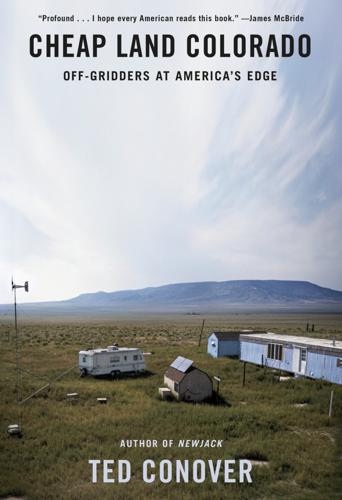
Cheap Land Colorado: Off-Gridders at America's Edge
by
Ted Conover
Published 1 Nov 2022
These included Terry’s dentures, which had been resting in their case atop the stove’s exhaust hood; a Western Airlines ticket folder from 1974 (Denver to Phoenix round-trip); a 2012 notice from the Jefferson County Sheriff’s Office (“deputy attempted to contact you”); a couple of sheets of S&H Green Stamps; practice targets for marksmanship, including one that pictured a bad guy holding a knife to a woman’s neck; a paperback book from 1966 called Flying Saucers—Serious Business; bumper stickers that read, “you’re a great cure for happiness” and “steal here die here”; and business cards and installation invoices from Terry’s carpet service. The calendar from 2013, the year Terry had moved in, had pictures of classic cars in front of McMansions and scantily clad women. It also had notations on various days that I realized were not to-do’s but, rather, accomplishments. For example, April 2013 included: “Put large heater in. Removed propane heater from liv rm, cut a little wood, cut firewood all day, hauled water, Went p.o. and bought food.

Lunar Park
by
Bret Easton Ellis
Published 15 Mar 2005
The sectional couch, the Le Corbusier chairs and the Eames tables had been rearranged for the party, yet this new setup now seemed weirdly familiar to me. I wanted to figure out why, but the sound of the vacuum merging with Victor’s barking forced the ghost to move quickly toward the kitchen. The house had been referred to as a McMansion in the Talk article: nine thousand square feet and situated in a fast-growing and wealthy suburb, and 307 Elsinore Lane wasn’t even the grandest in the community—it merely reflected the routine affluence of the neighborhood. It was, according to a spread in Elle Decor, “minimalist global eclectic with an emphasis on Spanish revival” but with “elements of midcentury French chateau and a touch of sixties Palm Springs modernism” (imagine that if you can; it was not a design concept everyone grasped).

Heaven Is a Place on Earth: Searching for an American Utopia
by
Adrian Shirk
Published 15 Mar 2022
I try to explain the site’s significance, but the context is only interesting in my head: At a stretch of ten whole years, from 1844 to 1854, the North American Phalanx was the single longest of thirty attempts to build a Fourierist phalanx in the United States. The other phalanxes lasted for a year at most, and some only a couple of months. Lina and I drive for a long time around the swampy rural marshland thickets, past old farmhouses and huge bright orange-and-pink McMansions with lion statues and half-moon driveways. Finally, out on the little county thoroughfare named Phalanx Road, as we are heading toward the parkway, we spot it nearly engulfed in the trees and with no pull-out, no way to safely sidle up and squint and say, “Honey, what is a ‘phalanx’?” Lost in the grass is one of those little standard-issue blue-and-yellow New York State historical markers: North American Phalanx.
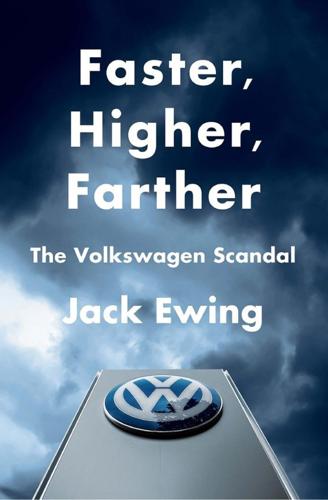
Faster, Higher, Farther: How One of the World's Largest Automakers Committed a Massive and Stunning Fraud
by
Jack Ewing
Published 22 May 2017
Humstone had spent essentially her entire career involved in environmental and planning issues. She boasted that she came from a family that was recycling trash in the 1950s, and she had a master’s degree in city planning from Harvard University. Later she was executive director of the Vermont Forum on Sprawl, which tried to keep the state’s open spaces from being covered by McMansions. When Humstone began shopping for a new car in 2010, she thought first of a Prius, the Toyota hybrid that pioneered the idea of a car that was less harmful to the planet. The Prius was the default choice for any people who considered themselves environmentalists. “All my work was related to being environmentally responsible,” Humstone recalled later.
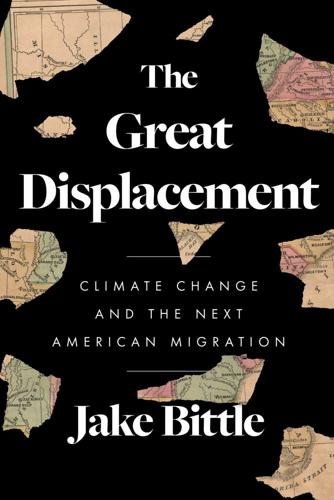
The Great Displacement: Climate Change and the Next American Migration
by
Jake Bittle
Published 21 Feb 2023
They purchased several hundred tons of dirt, hauled the dirt over to the side of the creek, and dumped it on the ground, raising the ground level in the neighborhood just a few inches above the hundred-year floodplain threshold. The developers then wrote a letter to FEMA asking the agency to grant a “letter of map revision”—in other words, to gerrymander the maps—so that they could build on the site. The dirt wasn’t enough to stop Harvey, though, and after the storm, residents returned to find their McMansions filled with brown water. Then there were the neighborhoods that sat outside any kind of floodplain and away from any major bayou, those places where the issue was not riverine flooding but rainfall drainage. Houston’s drainage grid was ancient and inadequate. The sidewalk drains and storm grates were far too narrow to accommodate a massive rainfall event like Harvey, and indeed they had failed several times in the past during lesser storms; many portholes had filled up with leaves and debris over the years, and the city had fallen behind on servicing them, especially in low-income neighborhoods close to the city center.
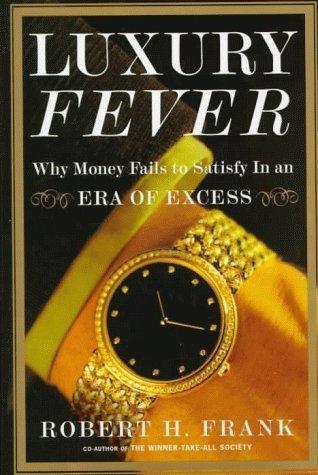
Luxury Fever: Why Money Fails to Satisfy in an Era of Excess
by
Robert H. Frank
Published 15 Jan 1999
Whereas only 18 percent of new homes built in 1986 were 2,400 square feet or larger, a decade later 30 percent were.47 Scottsdale, Arizona, builder Larry Kush notes that the largest houses in his developments now measure 6,000 square feet, up from 4,000 in 1993.48 Of the huge, mass-produced houses built in popular new luxury subdivisions springing up in the suburbs of New York, Alexander Garvin, professor of architecture and planning at Yale, said, “They call them McMansions.”49 Existing data categories conceal the explosive growth in the construction of so-called trophy homes—mansions with more than 10,000 square feet of living space. In Beverly Hills, for example, 17 such houses were sold in 1997, up from only 9 in 1994.50 Along one short stretch of the Florida coast near Palm Beach, 19 private residences ranging from 23,000 to 64,000 square feet have been built in the last several years; and in 1996 alone, 22 houses in the area exchanged hands in the market for prices above $10 million.51 Indeed, many of the mansions constructed in recent years, although smaller than the 1895 Biltmore Estate, threaten to alter the current threshold for what counts as a trophy home.

Everyday Utopia: What 2,000 Years of Wild Experiments Can Teach Us About the Good Life
by
Kristen R. Ghodsee
Published 16 May 2023
Given the deprivations of her childhood, my mother wanted more than anything else to bring up her own children in a cozy nuclear family, in a nice suburban home with a backyard and shag carpeting and chic French doors. From the outside, my family fit every stereotype of middle-class America, with both of my parents insisting we speak English at home so neither my brother nor I would “sound like immigrants.” But those quaint four-bedroom McMansions on the cul-de-sac hide a lot of misery. My mother clung to her fantasies of the 2.3 kids and the two-car garage on the other side of my father’s fists. If Josephine never forgave Cristina for abandoning her to the Baptistine nuns, I harbored a resentment against my own mother for decades. She should have protected herself.
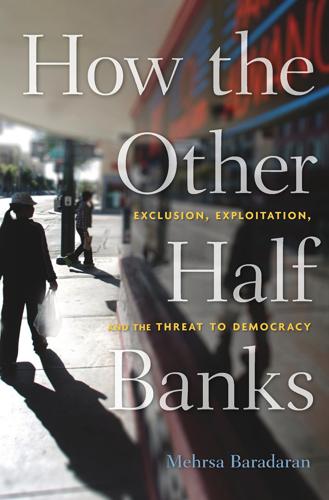
How the Other Half Banks: Exclusion, Exploitation, and the Threat to Democracy
by
Mehrsa Baradaran
Published 5 Oct 2015
“Many were unwilling to put public money on the line to prevent additional foreclosures, because any such program would inevitably involve a bailout of some “irresponsible” homeowners. Put more cynically, spending public money on foreclosure avoidance would be asking responsible taxpayers to subsidize people living in McMansions they could not afford, with flat-screen televisions paid for out of their home equity line of credit.” Ibid. 27. John Tamny, “The Ongoing and Hideous Lie about ‘Victimized’ Mortgage Holders,” Forbes, March 2013, accessed March 17, 2015, www.forbes.com/sites/johntamny/2013/03/05/the-ongoing-and-hideous-lie-about-victimized-mortgage-walkers/. 28.

In-N-Out Burger
by
Stacy Perman
Published 11 May 2009
Martinez worked for In-N-Out dealing with the chain’s cookout trailers, and the two were introduced when they were partnered to learn and perform dance routines at the annual In-N-Out associates’ picnic. The couple later moved into a custom-built $1.21 million four-bedroom house on Valiant Street* in a McMansion-filled cul-de-sac in Glendora. Fronted by perfectly manicured lawns and flanked by nine graceful palm trees, the cream-colored house with a gray slate tile roof and paned windows was situated among the foothills of the San Gabriel Mountains. The house, just minutes away from Esther’s, had a swimming pool and spa, a detached guesthouse, and a three-car garage.
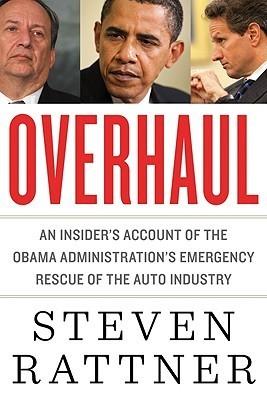
Overhaul: An Insider's Account of the Obama Administration's Emergency Rescue of the Auto Industry
by
Steven Rattner
Published 19 Sep 2010
In its glory days, armed with a strong credit rating, it had fallen into the same bad habits as other elite financial outfits, such as GE Capital and AIG. Like an occasional smoker who gradually acquires a three-pack-a-day habit, GMAC began to abuse its cheap capital, branching out aggressively into other kinds of lending—in particular, residential real estate at the height of the housing bubble. For a while this led to McMansion-size profits for GMAC's residential capital unit, ResCap, but by the end of 2007 it was gushing red ink. GMAC had already lost its investment-grade rating and now had to pour in billions to keep ResCap afloat, weakening its ability to make car loans. Things only got worse. By autumn 2008 GMAC's own survival was in doubt, and it came running to Washington for help.
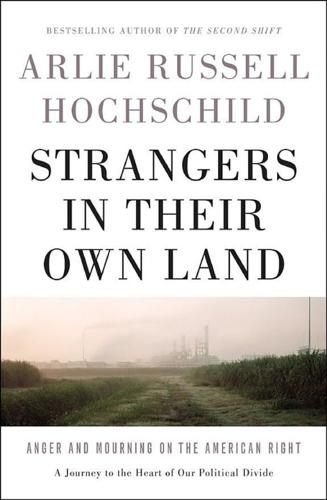
Strangers in Their Own Land: Anger and Mourning on the American Right
by
Arlie Russell Hochschild
Published 5 Sep 2016
But in the liberal deep story, an alarming event occurs; marauders invade the public square, recklessly dismantle it, and selfishly steal away bricks and concrete chunks from the public buildings at its center. Seeing insult added to injury, those guarding the public square watch helplessly as those who’ve dismantled it construct private McMansions with the same bricks and pieces of concrete, privatizing the public realm. That’s the gist of the liberal deep story, and the right can’t understand the deep pride liberals take in their creatively designed, hard-won public sphere as a powerful integrative force in American life. Ironically, you may have more in common with the left than you imagine, for many on the left feel like strangers in their own land too.
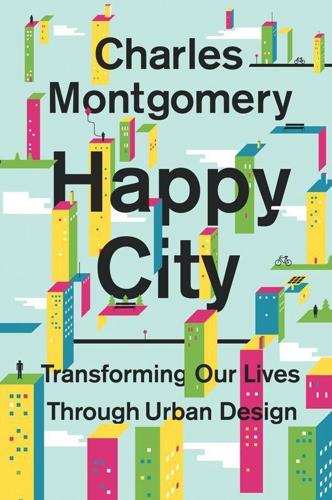
Happy City: Transforming Our Lives Through Urban Design
by
Charles Montgomery
Published 12 Nov 2013
Her how-to guide, the Sprawl Repair Manual, offers some wildly ambitious prescriptions: Business parks can be fixed by inserting streets and shops onto their tarmacs. Urban highways can be morphed into main streets by putting them on diets and slowing them down with narrower lanes, streetlights, and crosswalks. Disconnected tangles of cul-de-sac can be made walkable by strategic grafting of new roads and lanes between them. Huge, unaffordable McMansions can be divided into apartments. Gas stations can be humanized by wrapping their parking lots in new street-front businesses. Parts of the Sprawl Repair Manual read like a blueprint for a fantasy urban universe; anything is possible on paper. But some of Tachieva’s prescriptions have already come to life in pockets across the continent.

The Looting Machine: Warlords, Oligarchs, Corporations, Smugglers, and the Theft of Africa's Wealth
by
Tom Burgis
Published 24 Mar 2015
‘But in life you have to take risks.’58 What Frederic Cilins had not known when he sat down with Mamadie Touré in April 2013 to try to persuade her to destroy the contracts promising her cash and shares for helping BSGR and to catch a plane out of the United States was that the FBI was listening in. When she arrived in Florida following Lansana Conté’s death, the dictator’s widow had bought what Americans disparagingly call a ‘McMansion’, a luxurious residence built with more grandeur than taste.59 Once Alpha Condé took power, the investigation he launched into how BSGR had won its rights followed the trail to her doorstep. The investigators whom Guinea’s new government had hired to conduct the probe shared what they had discovered with US prosecutors, who in early 2013 convened a grand jury and pressed ahead with their own investigation.

Dopesick: Dealers, Doctors and the Drug Company That Addicted America
by
Beth Macy
Published 4 Mar 2019
It would be three more years before another federal agency would put his mother’s suggestions into practice. PART THREE “A Broken System” George’s Chicken, Edinburg, Virginia Note from Tess Henry, Roanoke, Virginia Chapter Nine Whac-A-Mole By 2014, the suburban heroin-dealing scene had become entrenched in Roanoke’s McMansion subdivisions and poor neighborhoods alike. But the largest dealers weren’t twice-convicted felons like Ronnie Jones with elaborate dope-cutting schemes, multiple cars, and hired mules. They were local users, many of them female, dispatched to buy the heroin from a bulk dealer out of state, in exchange for a cut.
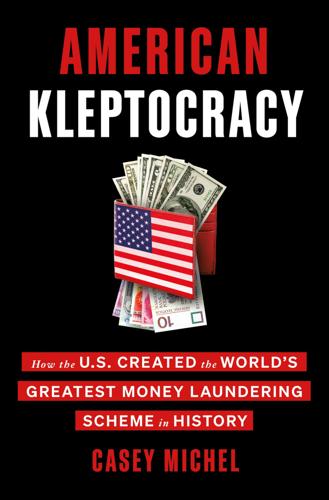
American Kleptocracy: How the U.S. Created the World's Greatest Money Laundering Scheme in History
by
Casey Michel
Published 23 Nov 2021
We already know what the solution is: the end of anonymity. The end of anonymous cash purchases, of anonymous shell purchases, of anonymous purchases made via American attorneys who hide the identities of their clients behind attorney-client privilege. Time and again—in skyscrapers and condos, in McMansions and steel mills, in tired factories and entire cities—that anonymity in American real estate has fired the motors of global kleptocracy. For decades, American real estate has provided anonymity for anyone who wants it, for anyone looking to transform their dirty money into legitimate assets. It’s a reality that has lined the pockets of the broader real estate industry—and has had devastating effects on sagging downtowns and local communities in the U.S., and on entire nation-states abroad watching their treasuries and banks looted and laundered via American real estate.

Frostbite: How Refrigeration Changed Our Food, Our Planet, and Ourselves
by
Nicola Twilley
Published 24 Jun 2024
According to the most recent statistics from the Global Cold Chain Alliance, the world’s chilled and frozen warehouse space increased by nearly 20 percent between 2018 and 2020—a leap that still left most of the planet’s citizens provisioned using less than a sixth of the cold-storage capacity required to feed the average American. (The standard domestic fridge, at between twenty and twenty-five cubic feet, is just a tiny closet in the distributed, McMansion-sized pantry it takes to preserve our perishables.) While ecologists and explorers concern themselves with the shrinking natural cryosphere—Earth’s frozen poles and permafrost—this alternate, entirely artificial cryosphere is expanding virtually unnoticed, all around us. My fascination with the cold chain began about fifteen years ago, when the farm-to-table movement was picking up steam in the media.
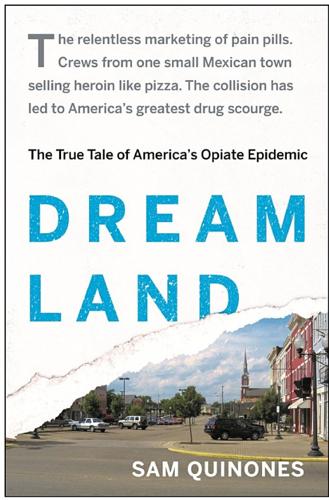
Dreamland: The True Tale of America's Opiate Epidemic
by
Sam Quinones
Published 20 Apr 2015
New York retirees, in turn, flooded the town and Charlotte learned what a bagel was. Six other Fortune 500 companies appeared, as did NBA and NFL franchises, and a silver skyline. Charlotte’s metro area includes almost fifty golf and country clubs. The town’s southern end absorbed the better-off newcomers, who transformed it from cow pastures to a sprawl of McMansions and shopping malls in less than a generation. Latino immigrants came for the jobs, too. Attracted to the state by agriculture and pork slaughterhouse work, they filled in fading North Carolina rural towns, then moved to the more stable work in Charlotte. The city’s Latino population grew faster than any in the country.
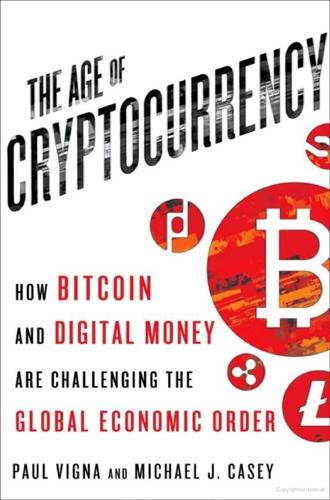
The Age of Cryptocurrency: How Bitcoin and Digital Money Are Challenging the Global Economic Order
by
Paul Vigna
and
Michael J. Casey
Published 27 Jan 2015
All you need to do to generate a bitcoin wallet is to generate a large random number, and pretty much anything can do that.” Right now you are probably wondering why we’d give a machine such rights. Because we could program it to provide the cheapest and most efficient service possible, Hearn’s car would be focused on maximizing productivity and surviving, not building up a fat pile of retained earnings to spend on McMansions and trips to the Bahamas. It could keep its profit margins superthin and its prices low. That said, if it brought in more revenue than expenses, the car could be programmed to “have children,” as Hearn puts it, investing its excess bitcoins in new driverless cars that would “inherit” a clone of its software program.
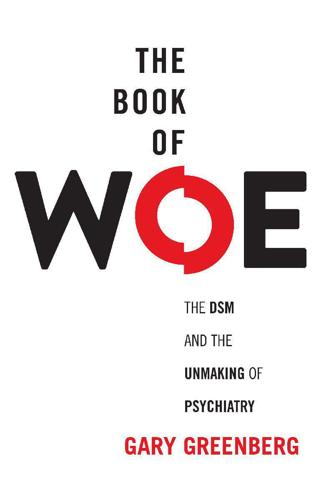
The Book of Woe: The DSM and the Unmaking of Psychiatry
by
Gary Greenberg
Published 1 May 2013
I was eventually cured of my maladjustment—not by therapy, but by a family coup that resulted in my grandfather’s being relieved of the farm he’d inherited from his mother. That happened to be the land on which I’d built my home, and so I was evicted, my cabin eventually bulldozed and the land converted to McMansions, and it became necessary for me to earn a living. Of the many adjustments I have had to make, diagnosing people in order to secure an income was one of the strangest—not only because the DSM’s labels seemed so insufficient, its criteria so deracinated, the whole procedure so banal in comparison with the rich and disturbing and ultimately inexhaustible conversation that was occurring in my office, but also, and much more important, because of the bad faith involved.
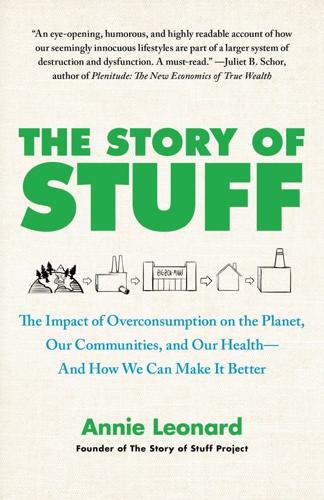
The Story of Stuff: The Impact of Overconsumption on the Planet, Our Communities, and Our Health-And How We Can Make It Better
by
Annie Leonard
Published 22 Feb 2011
Second, I noticed the absence of something even more important: homeless people. I didn’t see a single homeless person, shanty, or slum. No trashed neighborhoods. No piles of garbage in the neighborhoods deemed unimportant by municipal officials. The homes we passed were modest compared to U.S. McMansions but were in good shape and well maintained. I asked my guide, local waste expert Alan Watson, where the poor people lived, and he looked at me quizzically. “We have a strong social safety net here, so we don’t have a lot of poor people like you do.” Finally, in a far-off field, I saw a bunch of small structures that looked almost like shanties from a distance.

The Ones We've Been Waiting For: How a New Generation of Leaders Will Transform America
by
Charlotte Alter
Published 18 Feb 2020
Jacob Frey (b. 1981) made housing a central focus of his run for mayor of Minneapolis. He called housing a “full-blown crisis for millennials.” Because they were marrying later, having fewer kids, and trying to reduce their carbon footprint, millennials wanted to live someplace dense and walkable, with public transportation: boomers’ exurban McMansions held little appeal for them. Once he was elected, Frey eliminated single-family exclusive zoning in Minneapolis, allowing more duplexes and triplexes to be built as part of a $40 million affordable housing plan for the city. “This is not the American dream of the 1950s, where the whole goal was that white picket fence out in the suburbs with a forty-five-minute commute to work,” Frey told me.
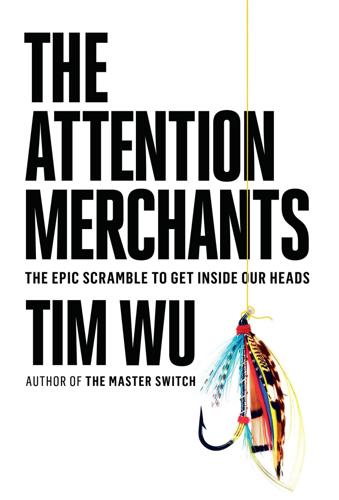
The Attention Merchants: The Epic Scramble to Get Inside Our Heads
by
Tim Wu
Published 14 May 2016
Nevertheless, over time, programmers found that the reality moss could overgrow other demographics, too: there would be offerings for middle-aged men, like The Deadliest Catch (a show featuring fishermen); ones for women with children, like Wife Swap, focused on keeping house; and for unreconstructed materialists of all ages, Real Housewives, an unscripted soap set in the McMansions of the affluent but never satisfied. Indeed, over the next decade, there would be almost three hundred new reality shows trying almost every conceivable permutation of attention capture tricks, including talent shows (American Idol), launching your successful start-up (Shark Tank); pathology voyeurism, formerly known as freak shows (Hoarders); variations on a theme of The Real World (Jersey Shore, group living featuring the Italian American “Guido” subculture), celebrity family life (The Osbournes, showing the ordinary domesticity of former Black Sabbath front man Ozzy Osbourne); women marrying for money, men for trophy (Million Dollar Matchmaker); making it yourself—a better life through real estate (The Million Dollar Listing).

Masters of Management: How the Business Gurus and Their Ideas Have Changed the World—for Better and for Worse
by
Adrian Wooldridge
Published 29 Nov 2011
Just as the Great Depression of the 1930s led to the rise of the suburbs, and the great malaise of the 1970s led to the rise of the sun belt, the crash of 2007–08 will hasten the rise of high-density cities. “Every phase or epoch of capitalism has its own distinct geography,” he argues, “and the next phase will have the geography of the inner city.” The housing crash will persuade people to stop driving themselves into debt to buy McMansions and the SUVs that go with them; instead they will start renting lofts and getting on their bicycles, helping to produce a general civilizational shift of shrinking suburbs and expanding urban cores. But what exactly does creativity mean? Why do some people have it and others not? How can you encourage people to be more creative, and how can you build creativity into the DNA of your company?

The Billionaire Raj: A Journey Through India's New Gilded Age
by
James Crabtree
Published 2 Jul 2018
Some years before, he had knocked down his family’s old bungalow and replaced it with a garish skyscraper named Kingfisher Tower. This was partly a commercial venture, with apartments for sale in the lower levels. But perched at the top on a slab of white concrete was a 40,000-square-foot “sky bungalow” for Mallya’s own use, said to be worth $20 million. India’s most conspicuous McMansion looked vaguely like the White House, albeit 400 feet further up in the air. Given his refugee status, it was unclear whether its owner would ever actually get to live in it.6 “It’s not going to happen for a few generations. I mean, it’s a very deep-rooted system of corruption,” he went on, his shoulders hunched, talking about faltering government attempts to cut graft.

Columbine
by
Dave Cullen
Published 3 Mar 2010
The newer teachers didn’t approve of that behavior, and they didn’t fit in at the Lounge anyway. Neither did the wave of upscale suburbanites who began flooding into Jeffco in the late 1970s, overwhelming Columbine’s student body. New Columbine went for fern bars and Bennigan’s, or private parties in their split-level “ranch homes” and cathedral-ceilinged McMansions. Cassie Bernall’s family was New Columbine, as were the Harrises and the Klebolds. Mr. D arrived as Old, but evolved with the majority to New. Old Columbine remained, outnumbered but unfazed by the new arrivals. Many older families lived in actual ranch houses built half a century earlier on the small horse ranches occupying most of the area when the high school was constructed.

Cities Under Siege: The New Military Urbanism
by
Stephen Graham
Published 30 Oct 2009
It was not an accident that the suburban project faltered briefly in the 1970s, when America’s oil production entered its long decline, OPEC seized the moment, and oil prices shot up. Notice that the final suburban blowout occurred after 1990, when the North Sea and Prudhoe Bay oil strikes came into full production … That ushered in the climactic phase of suburbia, as represented by things like the standard 4000-square-foot Toll Brother’s McMansion and the heyday of the super-gigantic SUV to go with it.40 THE $230 FILL-UP As John Amidon, a lieutenant colonel with the USAF’s Air University, puts it, ‘imported oil dependence has become the proverbial elephant in the [US] foreign policy living-room: an over-riding strategic consideration in a multitude of issues’.

Sixty Days and Counting
by
Kim Stanley Robinson
Published 27 Feb 2007
So as they moved to the next room of the open gallery he tried to change the subject to his own situation, but Phil was absorbed in the Depression statues, which Charlie found less compelling despite their inherent pathos: Americans standing in a bread line, a man sitting listening to a fireside chat on a radio. “I see a nation one-third ill fed, ill housed, ill clothed.” “It’s almost like the problem is the reverse now,” Phil observed. “I see a nation one-third too fat, too clothed, too McMansioned, while the third that is ill fed and ill housed still exists.” “And they’re all in debt, either way.” “Right, but what do you do about that? How do you talk about it?” “Maybe just like you are now. These days, Phil, I think you get to say what you want. Like on your goddam blog.” “You think?”
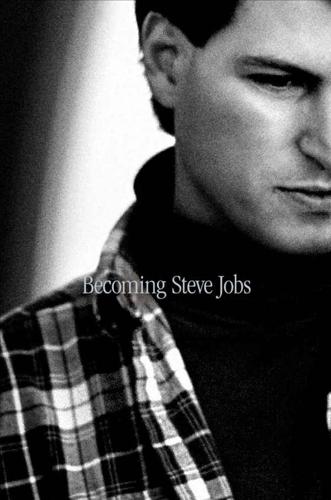
Becoming Steve Jobs: The Evolution of a Reckless Upstart Into a Visionary Leader
by
Brent Schlender
and
Rick Tetzeli
Published 24 Mar 2015
Apple’s beautiful flat-screen Cinema Display monitors grew bigger and sharper. The company that had pushed harder than any other to make Wi-Fi the standard protocol for networking introduced Airport Extreme, a heavy-duty Wi-Fi server for home users, and Airport Express, which could extend a Wi-Fi network throughout an entire McMansion. For users who wanted to make their online chats visual, the company started selling iSight, a Web camera that perched atop their computer monitor. A line of Web servers called Xserve, aimed at businesses, also got an upgrade. And last, but hardly least, iPod users got two special treats in 2004: the sleek and slender iPod Mini, and an iPod Classic with a color screen that could display photos.
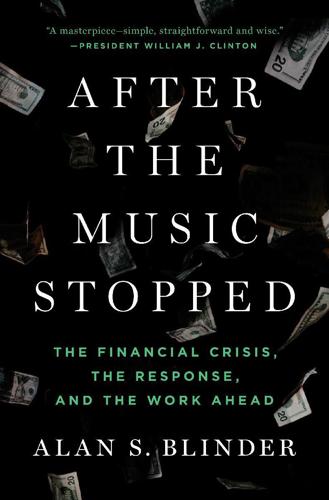
After the Music Stopped: The Financial Crisis, the Response, and the Work Ahead
by
Alan S. Blinder
Published 24 Jan 2013
Egged on and assisted by an unscrupulous real estate agent looking for a big commission, the Ramirezes obtained a $720,000 mortgage from the notorious (and now bankrupt) New Century Financial Corporation to buy a $720,000 house. Yes, you read that right: They didn’t put a penny down, and the mortgage was forty-eight to sixty times their annual income! The real estate agent apparently recorded their income as $12,000 per month and their occupations as “field technicians.” Slight errors. The Ramirezes moved into their McMansion with another family, and somehow, including receiving financial help from the real estate agent, managed to hang on for a few years before defaulting and losing their home to foreclosure. Now, here’s a simple test of banking IQ: Should that mortgage have been granted? You may not be an experienced banker, but your no answer is correct.

Daemon
by
Daniel Suarez
Published 1 Dec 2006
Sebeck took out a pad and pen. “So you’re the PR guy? What’s CyberStorm Entertainment do, Ron?” “We’re a leading computer game developer. Ever hear of Over the Rhine?” “No.” Burkow shouted from down near the gate. “Pete. I got a name from the DMV. The bike’s registered to a Joseph Pavlos. Lives up in those McMansions on the hilltop.” Massey put a hand to his chin. “Oh man.” “You know the victim?” “Yeah. He’s one of our senior developers. What happened?” Sebeck gestured with his pen. “He hit this cable with his neck. Do you know if he rode down here regularly?” “I don’t, but his development team might.” Pietro returned with a Mexican man in his forties dressed in a green jumpsuit.

Lifespan: Why We Age—and Why We Don't Have To
by
David A. Sinclair
and
Matthew D. Laplante
Published 9 Sep 2019
As Steven Pinker has pointed out, a lot of the time, energy, and money we once spent making “stuff” is now “directed toward cleaner air, safer cars and drugs for ‘orphan diseases.’ ”29 Meanwhile, the “experiences, not things” movements and the like are transforming the ways in which we save and spend money—and leaving us with less crap in our basements. After a century of movement toward McMansions, the latter half of the 2010s saw a significant drop in the square footage of new homes and increasing demand for smaller apartments,30 continuing a centuries-long migration from farm-based rural living to smaller, shared urban spaces. As the global success of WeWork proves, today’s young adults are not only comfortable with much smaller working and living quarters, with shared community spaces such as offices, kitchens, gyms, laundries, and lounges, but increasingly are demanding them.31 The slow death of stuff is not the end of consumption, though.

Eastern USA
by
Lonely Planet
NEW JERSEY FACTS »Nickname Garden State »Population 8.8 million »Area 8722 sq miles »Capital city Trenton (population 85,000) »Other cities Newark (population 277,000) »Sales tax 7% »Birthplace of musician Count Basie (1904−84), singer Frank Sinatra (1915−98), actor Meryl Streep (b 1949), musician Bruce Springsteen (b 1949), actor John Travolta (b 1954), musician Jon Bon Jovi (b 1962), rapper Queen Latifah (b 1970), pop band Jonas Brothers: Kevin (b 1987), Joseph (b 1989), Nicolas (b 1992) »Home of the first movie (1889), first professional baseball game (1896), first drive-in theater (1933), the Statue of Liberty »Politics Republican governor Chris Christie though strong traditionally Democratic legislature »Famous for The Jersey Shore (the real thing and MTV reality show), the setting for The Sopranos, Bruce Springsteen’s musical beginnings »Number of wineries 36 »Driving distances Newark to NYC 11 miles, Atlantic City to NYC 135 miles NEW JERSEY There are McMansions, à la the Real Housewives of New Jersey (NJ), guys who speak with thick Jersey accents like characters from a TV crime drama, and guidos and guidettes who spend their days GTL’ing (gym, tan and laundry) on the Shore. However, the state is at least as well defined by high-tech and banking headquarters and sophisticated, progressive people living in charming towns.
…
Immersing yourself in the soul, rhythm, history and perseverance of the Delta blues (Click here) in Clarksdale, MS Exploring the caverns, mountains, rivers and forests of Arkansas’ Ozark Mountains (Click here), where folk music reigns Falling for the hauntings, murderous tales and Southern hospitality in Georgia’s living romance novel, the architecturally pristine Savannah (Click here) NORTH CAROLINA It’s trailer parks next to McMansions in North Carolina, where the Old South stands shoulder-to-shoulder with the New South. From the ancient mountains in the west to the sandy barrier islands of the Atlantic you’ll find a variety of cultures and communities not easy to stereotype. The fast-growing state is a patchwork of the progressive and the Stone Age: Asheville was named the ‘New Freak Capital of the US’ by Rolling Stone, while cohabitation of unmarried couples was technically illegal until 2006.

Empire of Things: How We Became a World of Consumers, From the Fifteenth Century to the Twenty-First
by
Frank Trentmann
Published 1 Dec 2015
Kohler’s Cape Cod model family home advertised new fixtures in the bathroom, but the living room mixed colonial revival furnishings with hand-me-downs to show the continuity of family life across generations.51 Making the family home the pivot of a national culture, then, gave consumption a new legitimacy, connecting past, present and future. Instead of being a threat to family and social stability, consumption now appeared its rock. This message would not be lost on future conservatives. Not everyone agreed. A two-storey 22 by 30 feet home was not exactly a McMansion – by 2005, the median American home had ballooned to almost twice this size (2,300 square feet). Still, the spread of standardized homes raised fears about shallow conformity. No single source expressed this better than Babbitt, Sinclair Lewis’s great American novel. Published in 1922, Babbitt sold a phenomenal 140,000 copies in its first four months.52 H.
…
Wright Mills pointedly noted that the cover of Life magazine featured not a single debutante ‘but no less than 178 movie queens, professional models, and the like . . . ’ 101 Significantly, it was the post-war decades of rising equality (1950s–’70s) that were also the years of the big consumer boom, in the USA and Western Europe alike. Tail-fins were getting longer in the 1950s. American homes, too, were getting bigger well before McMansions started to mushroom in suburbia in the 1990s. The super-rich were, in fact, downsizing in the 1950s–’60s, abandoning one luxurious mansion in Newport after another for a more ‘normal’ existence. Interestingly, American houses stopped growing in the 2000s, in spite of dizzying bonuses and escalating inequality.
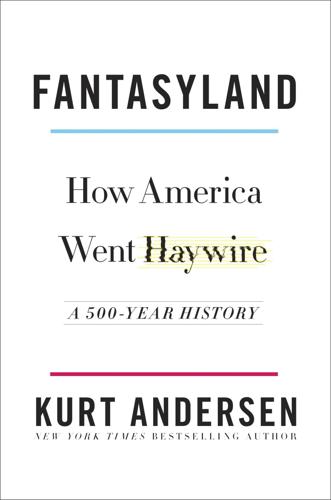
Fantasyland: How America Went Haywire: A 500-Year History
by
Kurt Andersen
Published 4 Sep 2017
New Urbanism was upscale Disneyfication before the people running Disney called themselves New Urbanists. Celebration is a self-conscious reproduction of some fictional but ideal American town circa 1945, population 7,500, coherent, stylistically consistent, walkable, bikable, and charming. It isn’t gated, and it’s not just a bunch of McMansions plopped around a golf course. It looks like an actual community—although one transplanted from Ohio or Connecticut to the tropics. It’s a fantasy. But if I had to move to central Florida, I might choose to live in Celebration. The Siegels are a Celebration family. When Jim Siegel took early retirement as a Ford executive, he and his wife, Marita, wanted to move someplace warmer than Michigan.

WTF?: What's the Future and Why It's Up to Us
by
Tim O'Reilly
Published 9 Oct 2017
“I have never been appreciated, in retail, for any potential other than selling other people crap, half of which they do not need, and most of which they probably cannot really afford. I hate being used like that, I want a useful job. I am the 99%.” “We never chose irresponsibly. We were careful not to live outside our means. We bought a humble home and a responsible car; no McMansion, no Hummer. We were OK till my husband was laid off. . . . After six months of unemployment, he was fortunate enough to find work. However, it is 84 miles of commuting a day and it’s 30% less pay. . . . My husband’s fuel costs are almost one of his bi-weekly paychecks. We are in a loss mitigation and loan modification program with our mortgage lender, and struggling with everything we have to keep our little house.

A Generation of Sociopaths: How the Baby Boomers Betrayed America
by
Bruce Cannon Gibney
Published 7 Mar 2017
Clinton blithely proceeded with the first nominee even after she disclosed her knowing impropriety; both Clinton and Joe Biden, then on the Judiciary Committee, seemed to be of the view that “everybody does it,” until scandal forced them to proclaim that everybody does not do it.21 Both nominees were (inevitably) Boomers.* Their nominations failed as nativists expressed outrage. Of course, many of those making pilgrimages to Capitol Hill to vent their spleens returned to McMansions tended by their own staff of illegal gardeners, contractors, and nannies. Whatever partisans said, Boomer America wanted these immigrants and the cheap labor they provided, just as they wanted cheap foreign goods. As drug cartels know, where there is demand, there is supply, so immigrants are here, legally and otherwise.

The Billionaire's Apprentice: The Rise of the Indian-American Elite and the Fall of the Galleon Hedge Fund
by
Anita Raghavan
Published 4 Jun 2013
Why not cook her dinner, the analyst suggested, adding that women often liked it when men showed their feminine side. “I have a South Asian woman to cook dinner,” he snapped back. Rengan and Raj spoke several times a day, exchanging investment ideas over the phone. On weekends, Rengan often headed to Greenwich. He enjoyed hanging out with Raj and his family at their spacious McMansion in what’s known as Back Country, Greenwich, an area that once housed sprawling horse farms and big estates. Set well away from the main road, behind a stone wall that stretches around the perimeter of the property, the Rajaratnam estate, with a long driveway leading up to the main house, was secluded just like a fly-below-the-radar hedge fund manager would want.
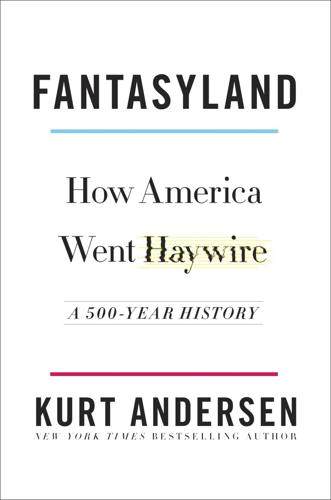
Fantasyland
by
Kurt Andersen
Published 5 Sep 2017
New Urbanism was upscale Disneyfication before the people running Disney called themselves New Urbanists. Celebration is a self-conscious reproduction of some fictional but ideal American town circa 1945, population 7,500, coherent, stylistically consistent, walkable, bikable, and charming. It isn’t gated, and it’s not just a bunch of McMansions plopped around a golf course. It looks like an actual community—although one transplanted from Ohio or Connecticut to the tropics. It’s a fantasy. But if I had to move to central Florida, I might choose to live in Celebration. The Siegels are a Celebration family. When Jim Siegel took early retirement as a Ford executive, he and his wife, Marita, wanted to move someplace warmer than Michigan.

When the Heavens Went on Sale: The Misfits and Geniuses Racing to Put Space Within Reach
by
Ashlee Vance
Published 8 May 2023
It seemed as though the owners had left everything in the house except their dishes. It had a piano, a bar with an acrylic countertop, some furniture, and a home theater with a projector. A pastel color theme ran throughout the house with lots of light pinks and light blues. Take everything in, and you ended up with a five-thousand-square-foot McMansion in a very nice tree-filled Silicon Valley suburb that would soon have an unusual set of rotating inhabitants. Marshall served as the core around which the group assembled. He’d met Schingler and Cowan-Sharp when they were all college students taking part in the youth space meetings, and they’d become fast friends.

Stranger Than Fiction: Lives of the Twentieth-Century Novel
by
Edwin Frank
Published 19 Nov 2024
Looking back, we also see that from its beginning the book has been haunted by the question not only of what is wrong with Japan, but with West and East. Its opening scene, in which the student first catches sight of Sensei, is set in Kamakura, which Japanese readers would have known as a popular beach resort in a town famous for its venerable Zen monastery, where workers from the city blanket the sand while the McMansions (an apt enough anachronism here) of the Meiji nouveau riche encroach upon peasant rice fields. The reason the student notices Sensei is that Sensei is there in the company of a Westerner, an unusual pairing made all the more unusual by the Westerner’s wearing a Japanese swimsuit, revealing compared with the Western bathing clothes of the time.
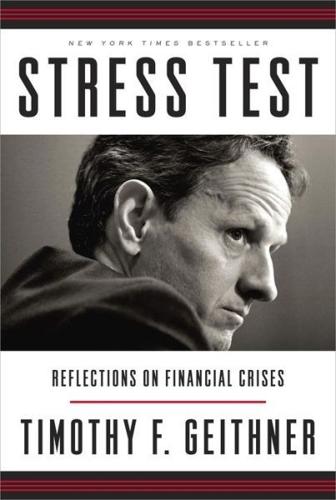
Stress Test: Reflections on Financial Crises
by
Timothy F. Geithner
Published 11 May 2014
And while we did commit $50 billion in TARP funds for that purpose, we estimated that about eight million homeowners were at risk of foreclosure, and millions more were in distress. Trying to figure out which ones to help was a thorny policy problem. Our goal was not to subsidize borrowers who splurged on overpriced McMansions and vacation homes and investment properties, or took out home equity loans to buy swimming pools and fancy cars. We knew that a few outrageous stories of aid to reckless speculators and scam artists could cripple support for our entire housing program. We also wanted to avoid spending billions of taxpayer dollars to restructure mortgages for families who would lose their homes even with government help; inevitably, some innocent victims of the crisis would have to move into cheaper homes or rental properties.

California
by
Sara Benson
Published 15 Oct 2010
It’s also a place of seismic, often contentious, development. Housing prices in the coastal cities have sprawled eastward to pave over half a million acres in the last decade. Where there were once cattle ranches and vineyards are now the nostalgically named developments of American anyplace: a big-box shopping complex named Indian Ranch, a tidy row of McMansions named Vineyard Estates. To sink your teeth into the region, skip I-5 and travel on Hwy 99 – a road with nearly as long a history as the famous Route 66. It’ll be hot – very hot – so put the windows down and crank up the twangy traditional country or the booming traditional norteño (an accordion-driven genre of folk music imported from Mexico) that dominate the radio.
…
CRYSTAL COVE STATE PARK Once you get past the parking lots ($10), it’s easy to forget you’re in a crowded metropolitan area at this state beach ( 949-494-3539; www.parks.ca.gov; Pacific Coast Hwy; 6am-sunset), where visitors are treated to 2000 acres of undeveloped woodlands and 3.5 miles of coastline. Everyone thought the hilltops were part of the state park too, until the Irvine Company, the actual landowner, bulldozed them to make room for McMansions that are the dream of many an OC resident. For a more discreet, short-term stay, reserve one of the park’s inland campsites (it’s a 3-mile hike each way) with Reserve America ( 800-444-7275; www.reserveamerica.com; tent sites $15). NEWPORT BAY ECOLOGICAL RESERVE Inland from the harbor, where run-off from the San Bernardino Mountains meets the sea, the brackish water of the Newport Bay Ecological Reserve supports more than 200 species of bird.
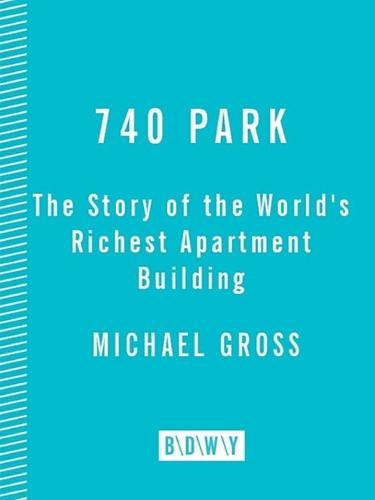
740 Park: The Story of the World's Richest Apartment Building
by
Michael Gross
Published 18 Dec 2007
And you’ve passed a co-op controlled by the oldveau crowd, which means you’re acceptable. So you get double bang for your buck.” A co-op at 740 Park, then, is the ultimate sign of arrival: gilt by association with an address that’s now more elevated than most of its residents. Spending $20 million on one of its apartments, rather than on a tacky yacht, an ugly McMansion, or a glass-walled condo, demonstrates not only wealth but taste and readiness (as opposed to willingness) to take a place in the highest echelons of the plutocracy. It’s as refined a form of ostentation as buying a van Gogh at auction, guaranteed to enhance one’s brand and ensure it never loses its desirability.

PostGIS in Action
by
Regina O. Obe
and
Leo S. Hsu
Published 2 May 2015
Geometry A contains properly B if all points of B are within the interior of A. Contains properly is faster to compute than other relationship functions because boundaries don’t come into play. If you want to be absolutely certain that one geometry is entirely within another, use contains properly. For example, you may want to make sure your new McMansion is properly contained within one municipality to make sure you’re not going to be taxed twice. Contains properly will give you the same result as contains except in the case where any part of geometry B sits on the boundary of A. Here are a few points to keep in mind about ST_ContainsProperly: It’s not an OGC SQL/MM function; it’s a PostGIS-specific function.

PostGIS in Action, 2nd Edition
by
Regina O. Obe
and
Leo S. Hsu
Published 2 May 2015
Contains properly is faster to compute than other relationship functions because boundaries don’t come into play. If you want to be absolutely certain that one geometry Licensed to tracy moore <nordick.an@gmail.com> www.it-ebooks.info 231 Relating two geometries is entirely within another, use contains properly. For example, you may want to make sure your new McMansion is properly contained within one municipality to make sure you’re not going to be taxed twice. Contains properly will give you the same result as contains except in the case where any part of geometry B sits on the boundary of A. Here are a few points to keep in mind about ST_ContainsProperly: It’s not an OGC SQL/MM function; it’s a PostGIS-specific function. It was introduced in PostGIS 1.4. It requires GEOS 3.1 or above.

USA's Best Trips
by
Sara Benson
Published 23 May 2010
Unlike many other communities of its size, which tend to give in to quick development cash in the form of fast-food outlets and gas stations, New Castle has realized it can trade in on something better: its aesthetic appeal. The cobblestoned town square, a fringe of lovely park that fronts the Delaware River and well-plotted, dignified middle-class row houses make one weep to think of the McMansions that mar so much of the American suburban landscape. * * * ROUTE 9 ON OUR MINDS It’s not rife with dollhouses, but Rte 9 between Odessa and New Castle is one of the prettiest roads in the state, cutting through a picture-perfect wetland-scape of countless swamps draining into the mirror-flat Delaware River.

The Stack: On Software and Sovereignty
by
Benjamin H. Bratton
Published 19 Feb 2016
That said, the current ecological emergency extends, rather than supersedes, the importance of totality as interpretive instrument, especially with regards to planetary-scale computation. When I peruse with fascination all the right-wing conspiracies theories about “Green totalitarianism,” Agenda 21, and carbon police confiscating McMansions, I can't help but wonder if the right has a more active and forceful vision (however goofball) for the left than the left does. At the same time, we are sensitive that just as well-meaning initiatives too often sour into failure (and wonder if we should instead design evil things that will decay into something wonderful and successful) we know that the anti-strategy of neo-feudal secession may, however counterintuitively, usher in a geopolitics that provides a platform that—in time—may unwind the social hierarchies that inaugurated it.
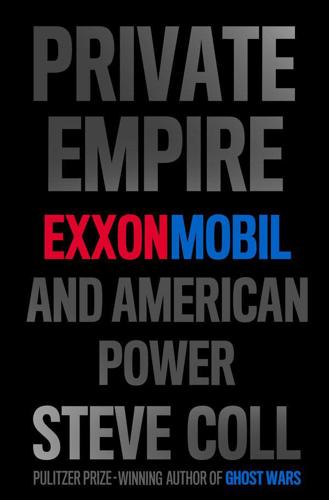
Private Empire: ExxonMobil and American Power
by
Steve Coll
Published 30 Apr 2012
In 1984, Exxon shut its first station in the neighborhood and opened a new one nearby, in the midst of the three-way intersection: Jacksonville Exxon, station number 2-8077, as it was known in the corporation’s vast system of retail gasoline manufacturing and distribution. Suburban sprawl encroached as the years passed, and later, new subdivisions of brick McMansions with granite countertops and chef’s appliances sprang up in the woods. Doctors and city executives refurbished old flagstone farms and transformed them into elegant country estates each worth a million dollars or more. The small ramblers from the 1960s seemed dwarfed by the larger new residences, but all of the area’s homes rose steadily in value as the great American housing bubble inflated.

Growth: From Microorganisms to Megacities
by
Vaclav Smil
Published 23 Sep 2019
And there has been important additional growth beyond the standard, mass-scale housing developments as an increasing share of American houses has been custom-built, and the average size of those structures has surpassed 450 m2 (nearly double the size of mass-built housing) and almost five times the size of a typical Japanese house. Moreover, since the 1980s there has been a discernible trend toward even larger, ostentatious so-called McMansions, with living area in excess of 500 or even 600 m2. Although expensive, they are often poorly built, odd looking, and esthetically offensive. In contrast to this American excess, the recent growth of average living space has remained subdued in both Europe and Japan, but no other country has seen such a rapid growth of living space (albeit from a very low base) as China (including some imitations of American styles).

Coastal California
by
Lonely Planet
Crystal Cove State Park PARK ( 949-494-3539; www.crystalcovestatepark.com; Pacific Coast Hwy; 6am-sunset) Once you get past the parking lots ($15), it’s easy to forget you’re in a crowded metropolitan area at this state park, where visitors are treated to 2000 acres of undeveloped woodlands and 3.5 miles of coastline. Everyone thought the hilltops were part of the state park too, until the Irvine Company, the actual landowner, bulldozed them to make room for McMansions that are the dream of many OC residents. For a more discreet, short-term stay, reserve one of the park’s inland campsites (it’s a 3-mile hike each way) with Reserve America ( 800-444-7275; www.reserveamerica.com; tent sites $20). Newport Bay Ecological Reserve NATURE RESERVE Inland from the harbor, where runoff from the San Bernardino Mountains meets the sea, the brackish water of the Newport Bay Ecological Reserve supports more than 200 species of birds.
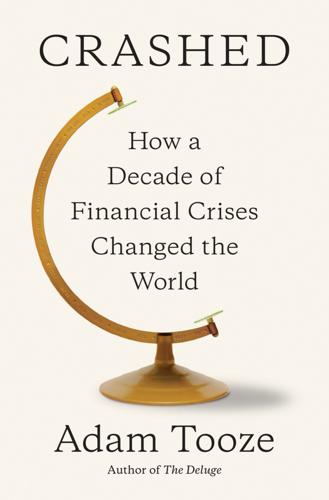
Crashed: How a Decade of Financial Crises Changed the World
by
Adam Tooze
Published 31 Jul 2018
But compared with the grand sweep of global economic imbalances and the Sino-American relationship, the mechanics of American mortgage finance cannot but appear a parochial concern. How could this domestic drama shake the world’s financial system and precipitate a global crisis? The simple answer is that real estate may be mundane, and McMansions may be nondescript, but they account for a huge share of total marketable wealth worldwide. By one estimate, the share of American real estate in global wealth is as much as 20 percent.1 American homes account for 9 percent of the total. At the time of the crisis 70 percent of American households owned their own home—more than 80 million in total.

Northern California Travel Guide
by
Lonely Planet
The tiny towns scattering the region retain their Main St Americana appeal while slowly embracing the influence of the Latino labor force. This is a place of seismic, often contentious, development. Arrivals from the coastal cities have resulted in unchecked sprawl. What were once actual ranches and vineyards are now nostalgically named developments: a big-box shopping complex named Indian Ranch, a tidy row of McMansions named Vineyard Estates. More green lawns appear as the irrigation systems drain dry. Water rights is the issue on everyone's minds. WATER WARS Through the elaborate politics and machinery of water management, this once-arid region ranks among the most agriculturally productive places in the world, though the profits often go to agribusiness shareholders, not the increasingly disenfranchised family farmer.

USA Travel Guide
by
Lonely, Planet
NEW JERSEY FACTS » Nickname Garden State » Population 8.8 million » Area 8722 sq miles » Capital city Trenton (population 85,000) » Other cities Newark (population 277,000) » Sales tax 7% » Birthplace of musician Count Basie (1904−84), singer Frank Sinatra (1915−98), actor Meryl Streep (b 1949), musician Bruce Springsteen (b 1949), actor John Travolta (b 1954), musician Jon Bon Jovi (b 1962), rapper Queen Latifah (b 1970), pop band Jonas Brothers: Kevin (b 1987), Joseph (b 1989), Nicolas (b 1992) » Home of the first movie (1889), first professional baseball game (1896), first drive-in theater (1933), the Statue of Liberty » Politics Republican governor Chris Christie though strong traditionally Democratic legislature » Famous for The Jersey Shore (the real thing and MTV reality show), the setting for The Sopranos , Bruce Springsteen’s musical beginnings » Number of wineries 36 » Driving distances Newark to NYC 11 miles, Atlantic City to NYC 135 miles NEW JERSEY There are McMansions, à la the Real Housewives of New Jersey (NJ), guys who speak with thick Jersey accents like characters from a TV crime drama, and guidos and guidettes who spend their days GTL’ing (gym, tan and laundry) on the Shore. However, the state is at least as well defined by high-tech and banking headquarters and sophisticated, progressive people living in charming towns.
…
Immersing yourself in the soul, rhythm, history and perseverance of the Delta blues (Click here) in Clarksdale, MS Exploring the caverns, mountains, rivers and forests of Arkansas’ Ozark Mountains (Click here), where folk music reigns Falling for the hauntings, murderous tales and Southern hospitality in Georgia’s living romance novel, the architecturally pristine Savannah (Click here) NORTH CAROLINA It’s trailer parks next to McMansions in North Carolina, where the Old South stands shoulder-to-shoulder with the New South. From the ancient mountains in the west to the sandy barrier islands of the Atlantic you’ll find a variety of cultures and communities not easy to stereotype. The fast-growing state is a patchwork of the progressive and the Stone Age: Asheville was named the ‘New Freak Capital of the US’ by Rolling Stone, while cohabitation of unmarried couples was technically illegal until 2006.

The Better Angels of Our Nature: Why Violence Has Declined
by
Steven Pinker
Published 24 Sep 2012
Whether the nostalgia is for small-town intimacy, ecological sustainability, communitarian solidarity, family values, religious faith, primitive communism, or harmony with the rhythms of nature, everyone longs to turn back the clock. What has technology given us, they say, but alienation, despoliation, social pathology, the loss of meaning, and a consumer culture that is destroying the planet to give us McMansions, SUVs, and reality television? Lamentations of a fall from Eden have a long history in intellectual life, as the historian Arthur Herman has shown in The Idea of Decline in Western History .16 And ever since the 1970s, when romantic nostalgia became the conventional wisdom, statisticians and historians have marshaled facts against it.

Ireland (Lonely Planet, 9th Edition)
by
Fionn Davenport
Published 15 Jan 2010
During the Celtic Tiger years, this took on an altogether different meaning, with cashed-up Dublin developers building holiday homes in some of Donegal’s most pristine beauty spots. Stretches of the coastline have fallen prey to a blitz of bungalows (generally a euphemism for two- or three-storey ‘McMansion’ homes). These rows of identikit houses have clearly diminished the natural beauty of some parts of the county over the past two decades. Areas such as the Bloody Foreland, long celebrated for its stunning sunset views, are now known as ‘Legoland’. An estimated 40% of the county’s homes lie empty for much of the year.